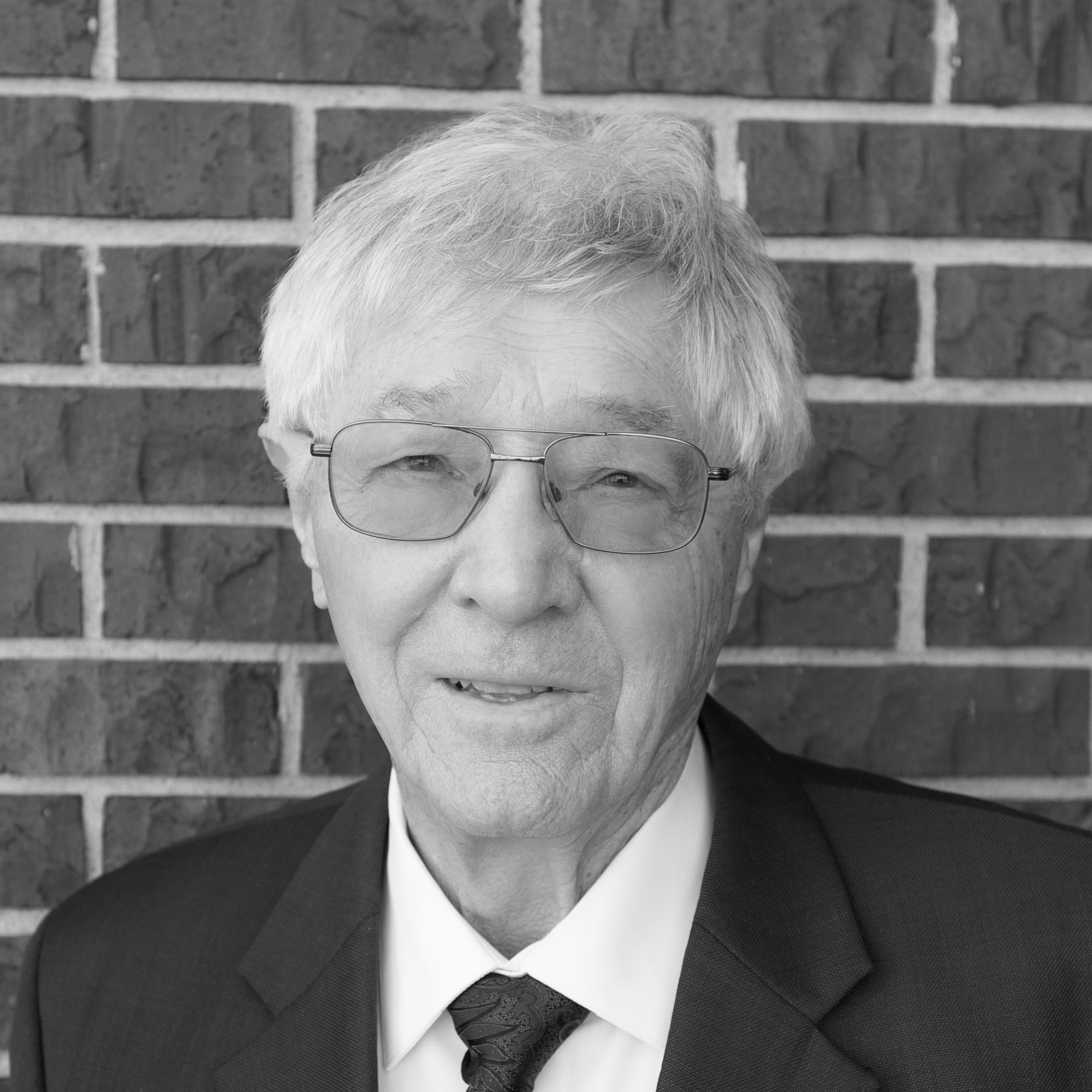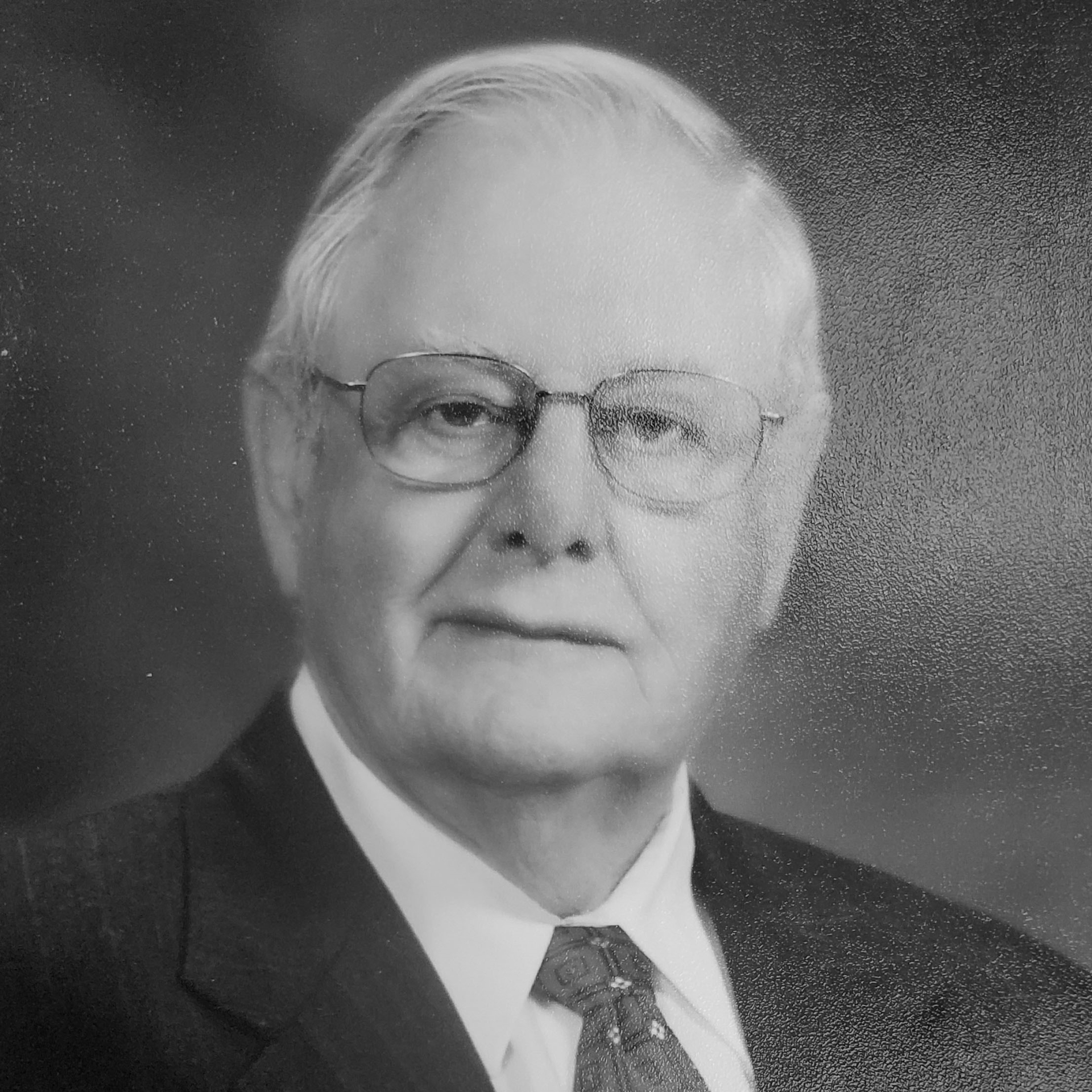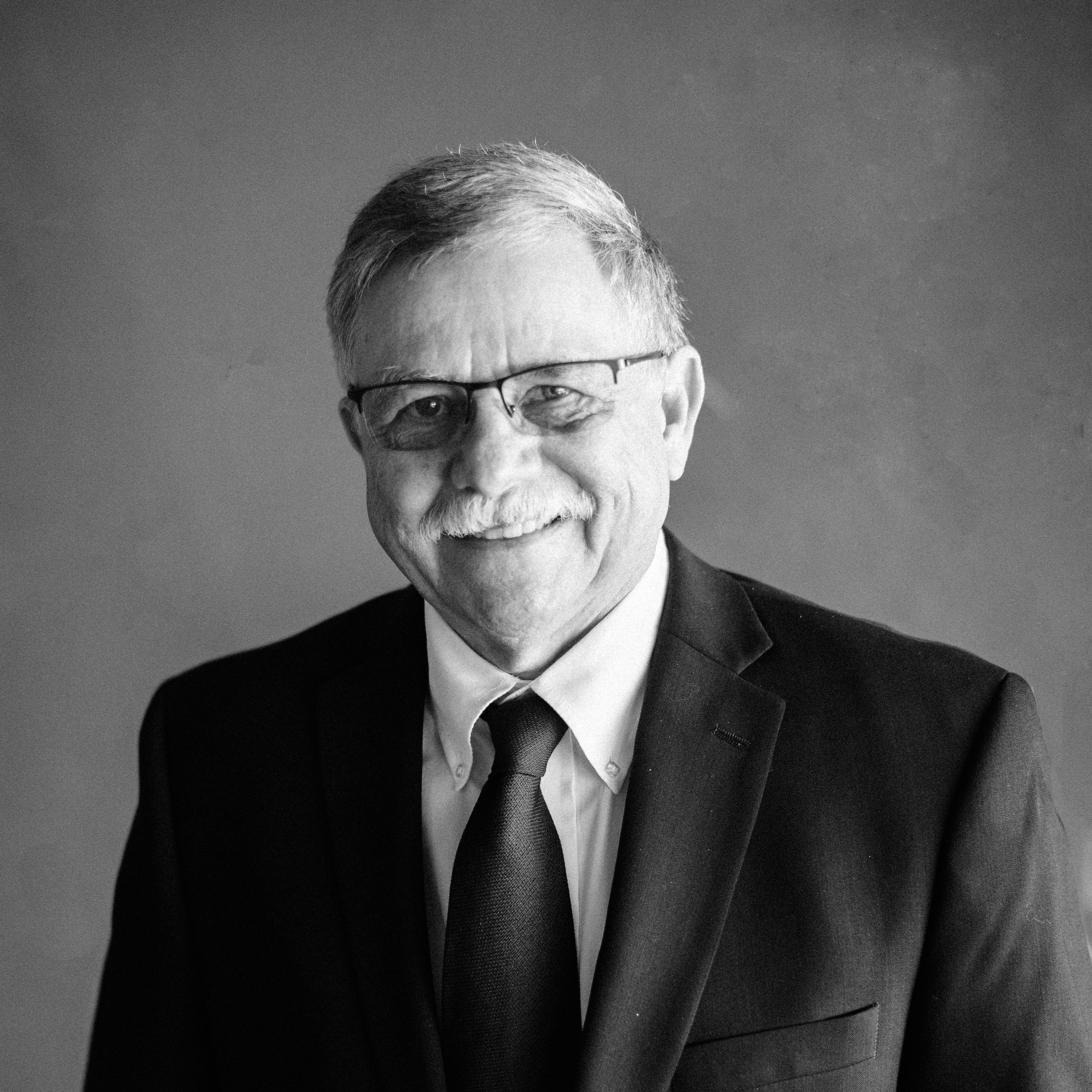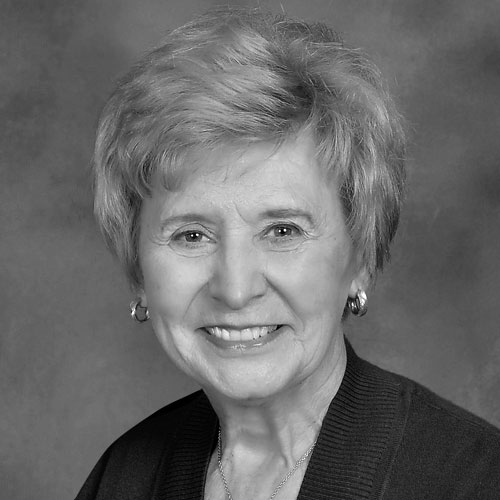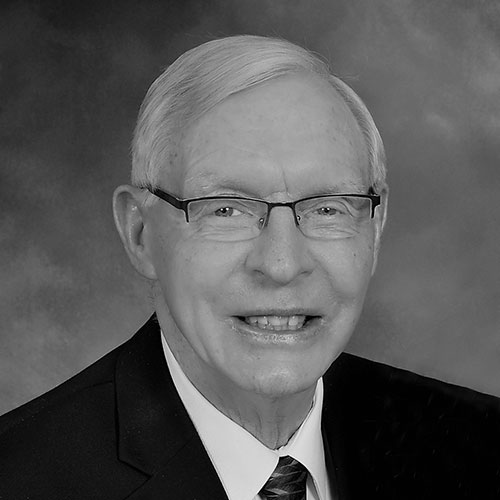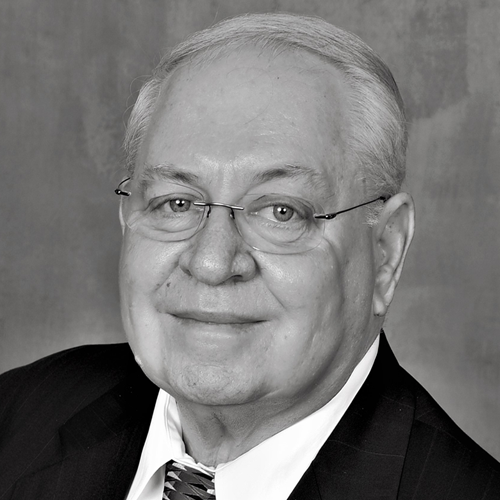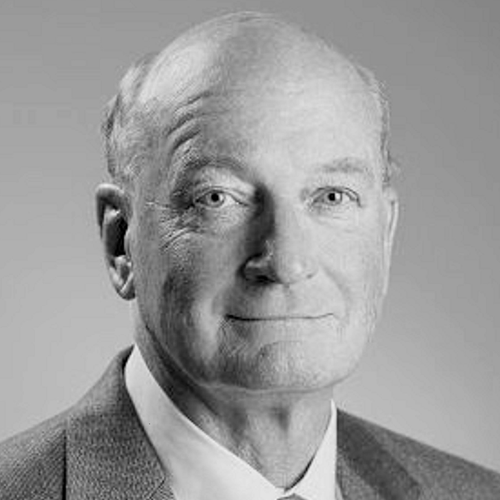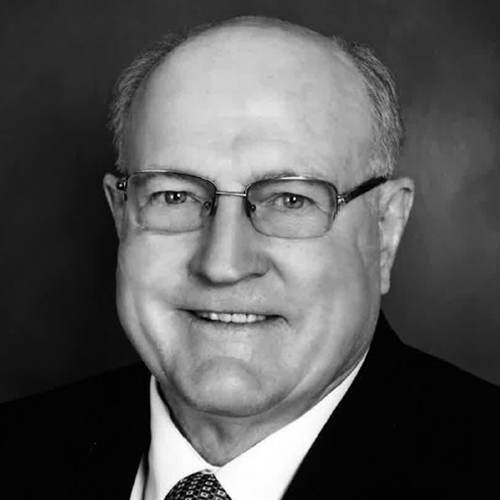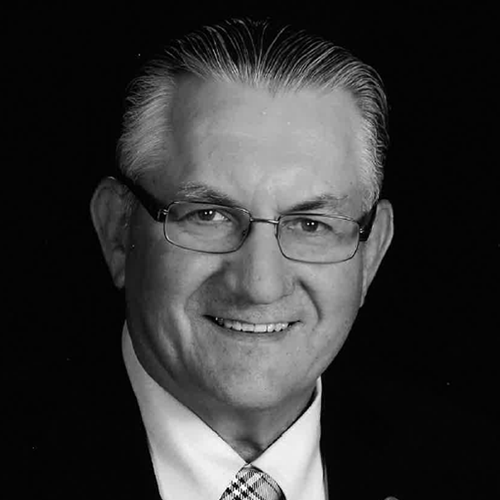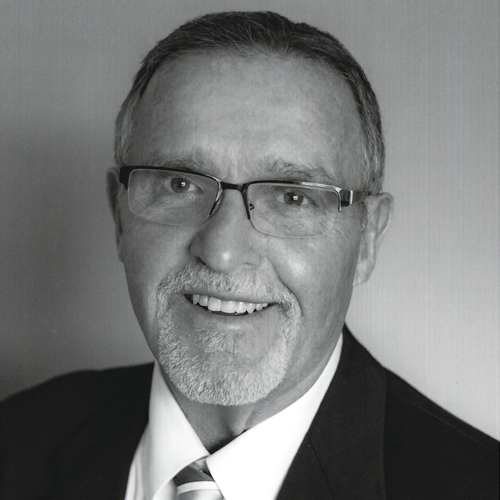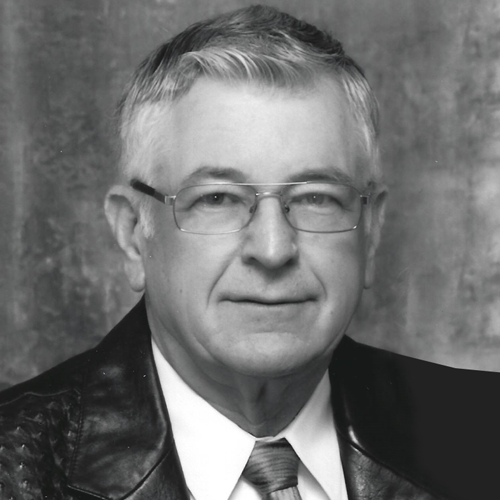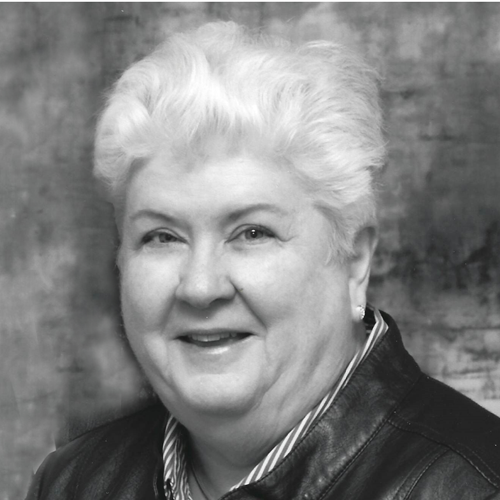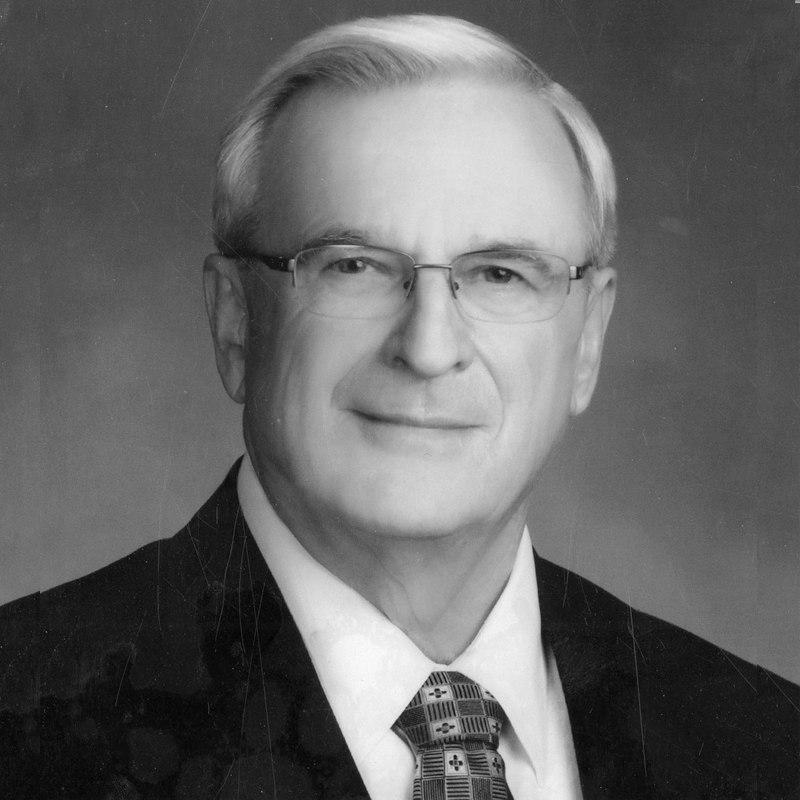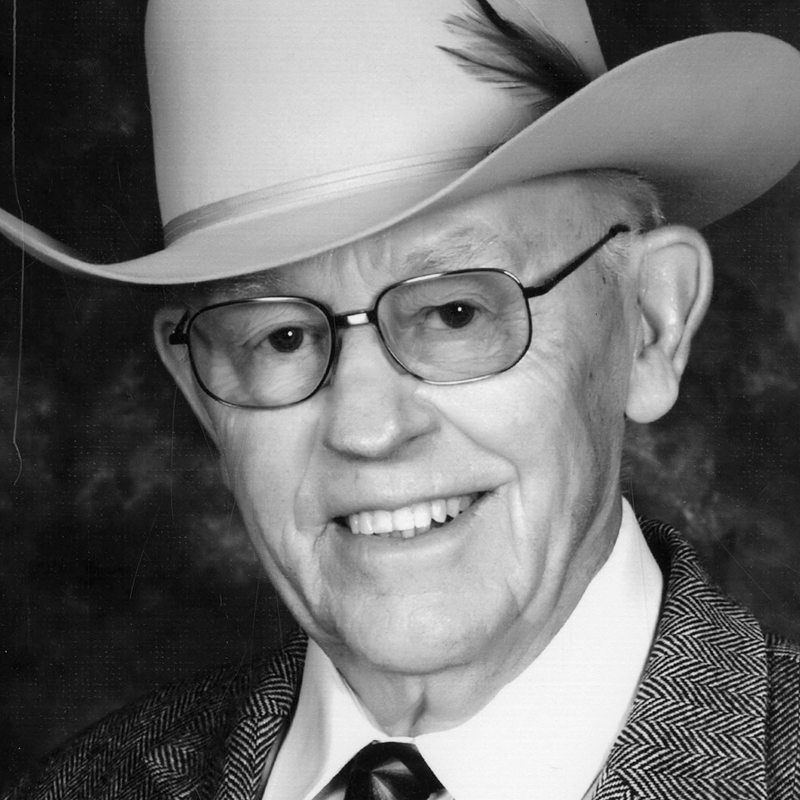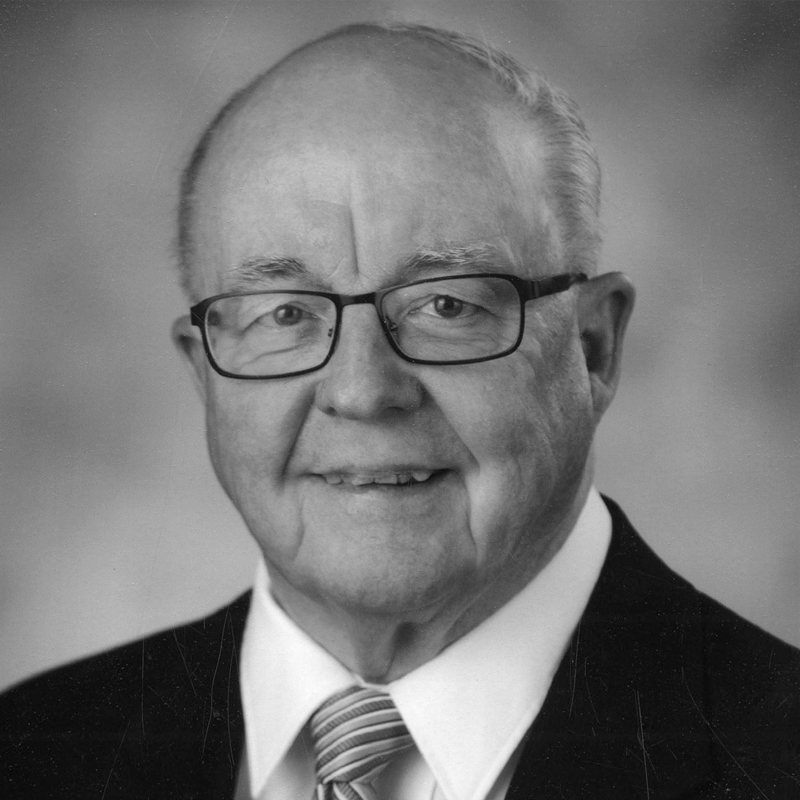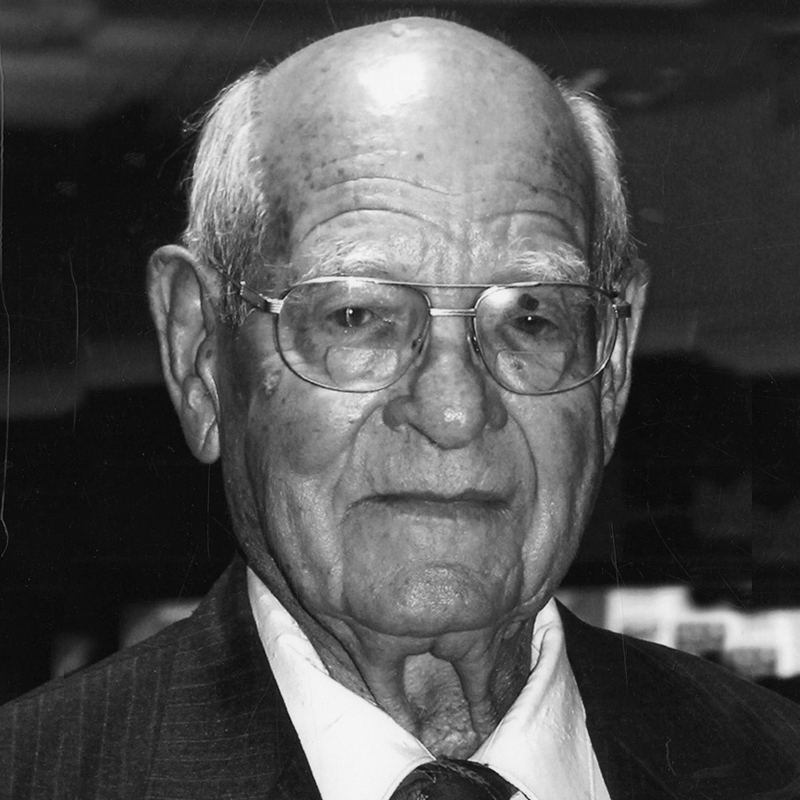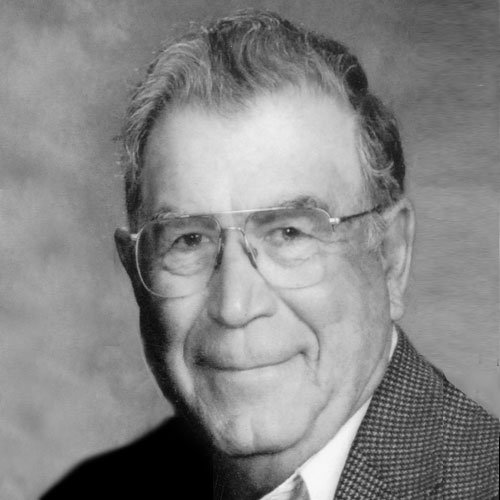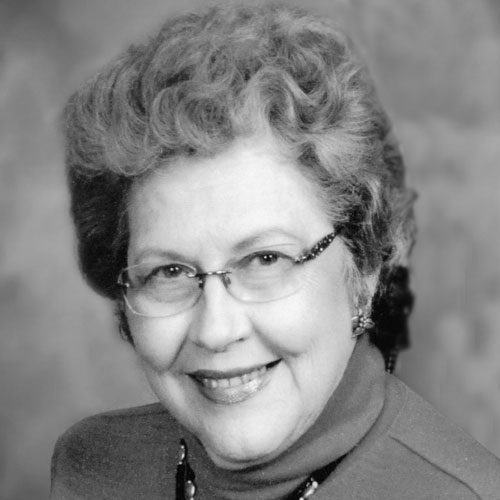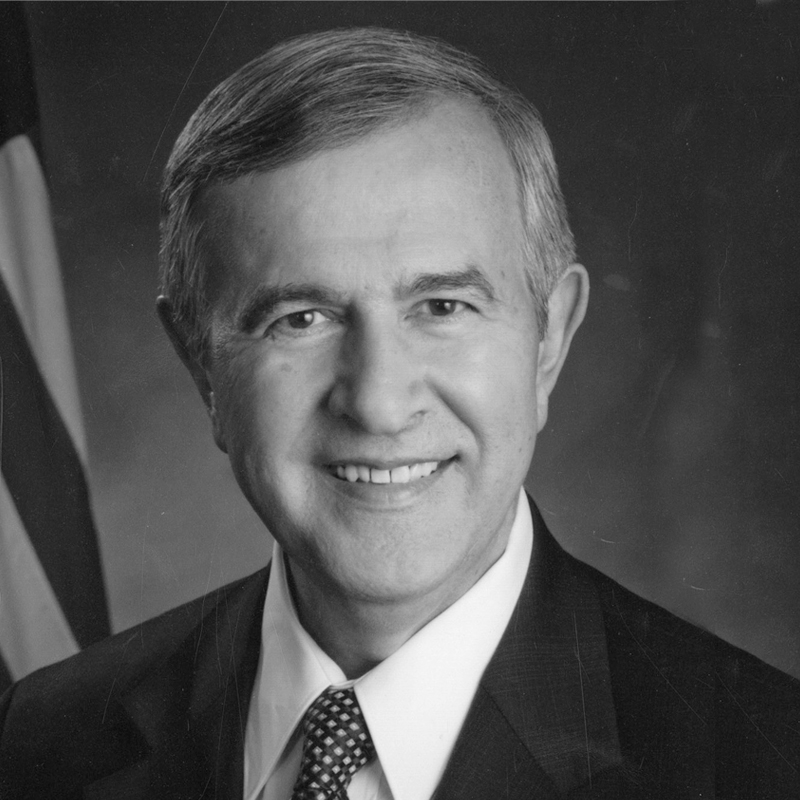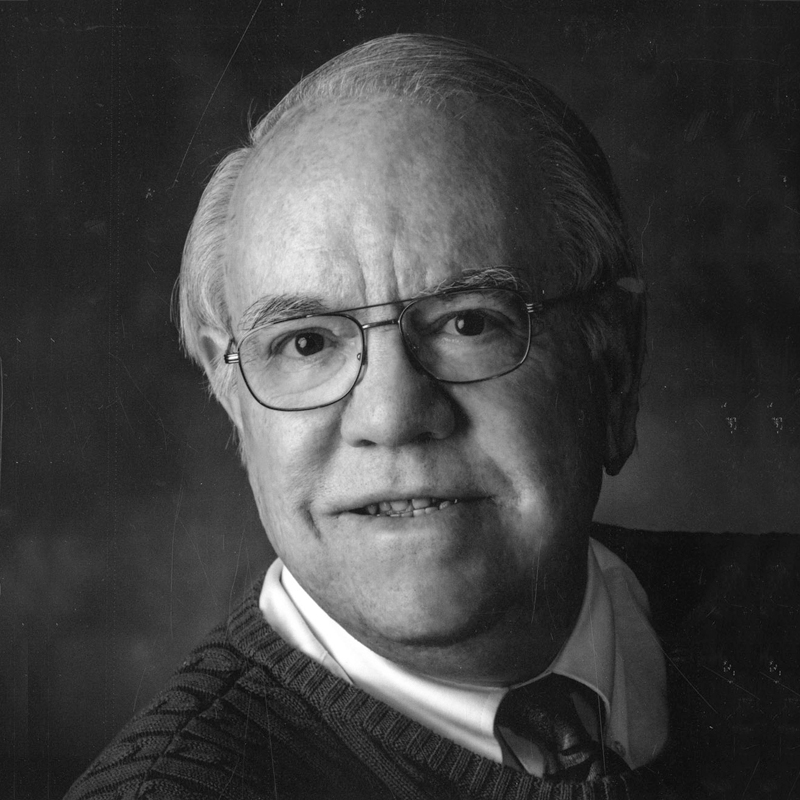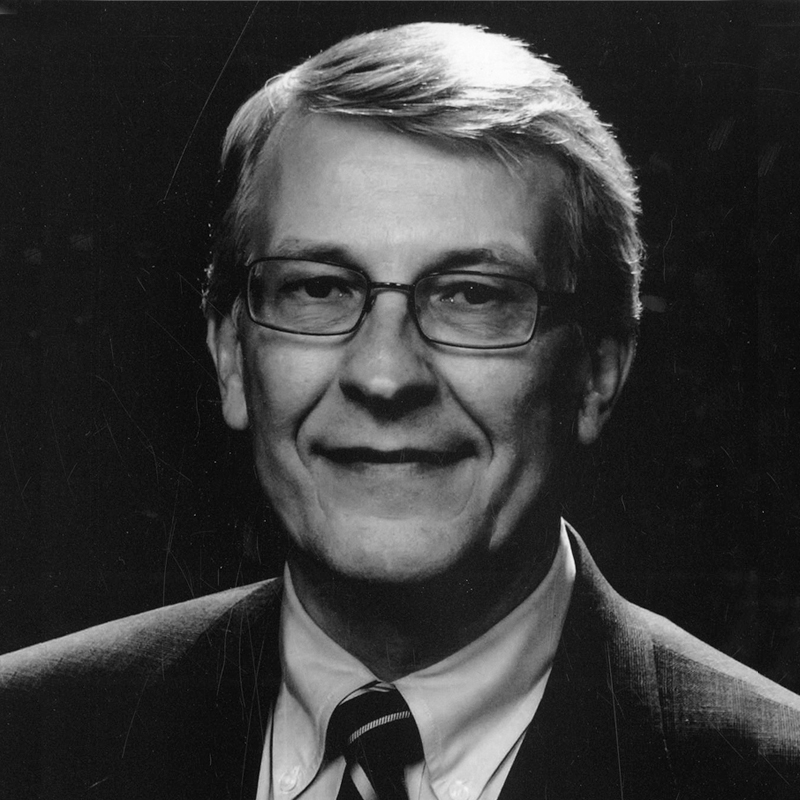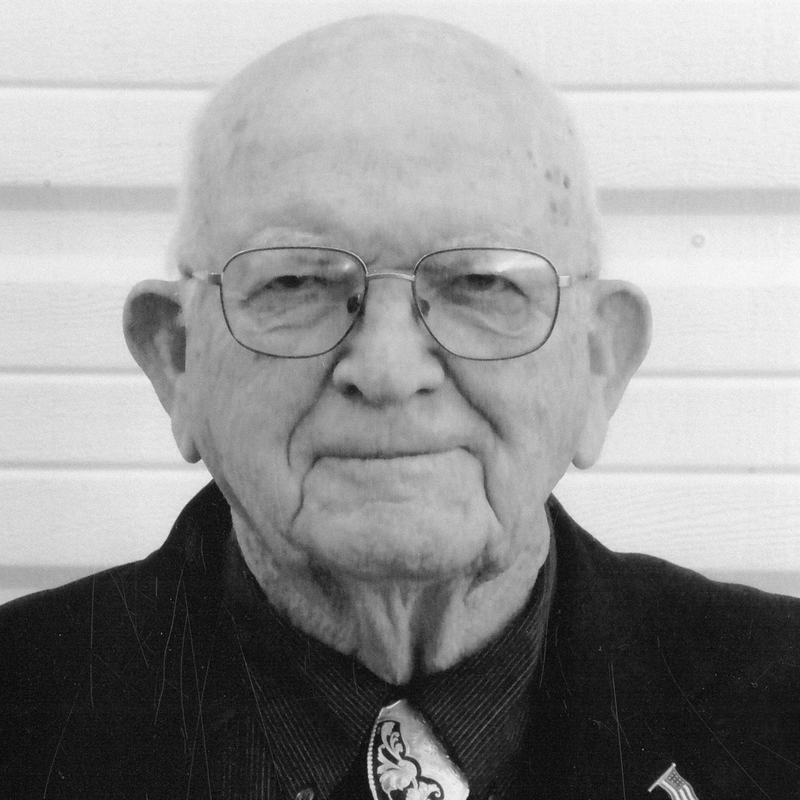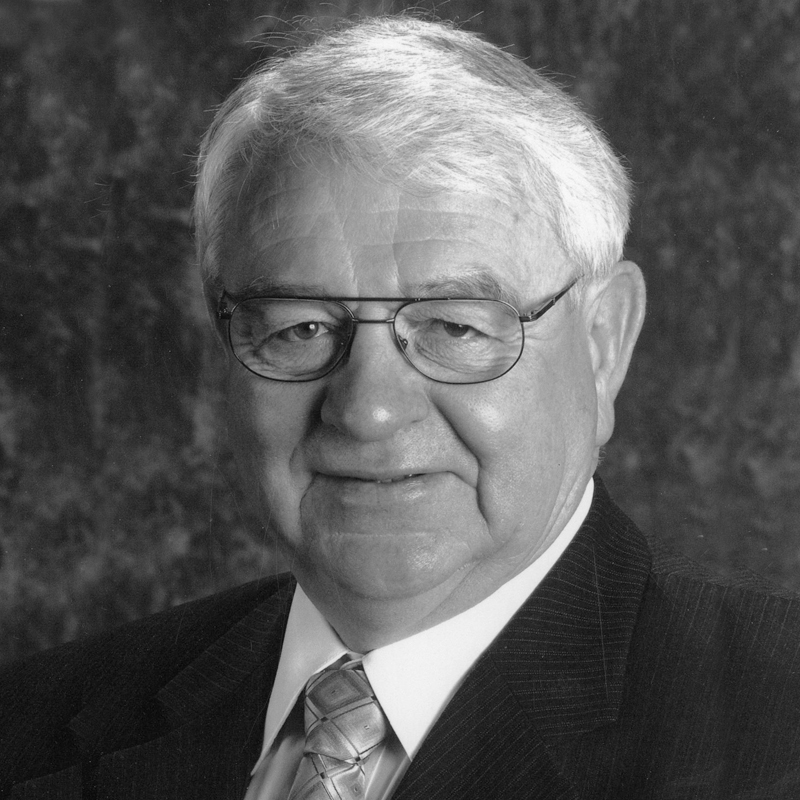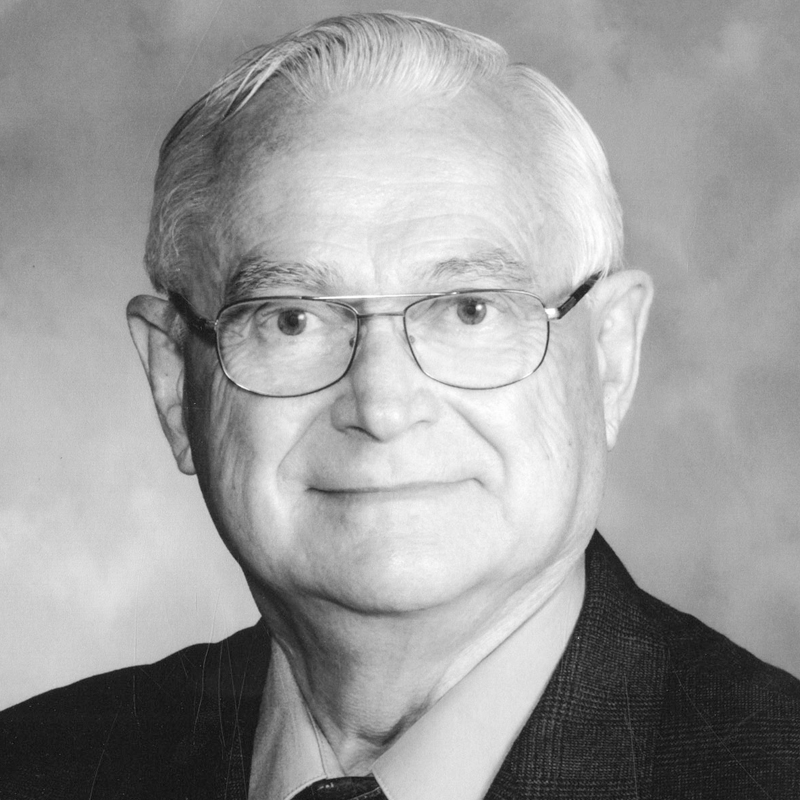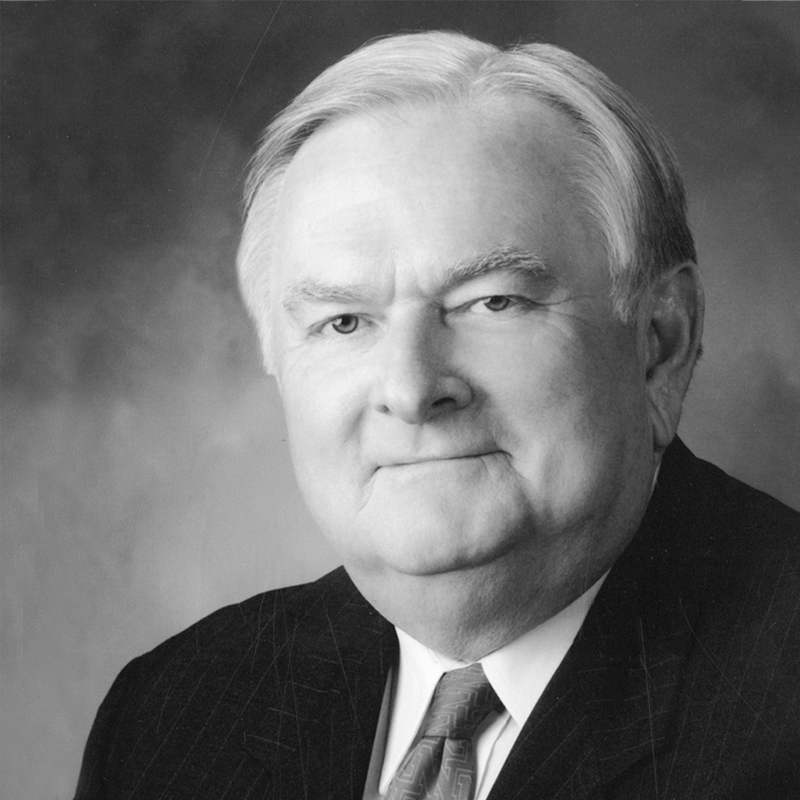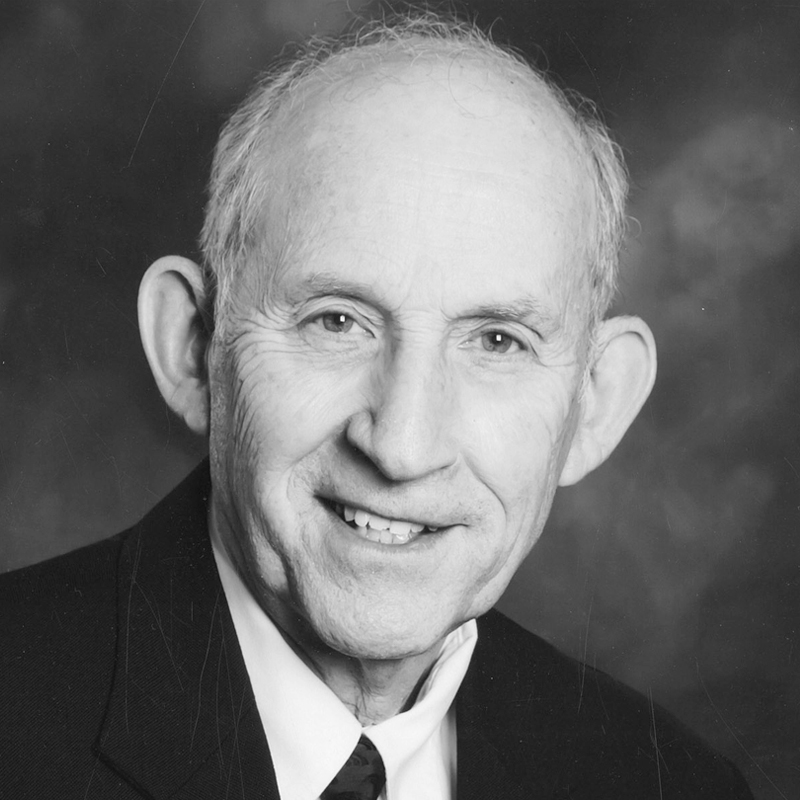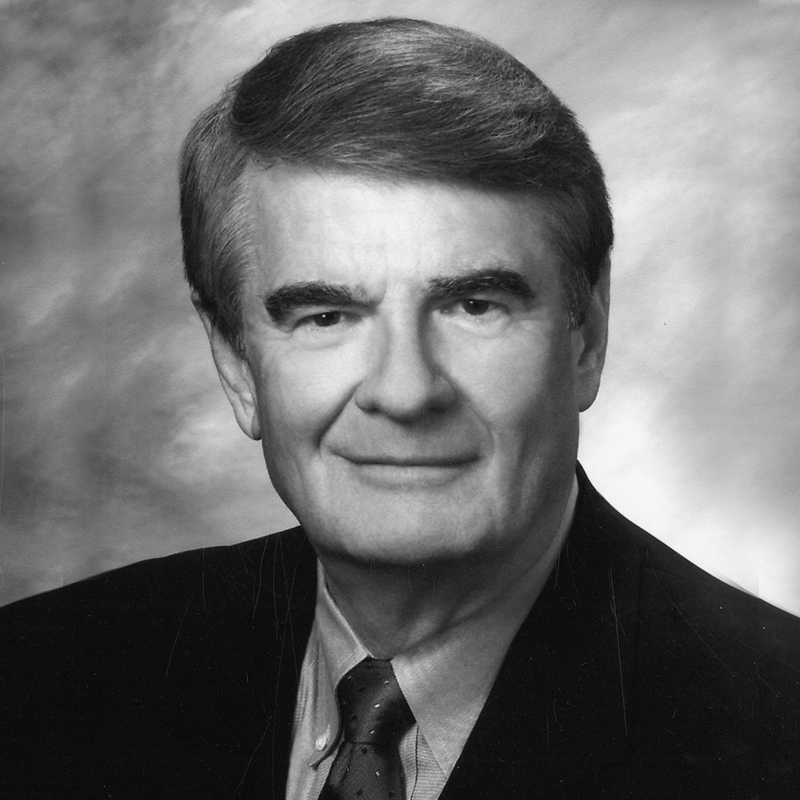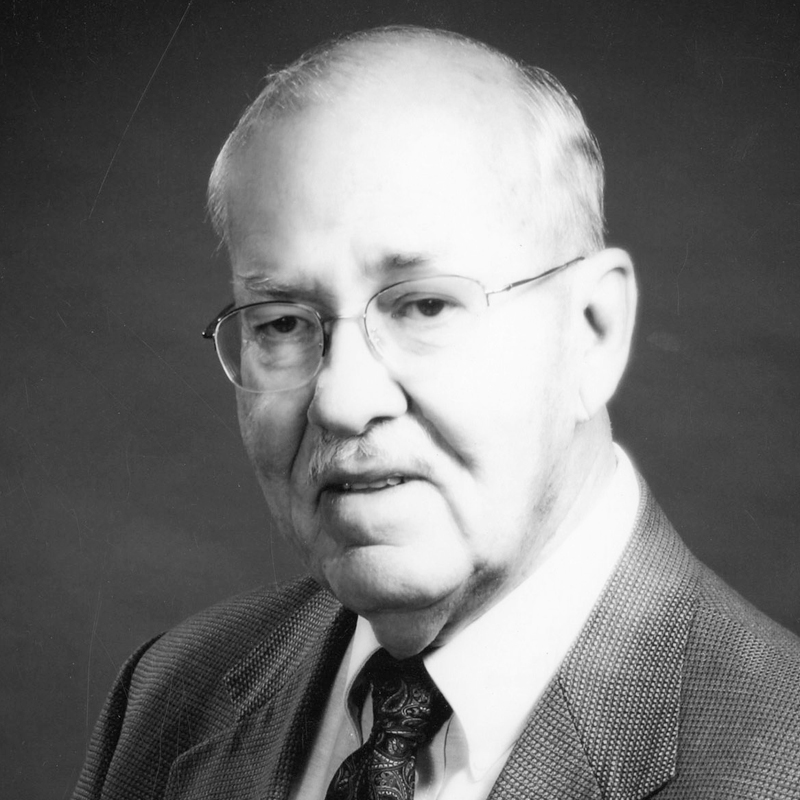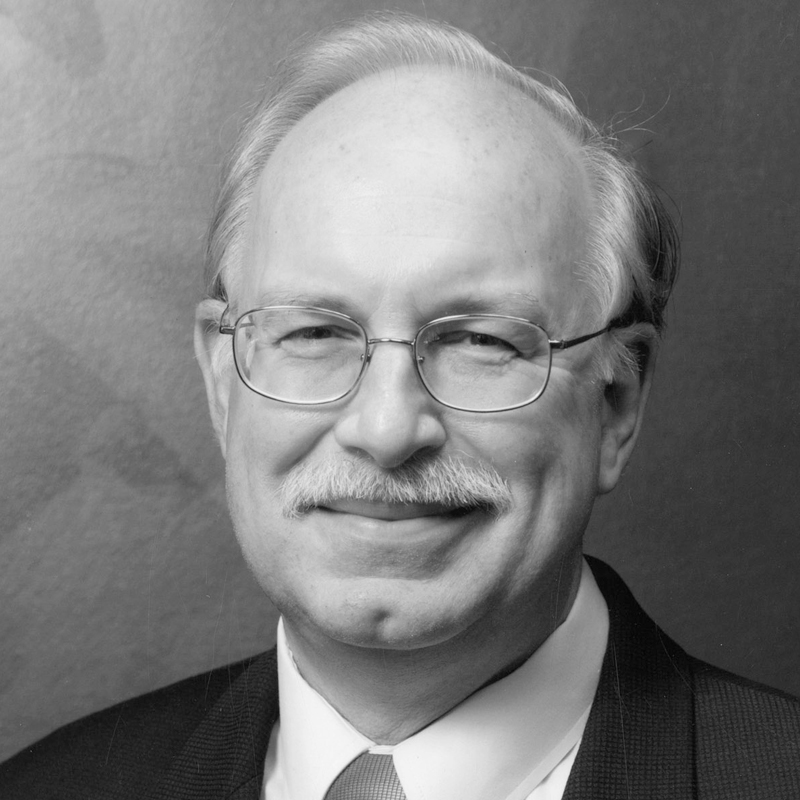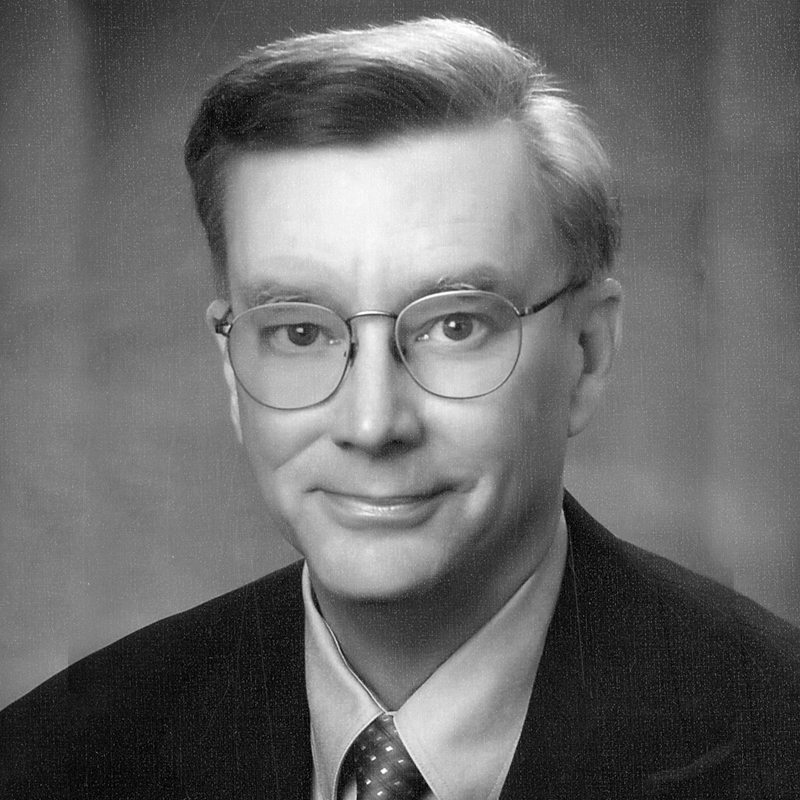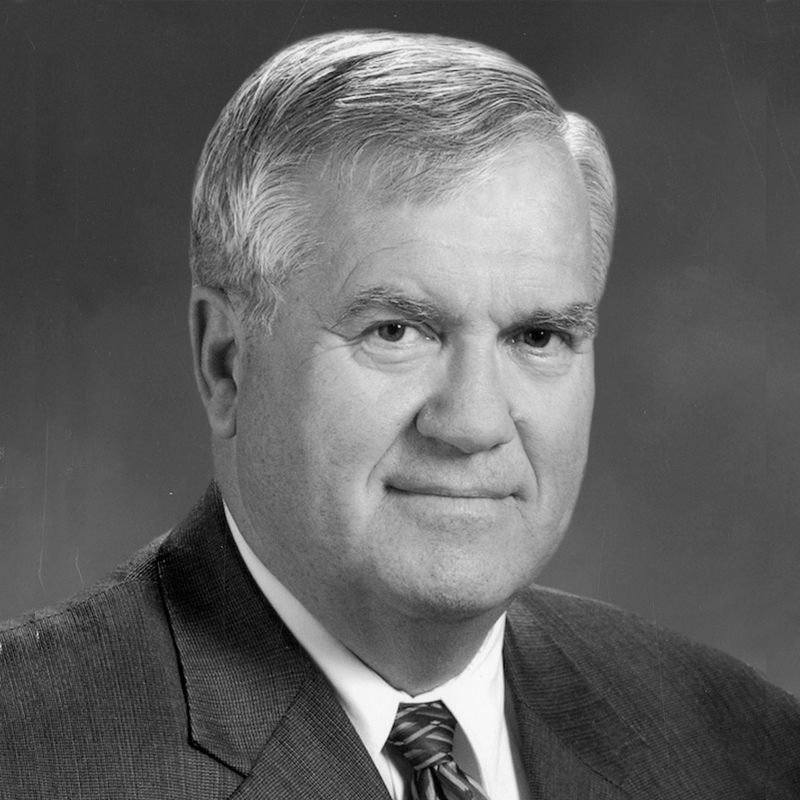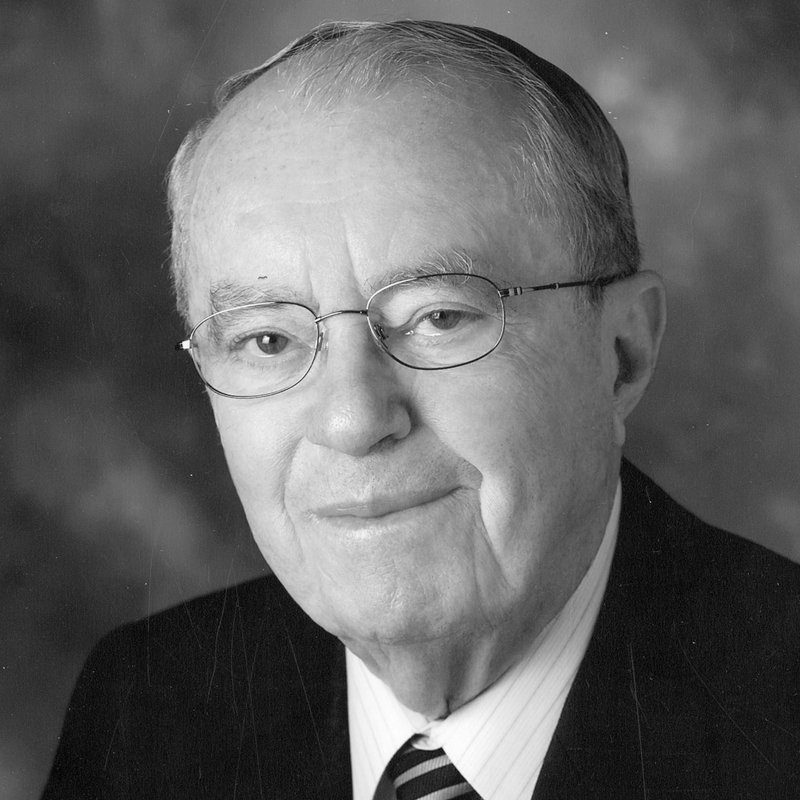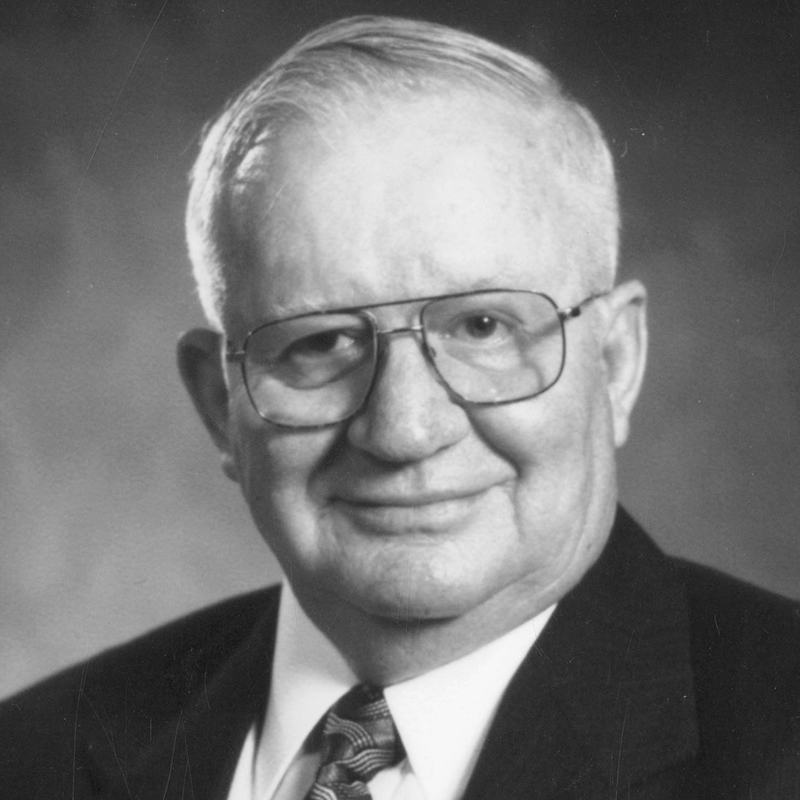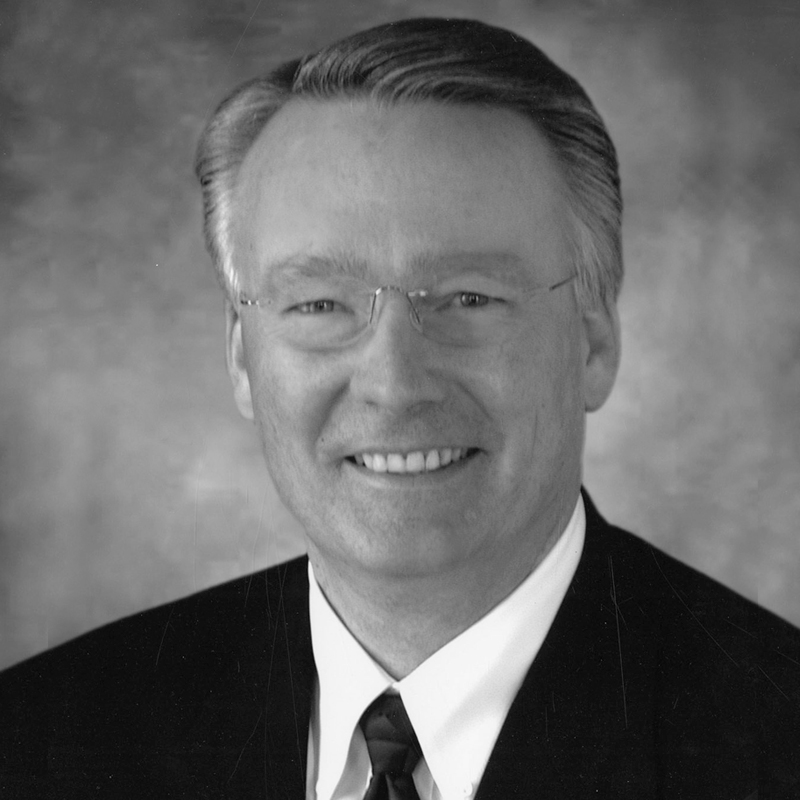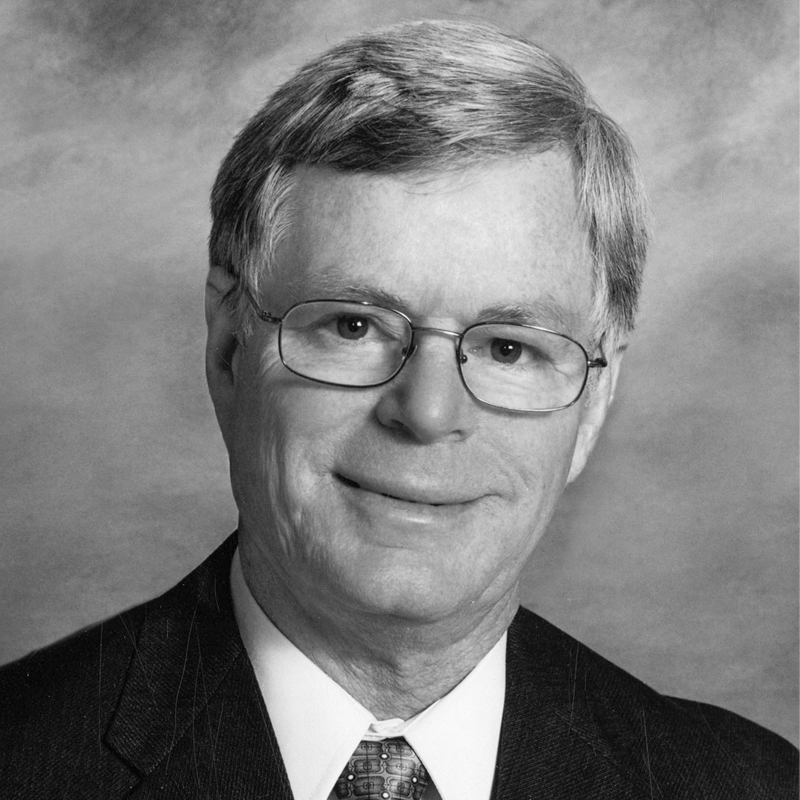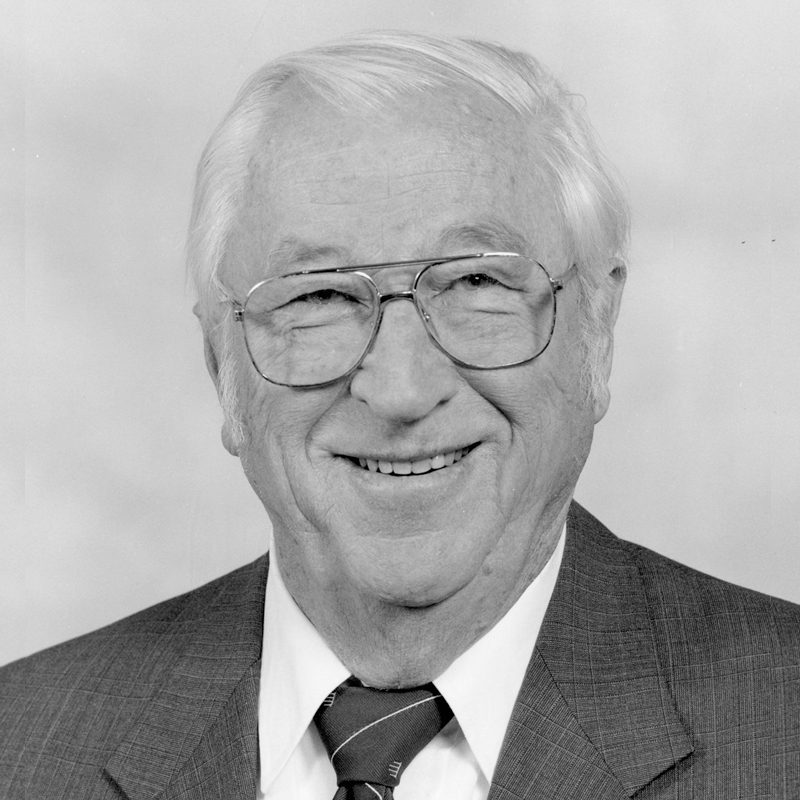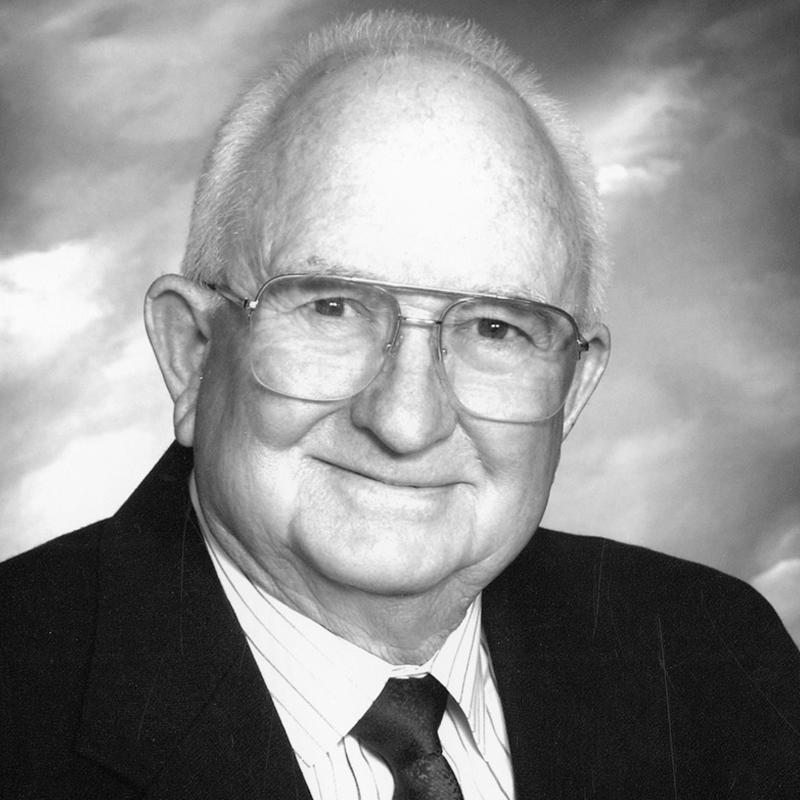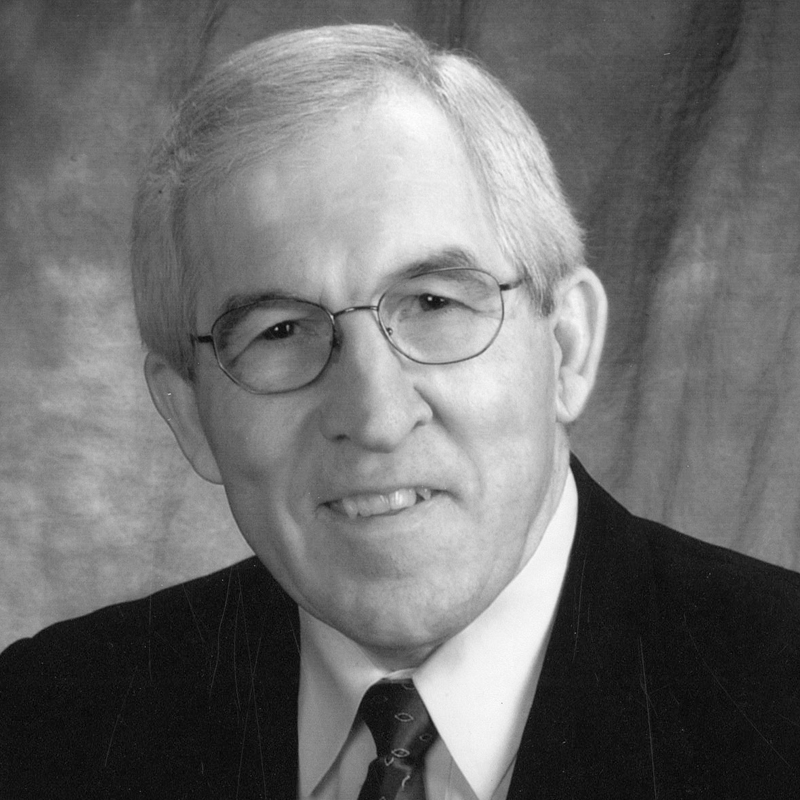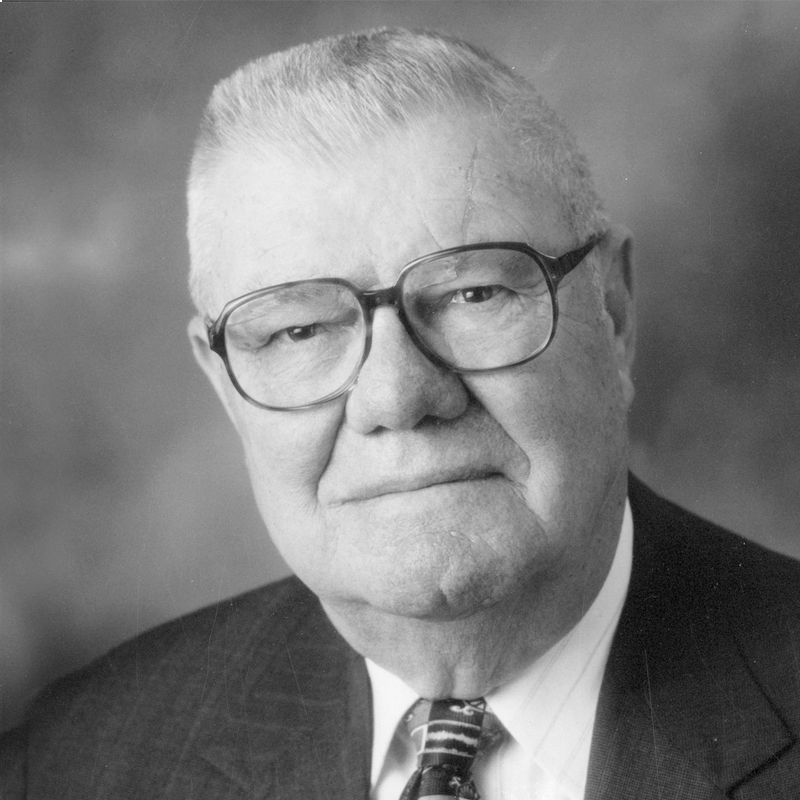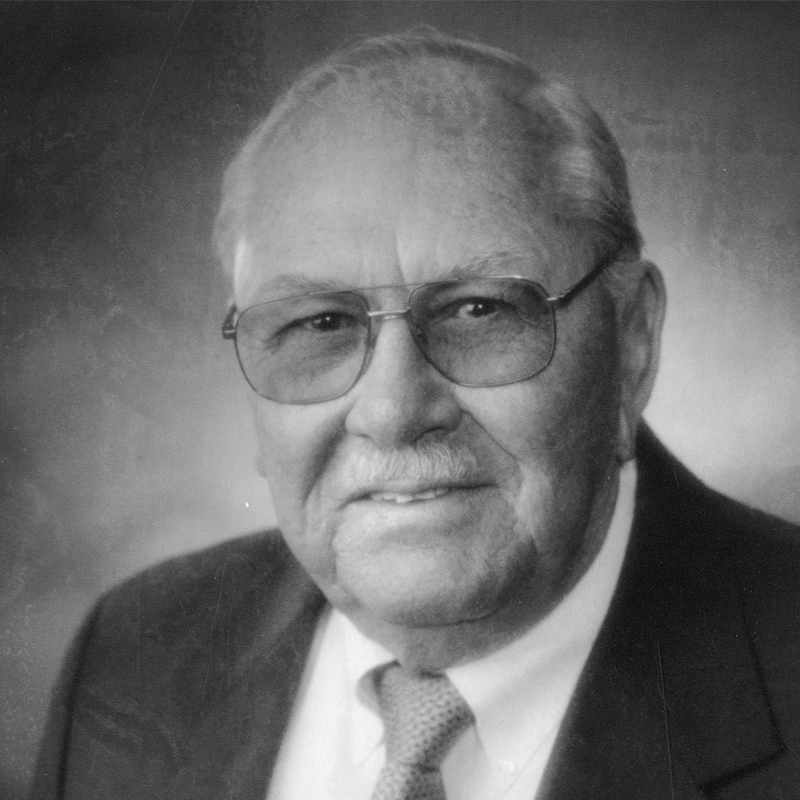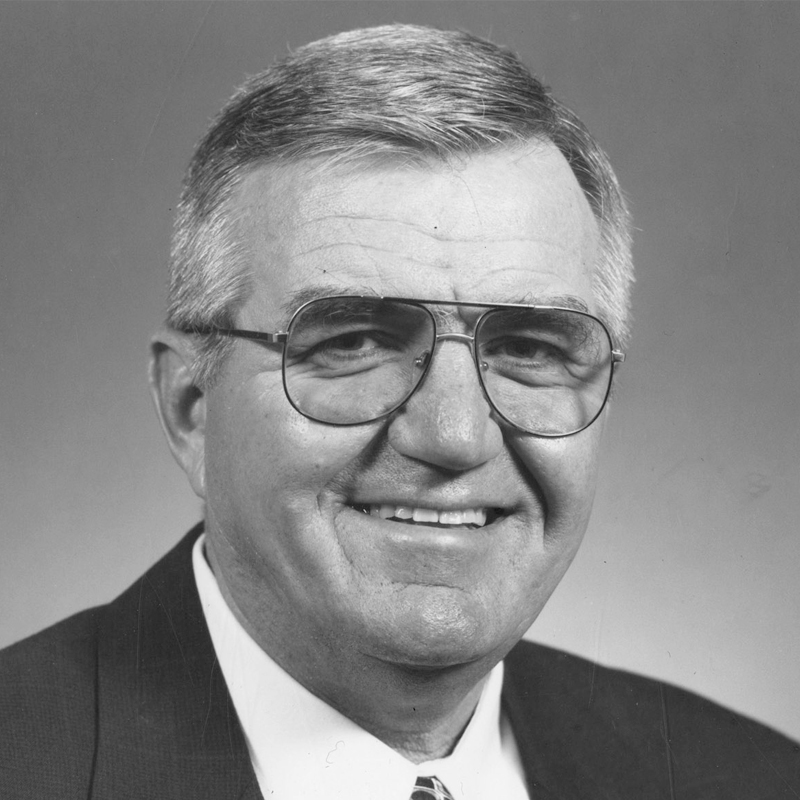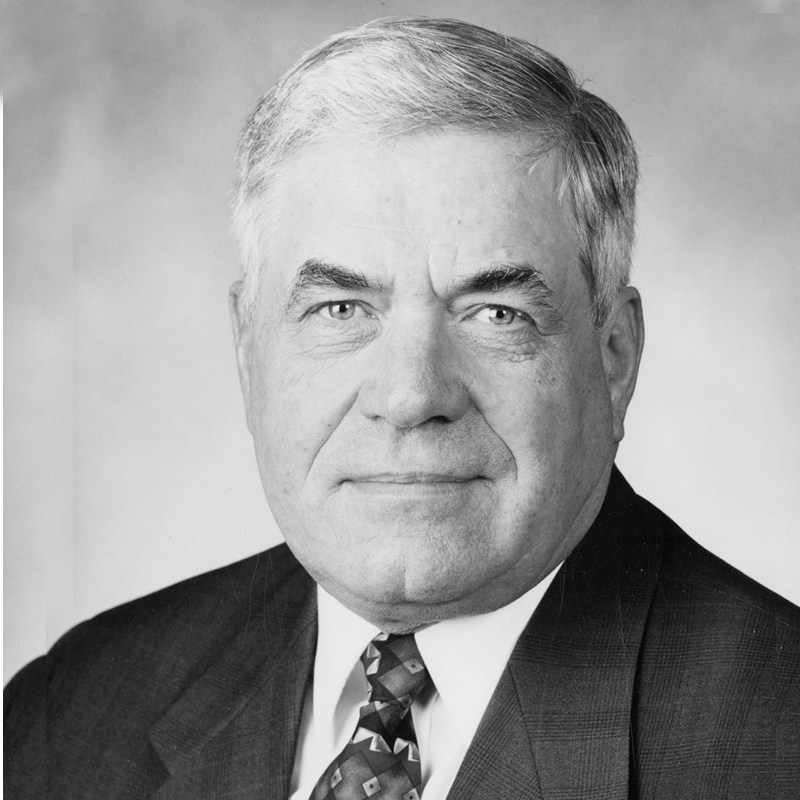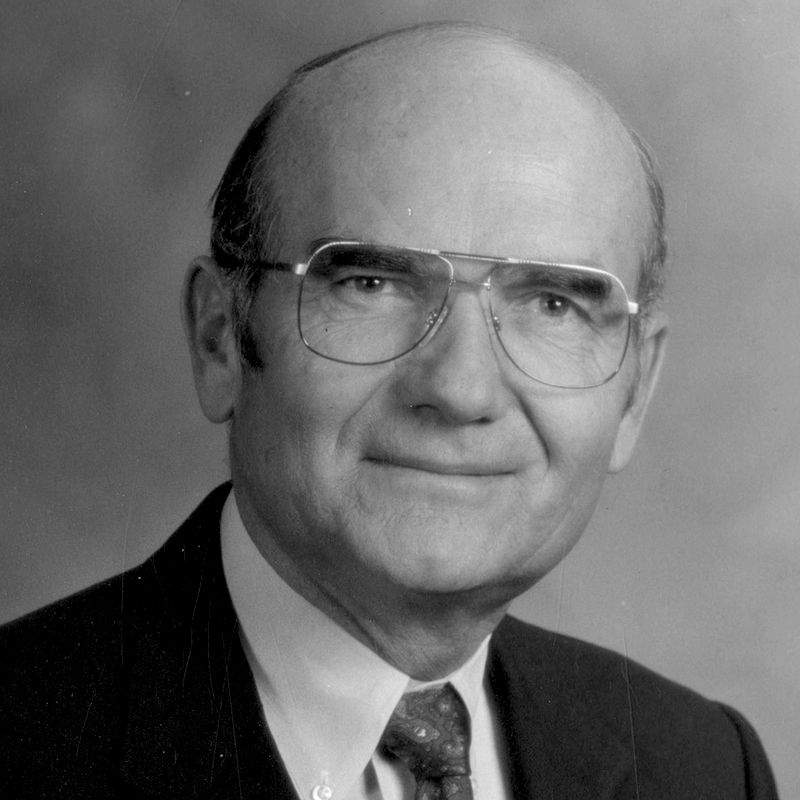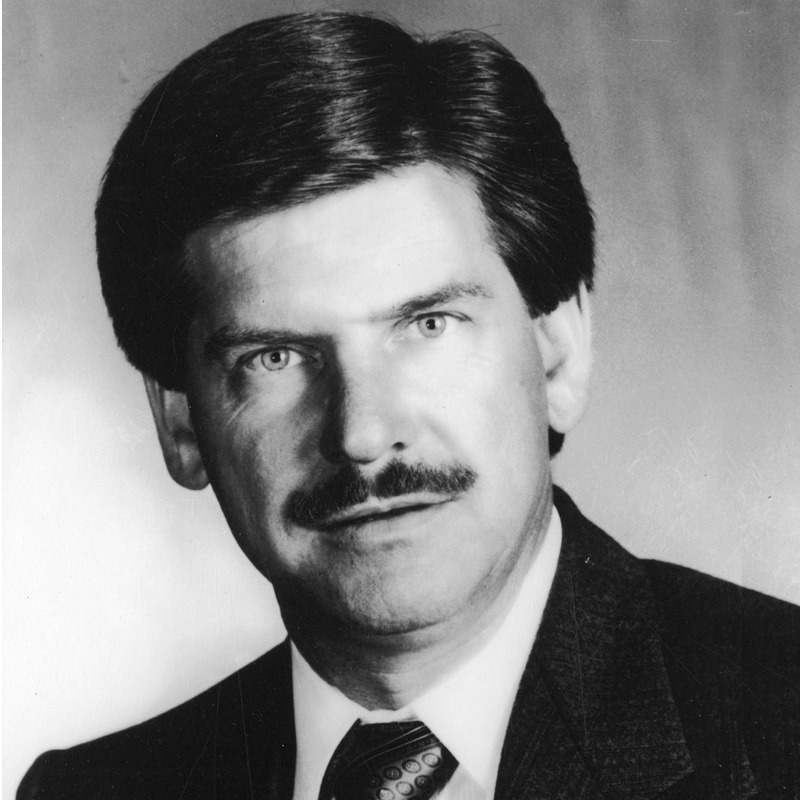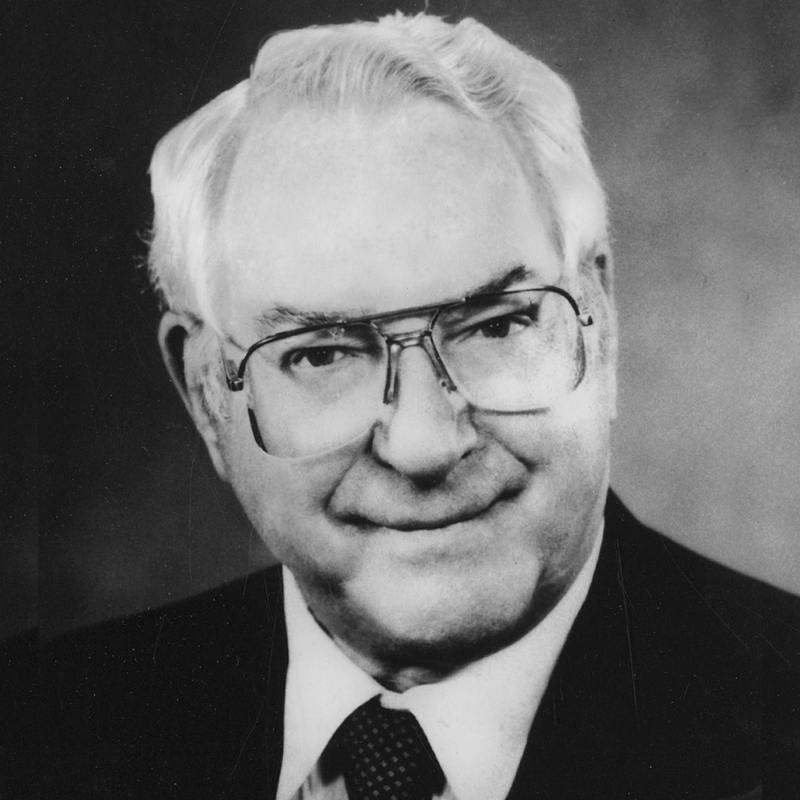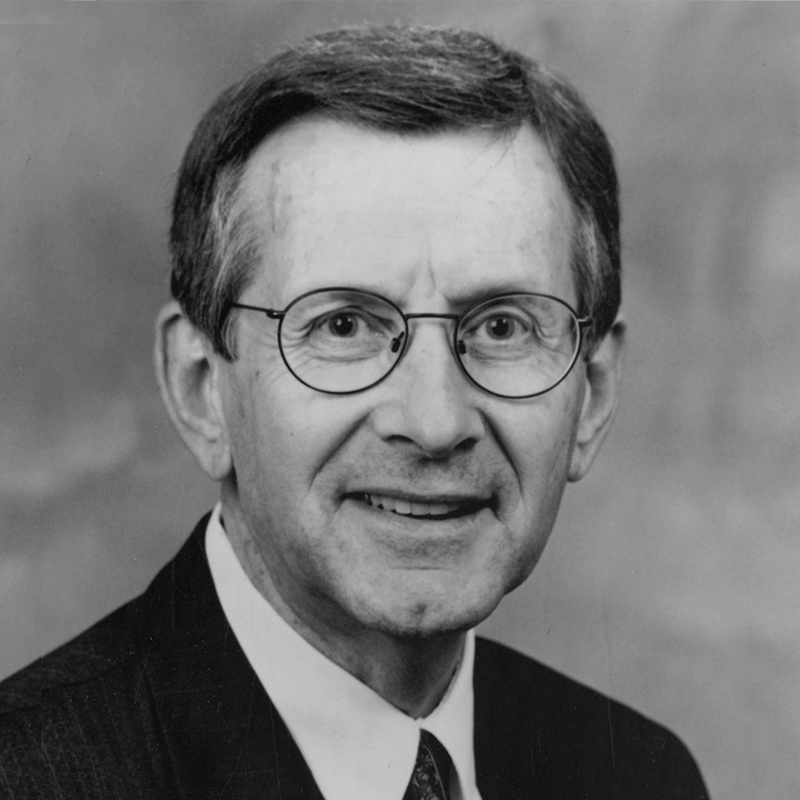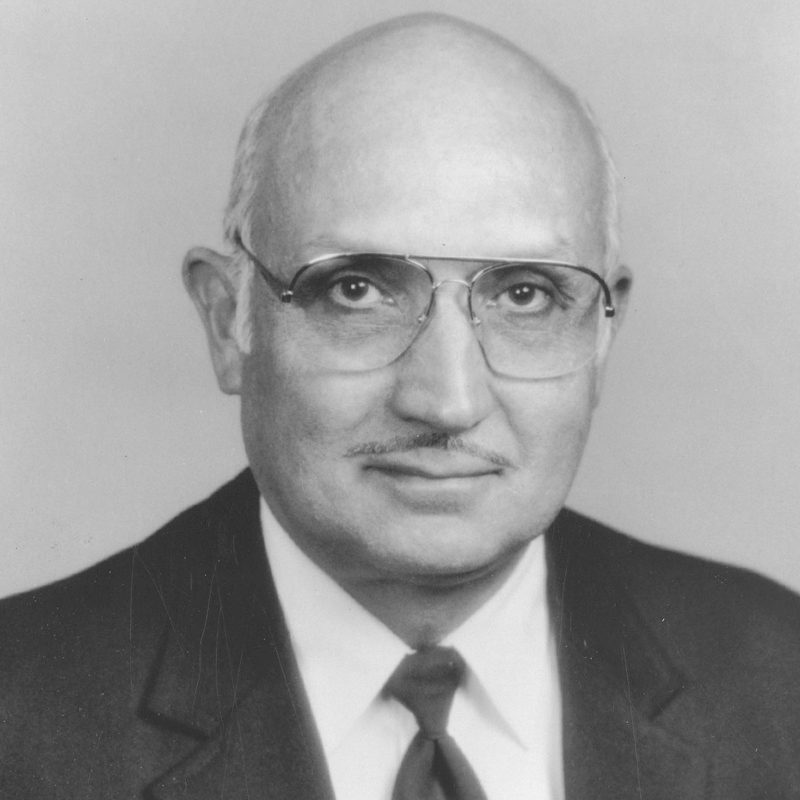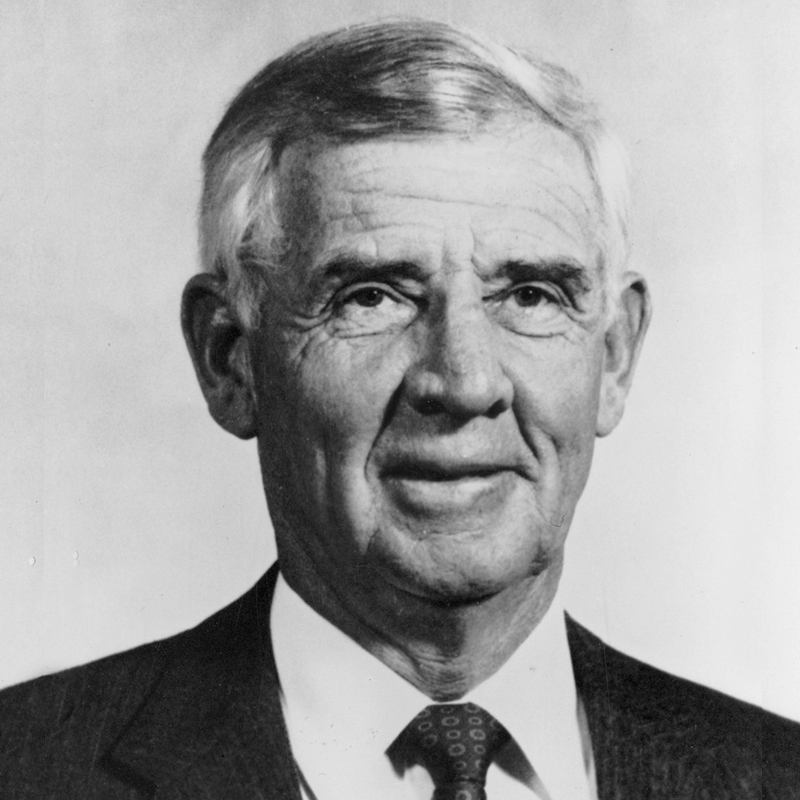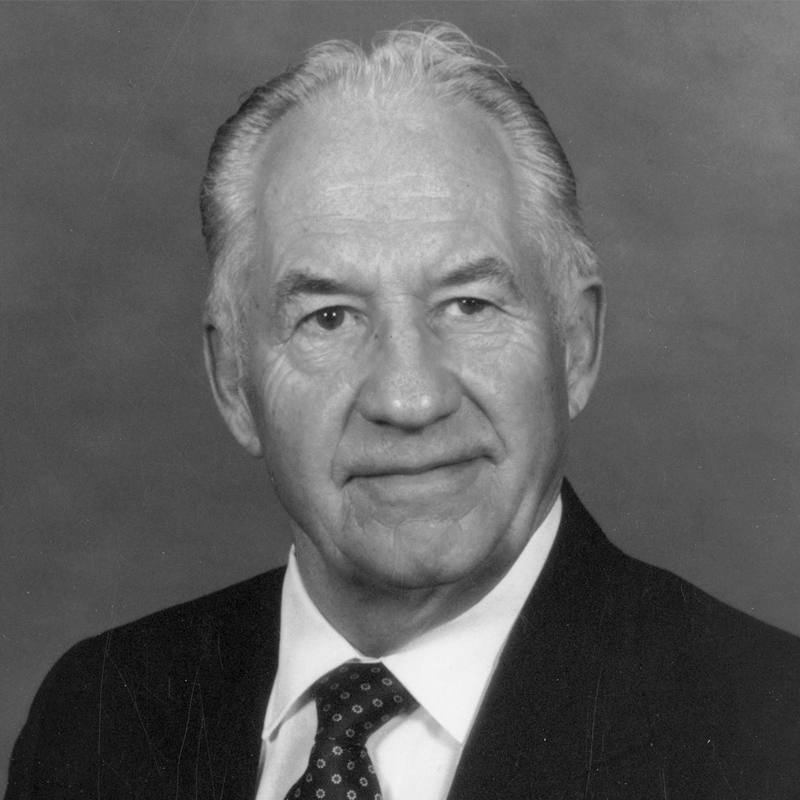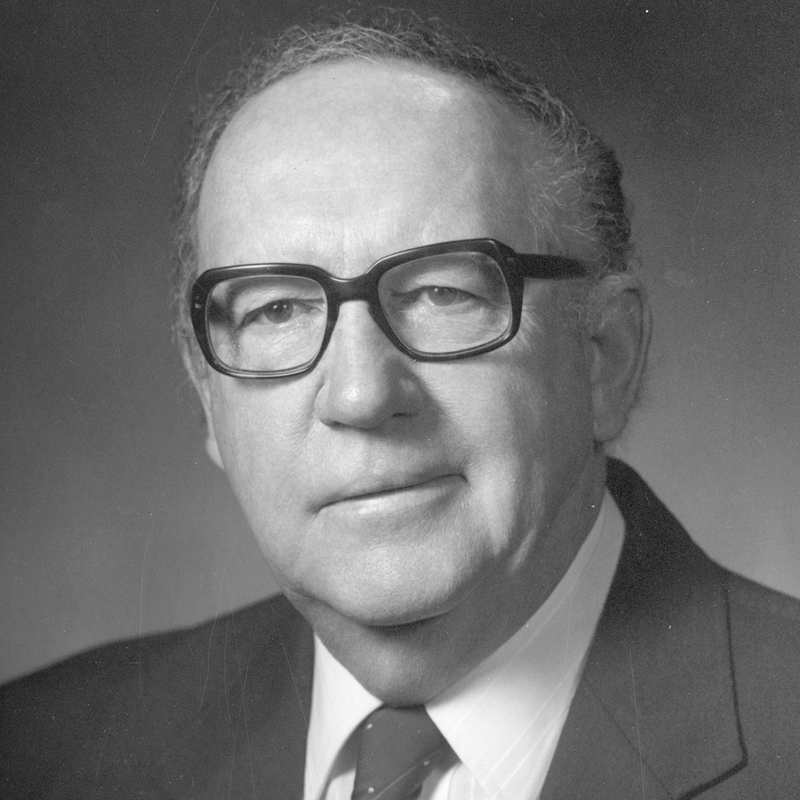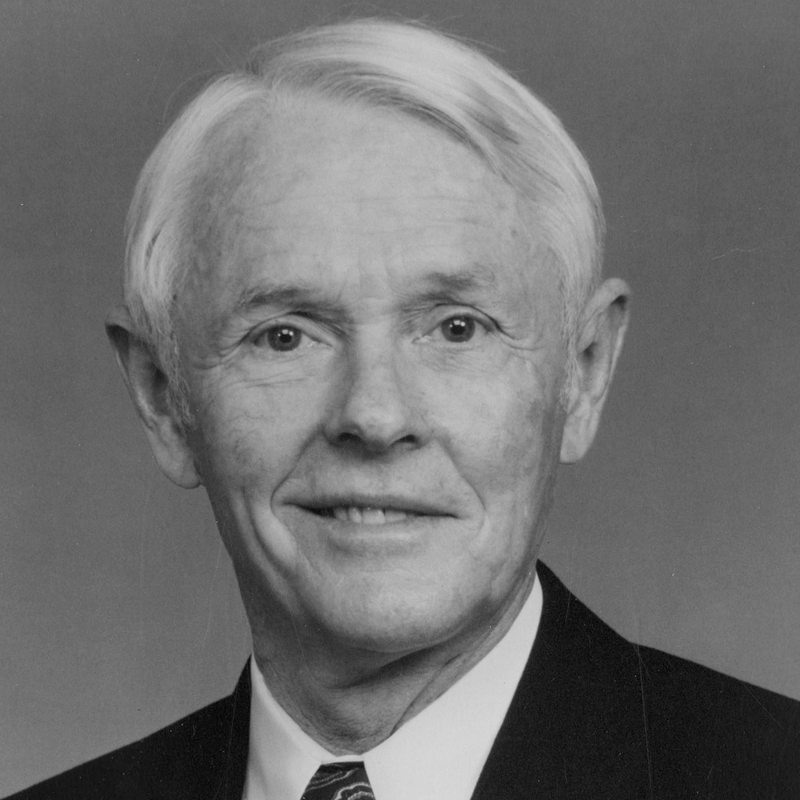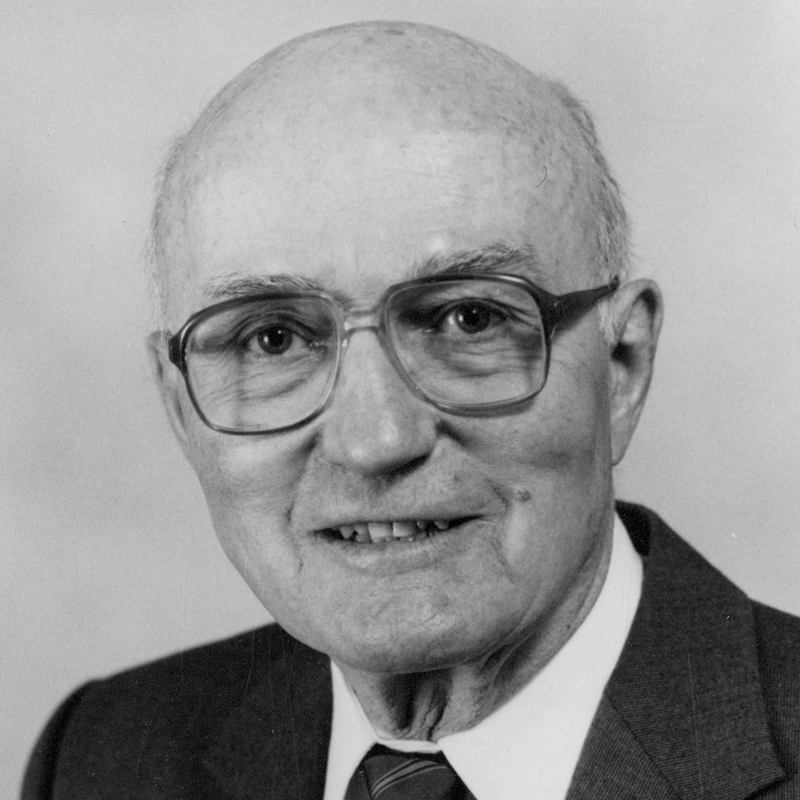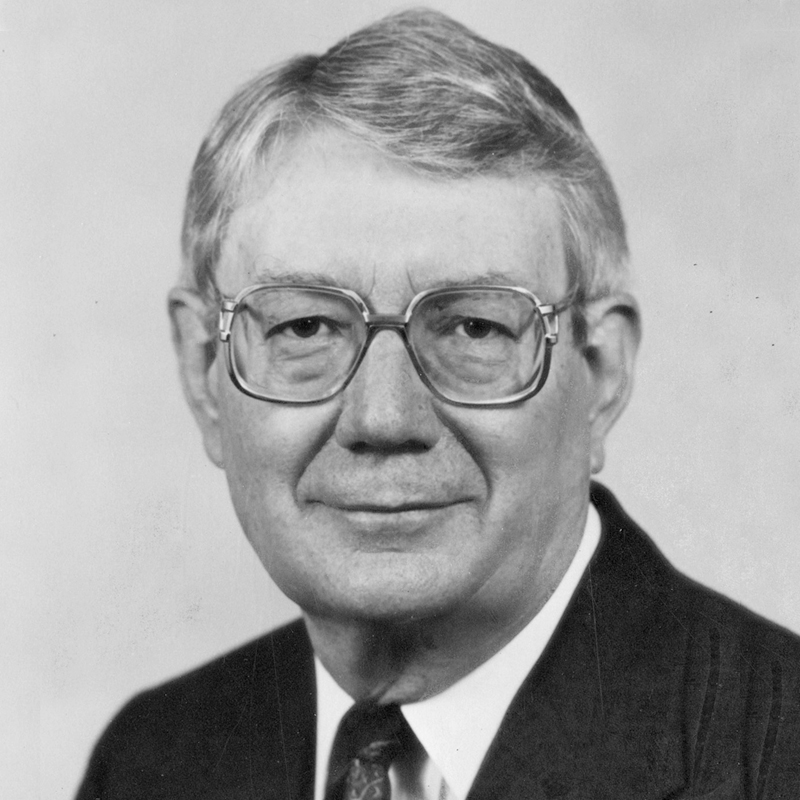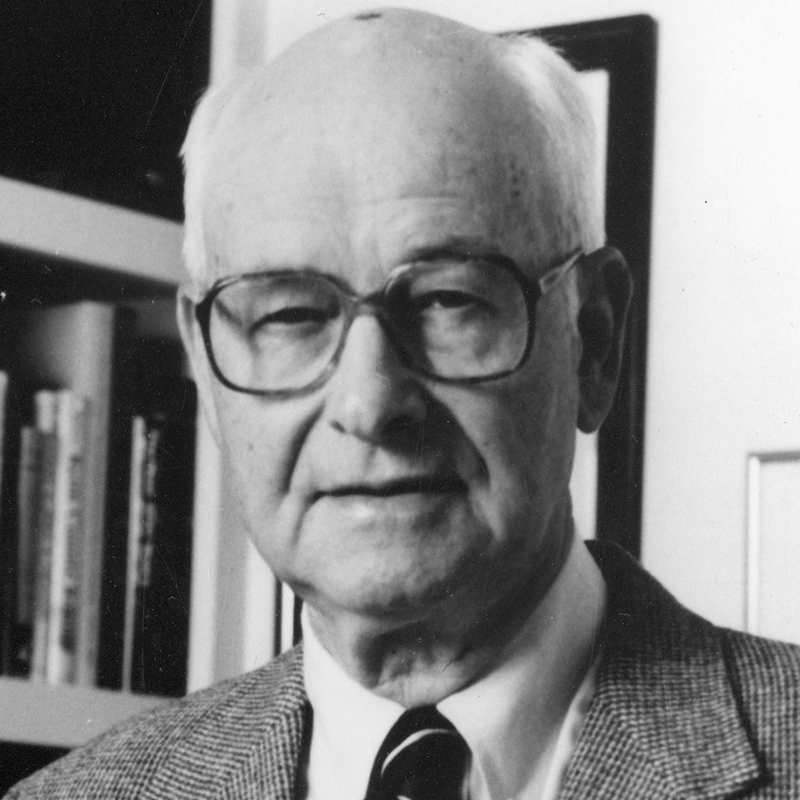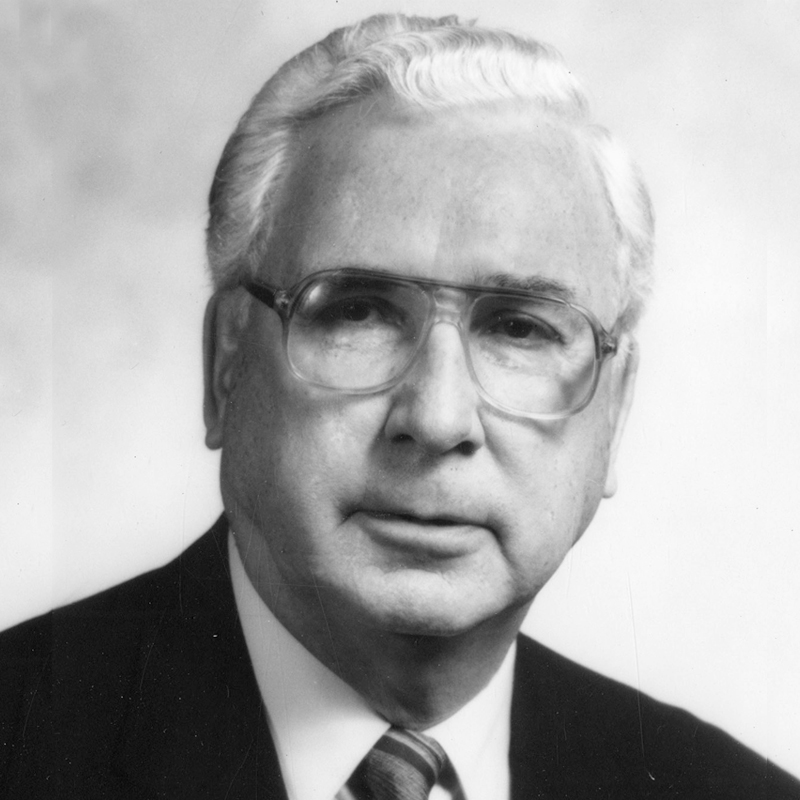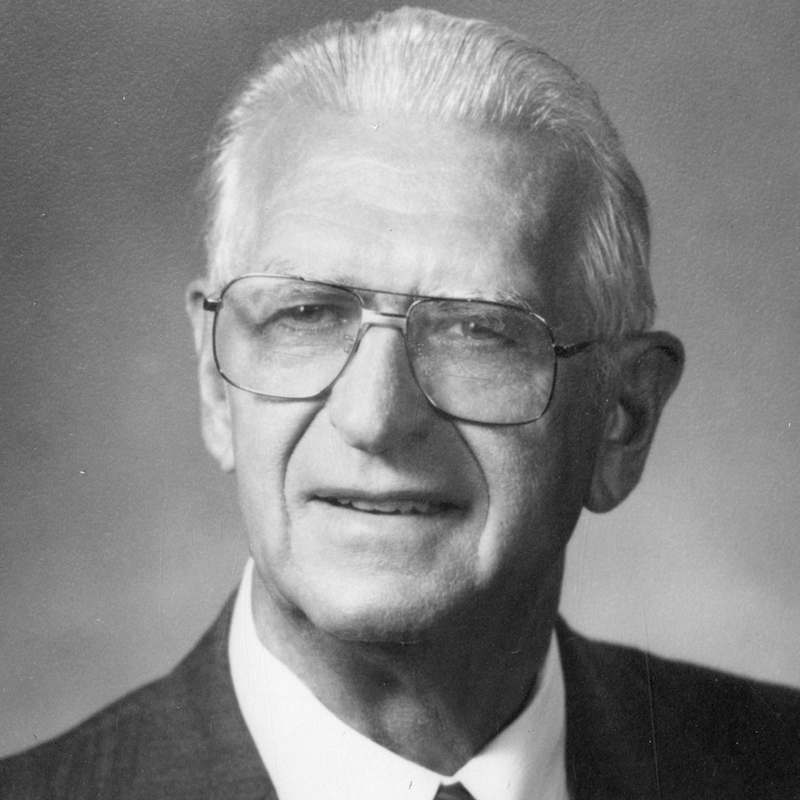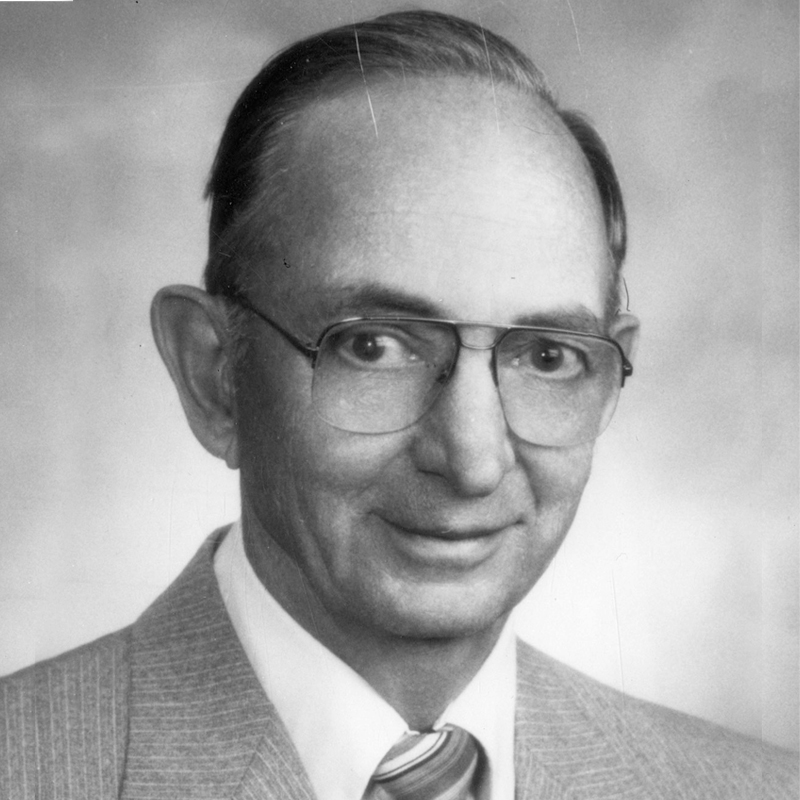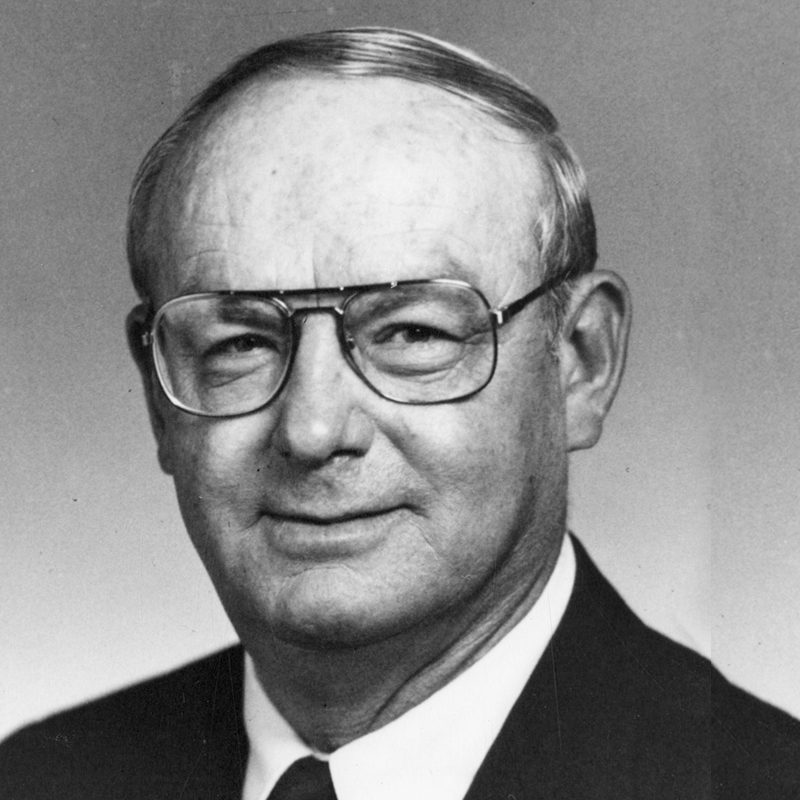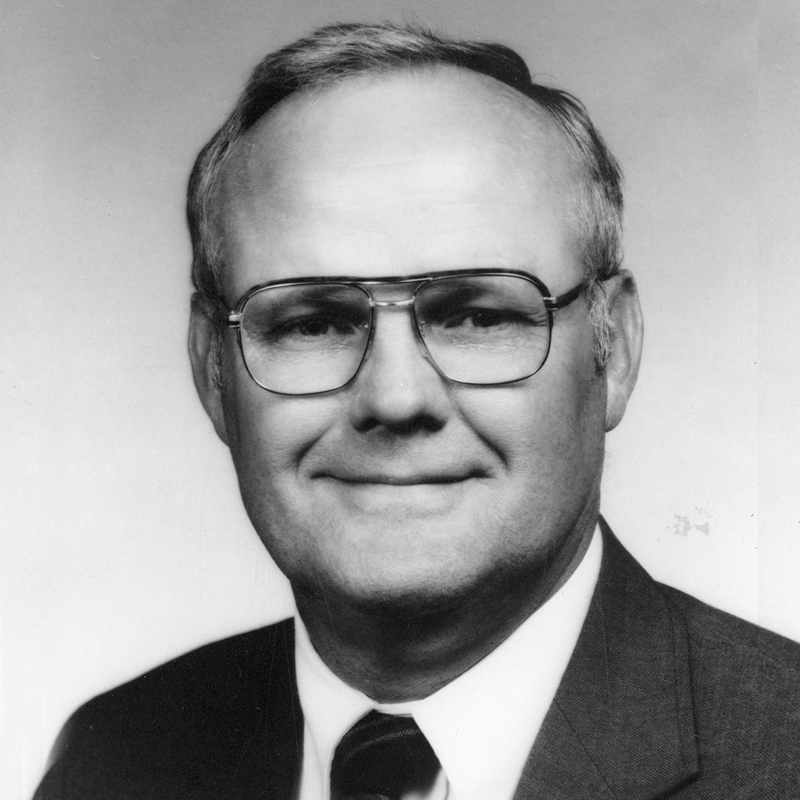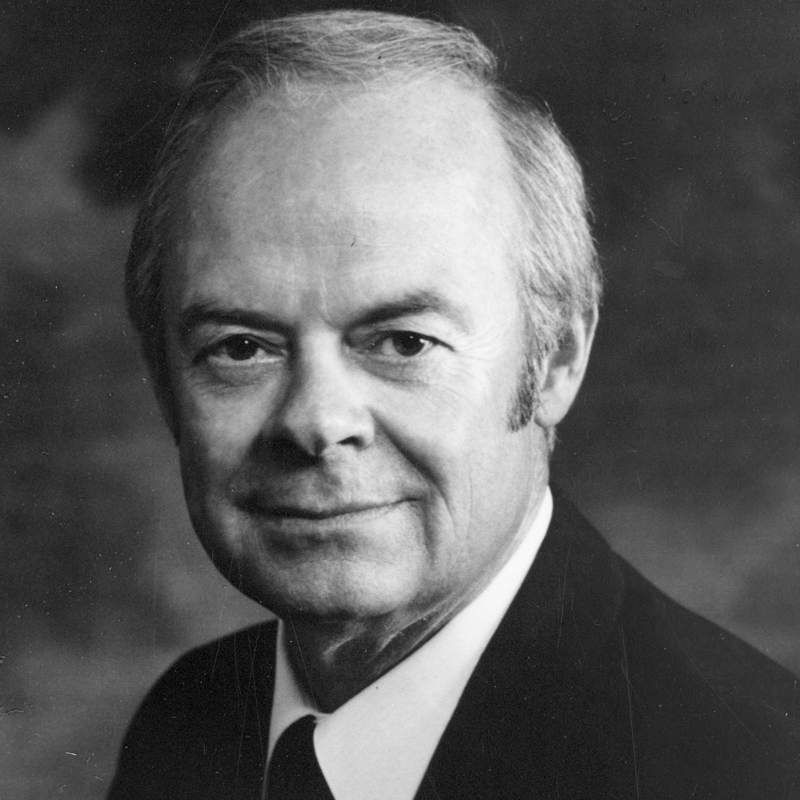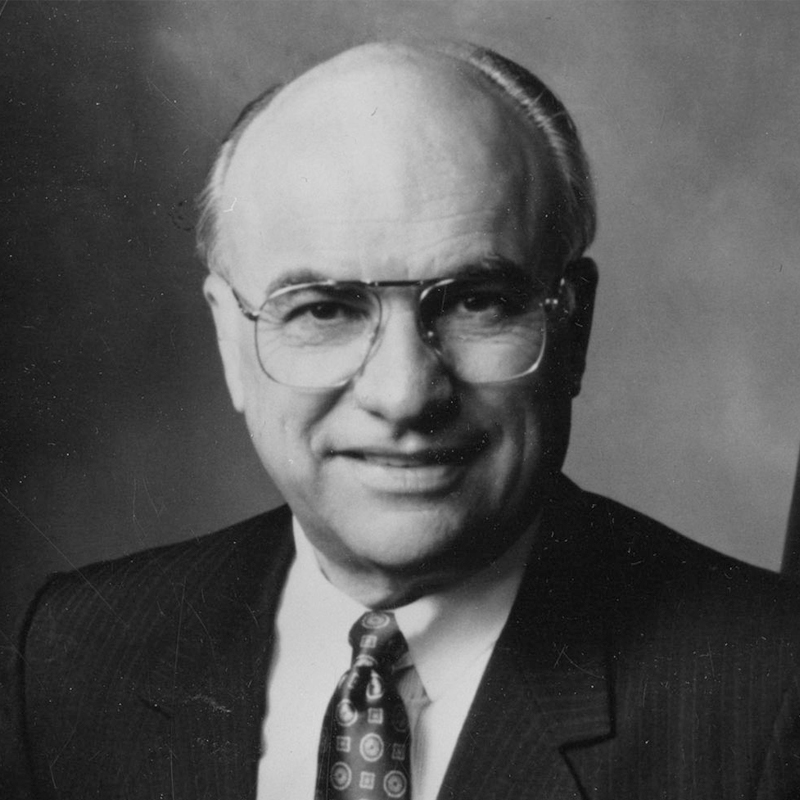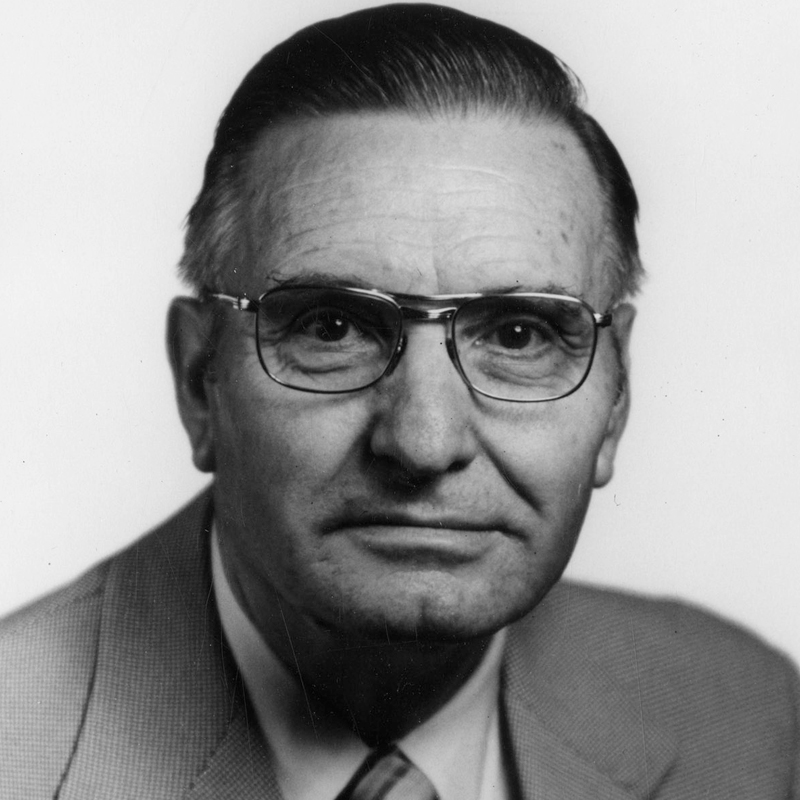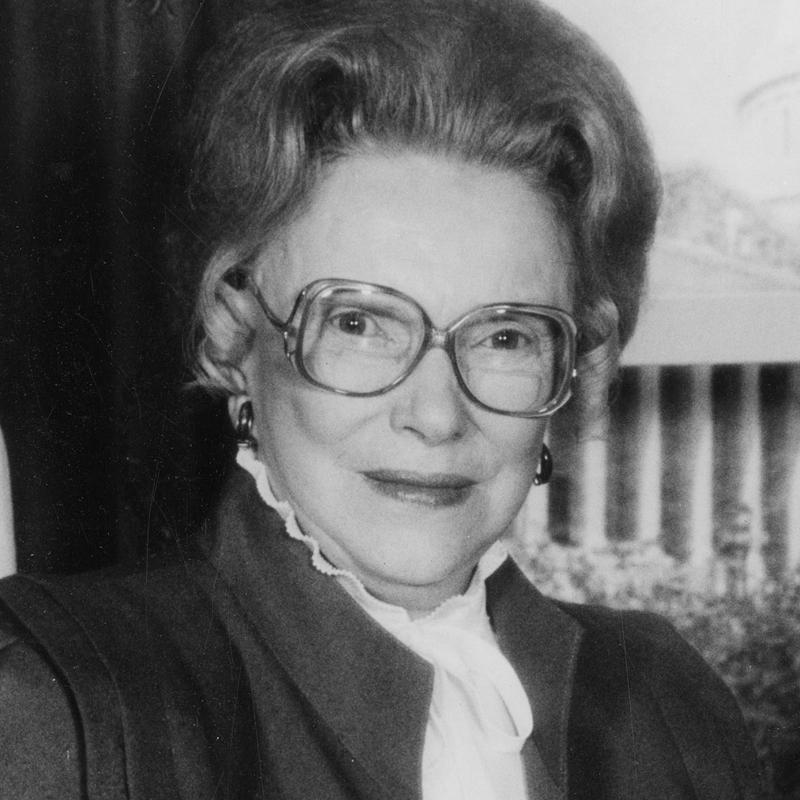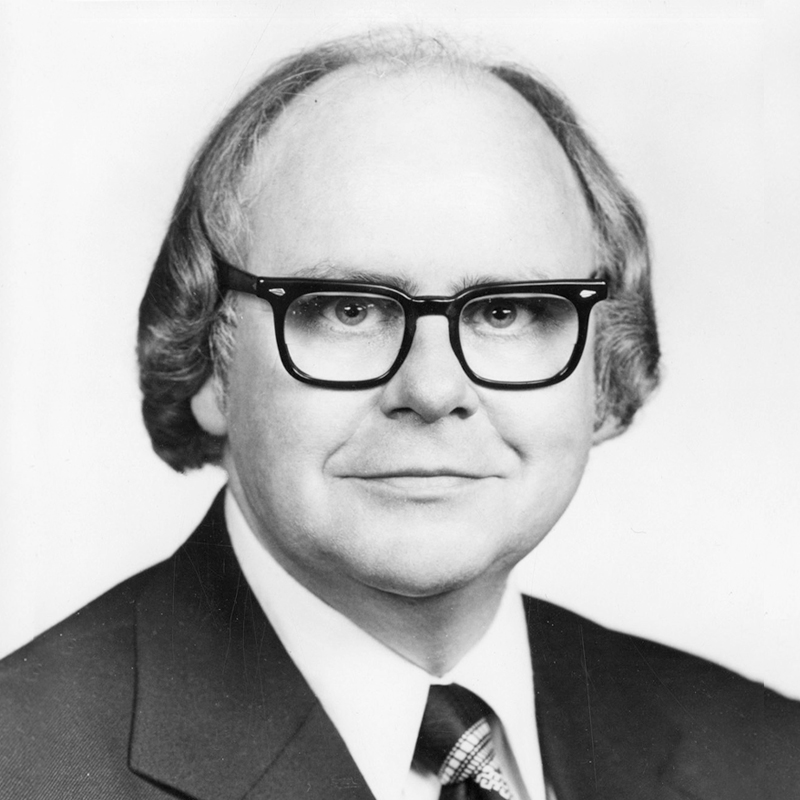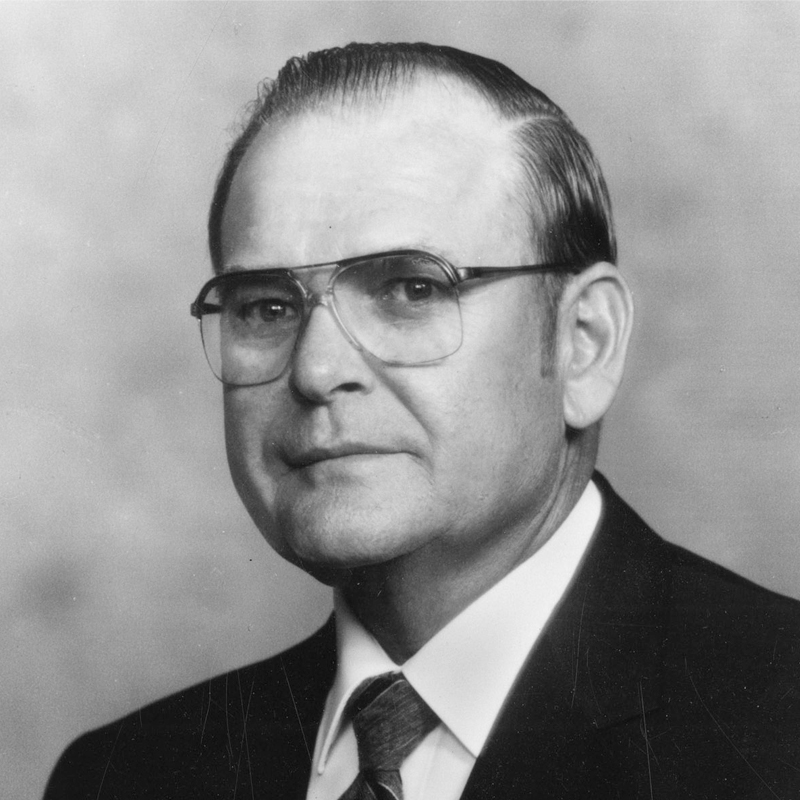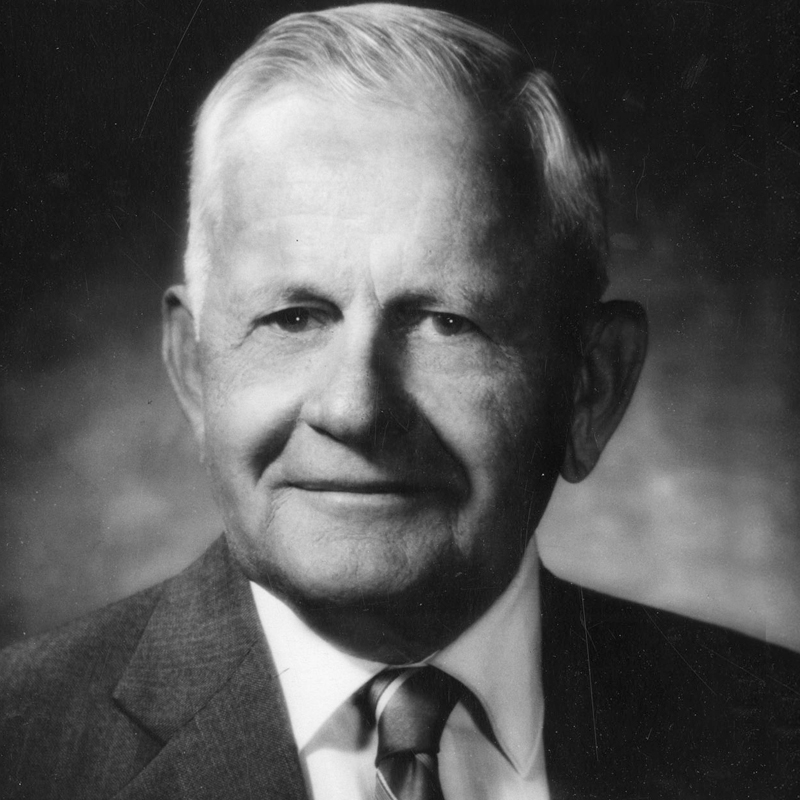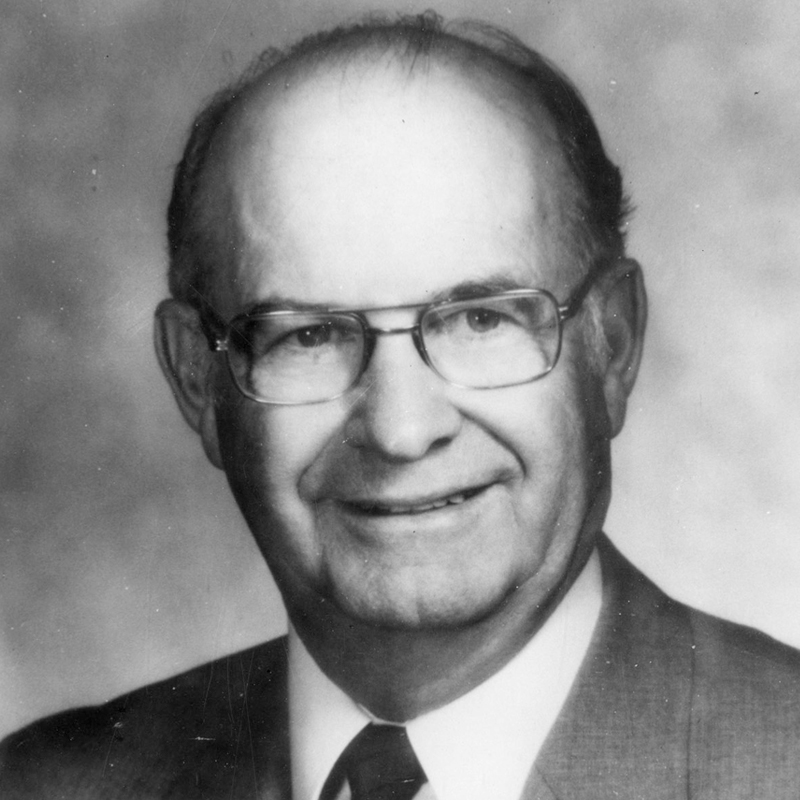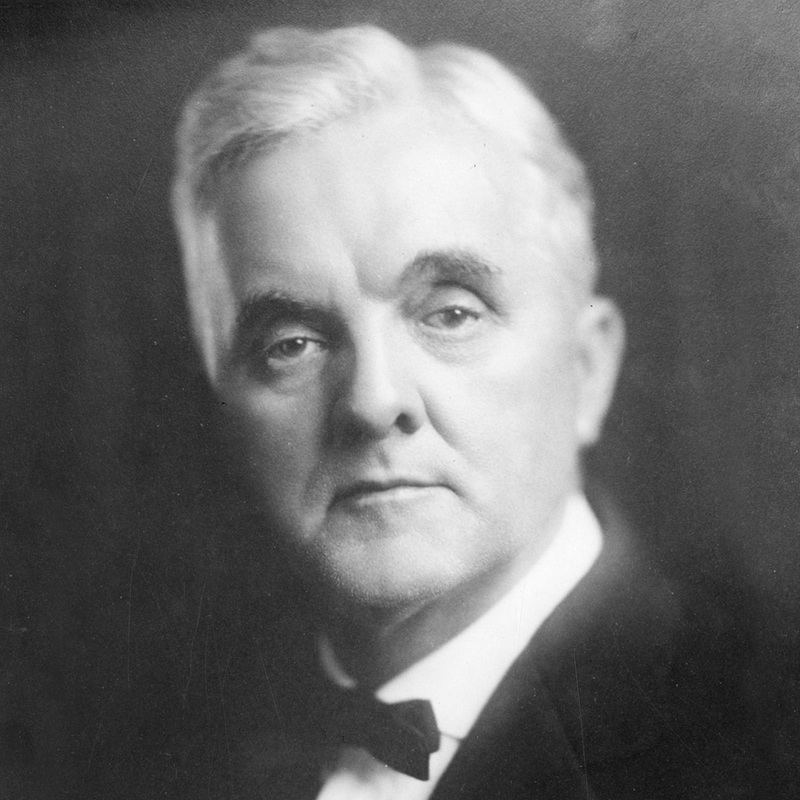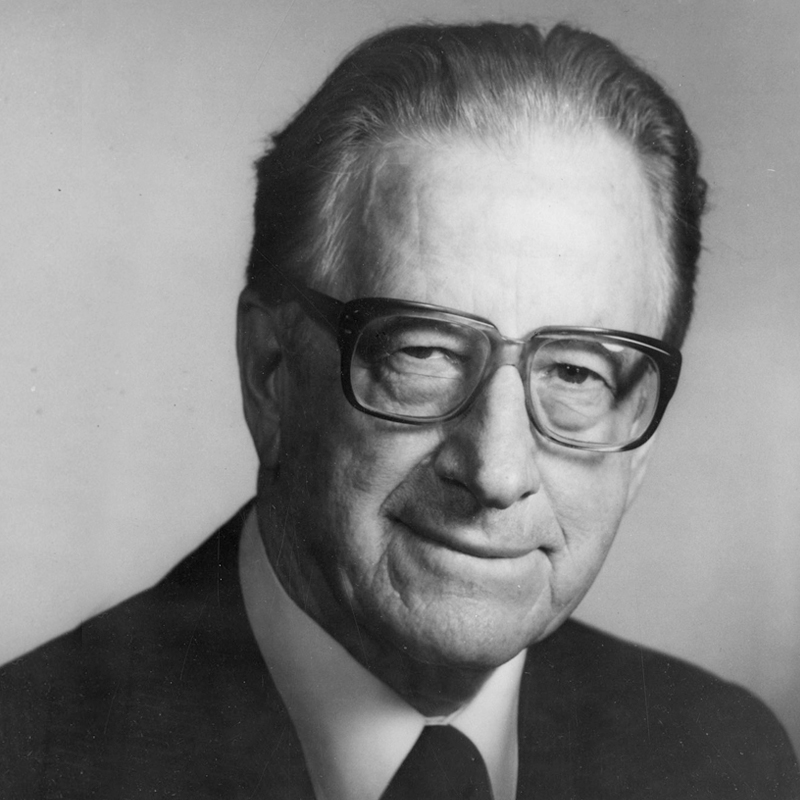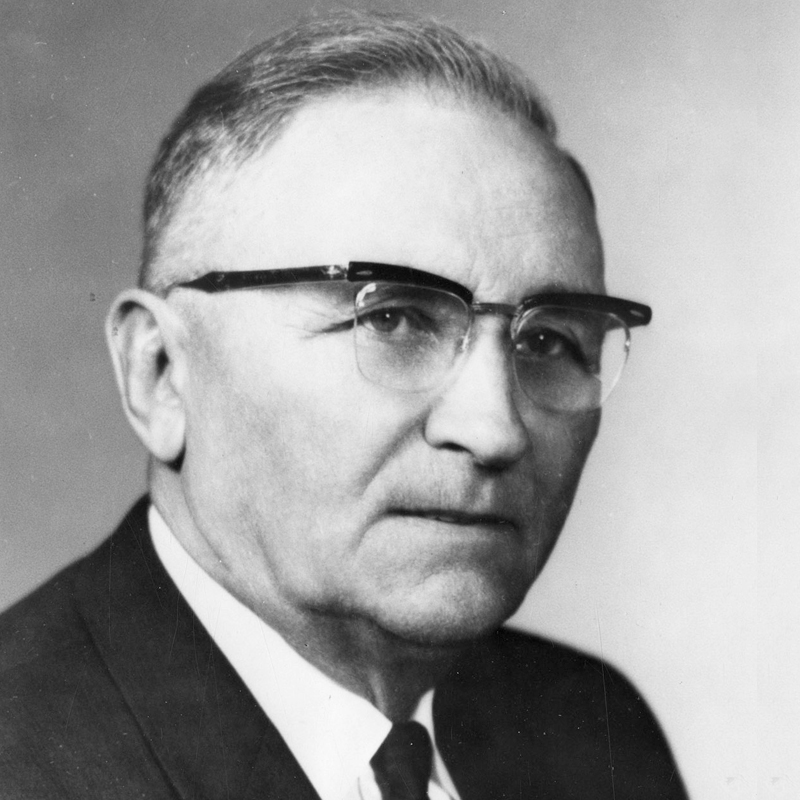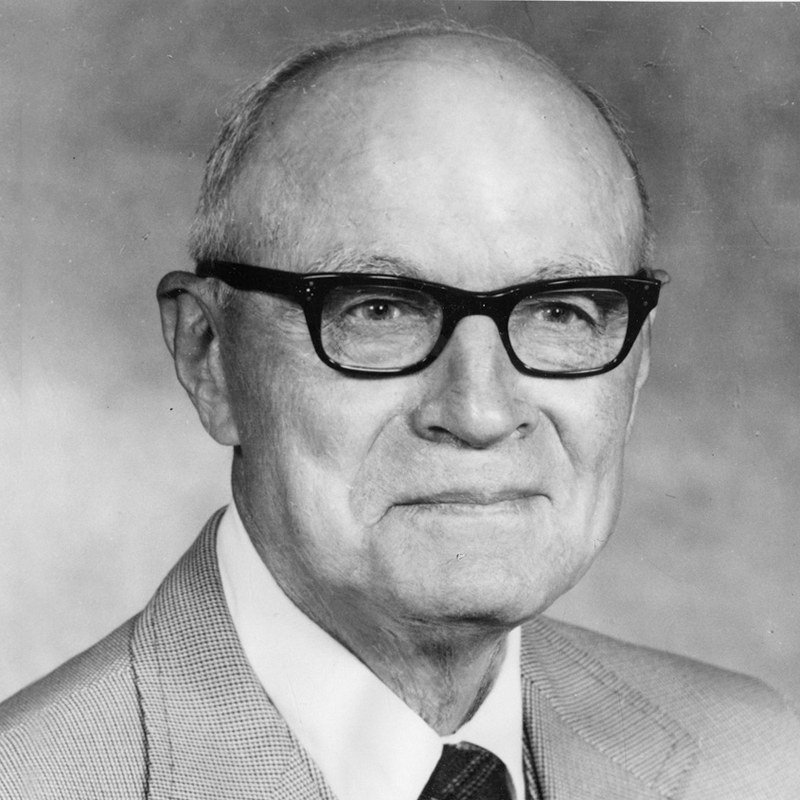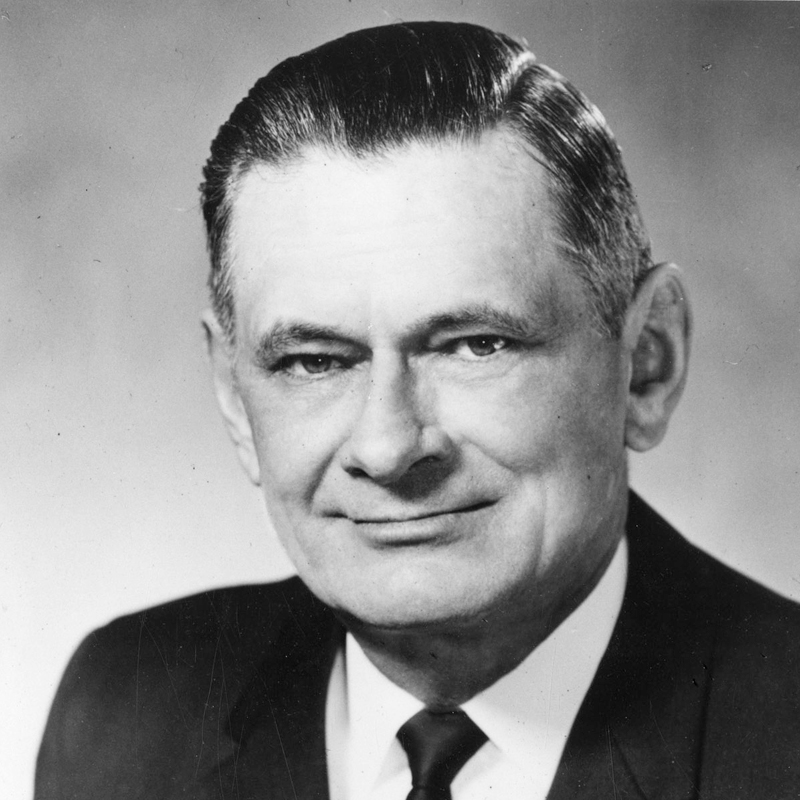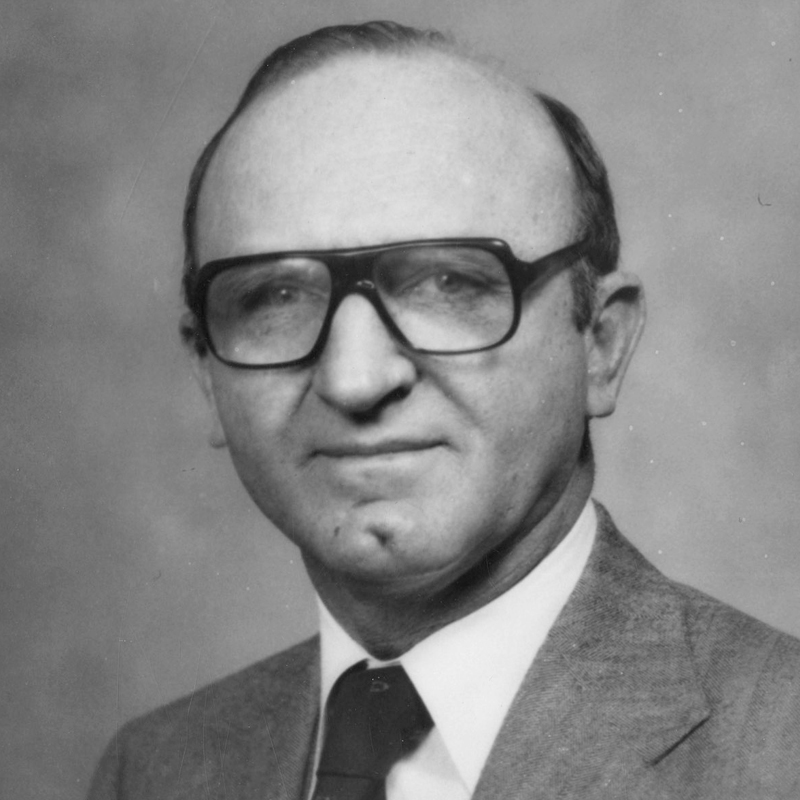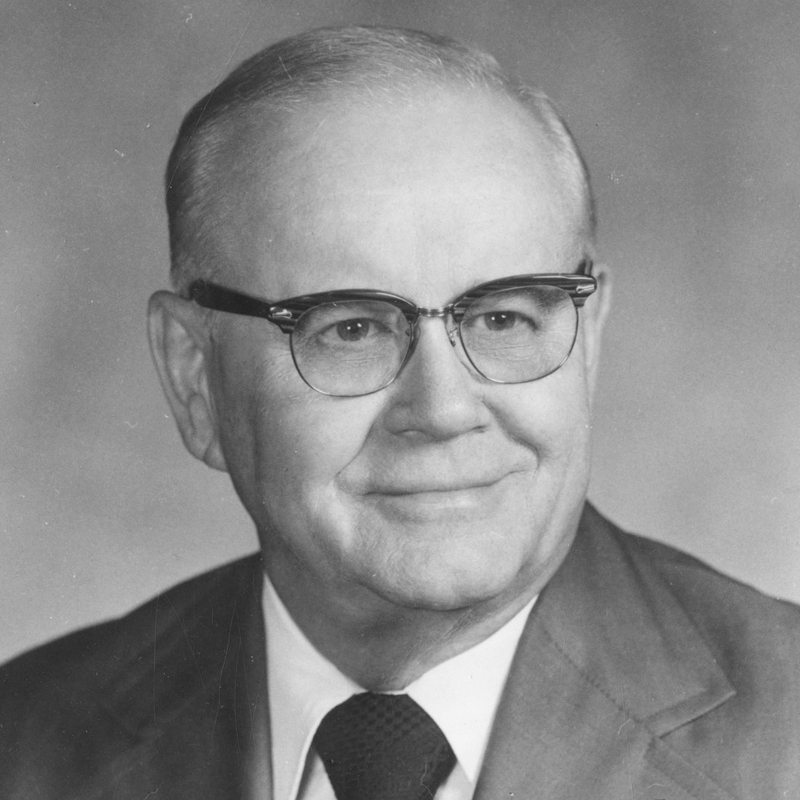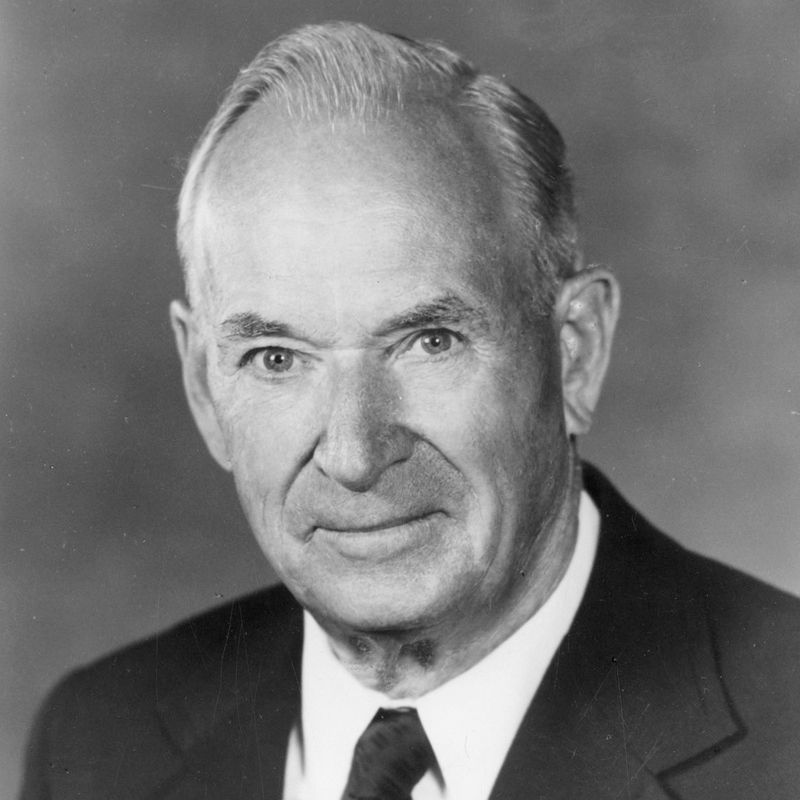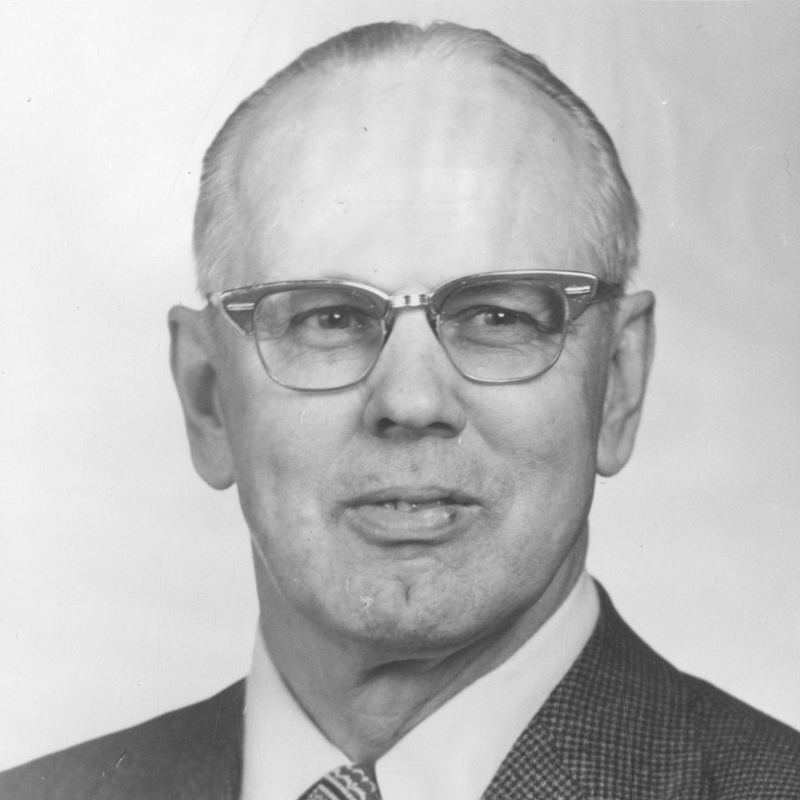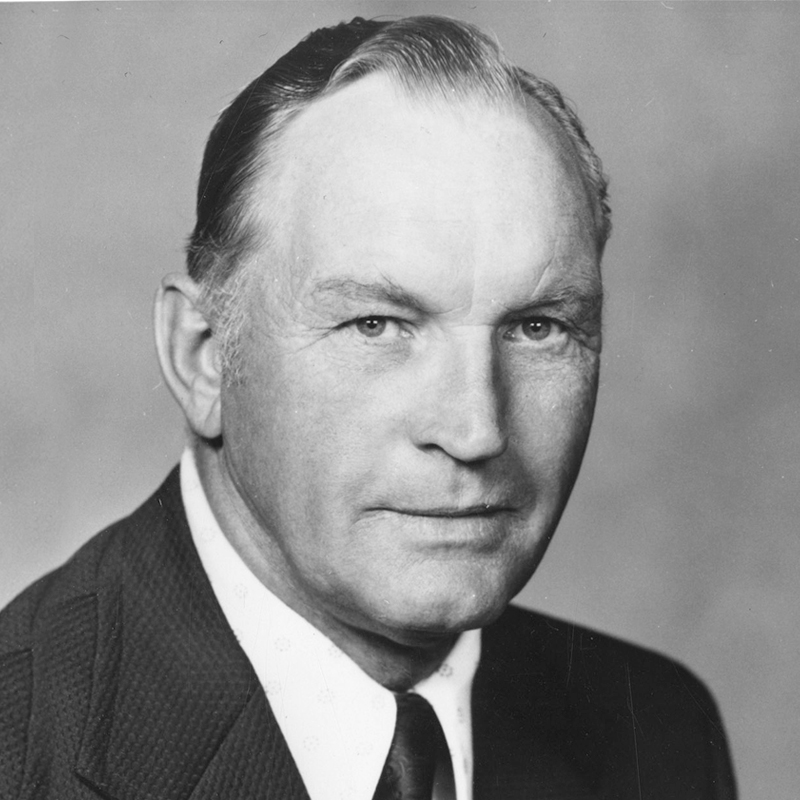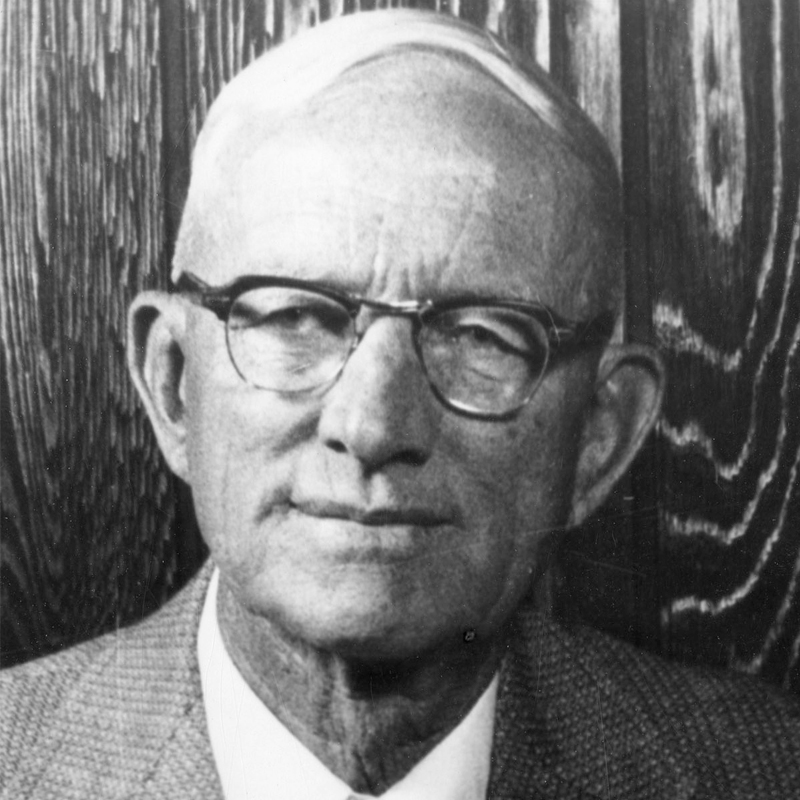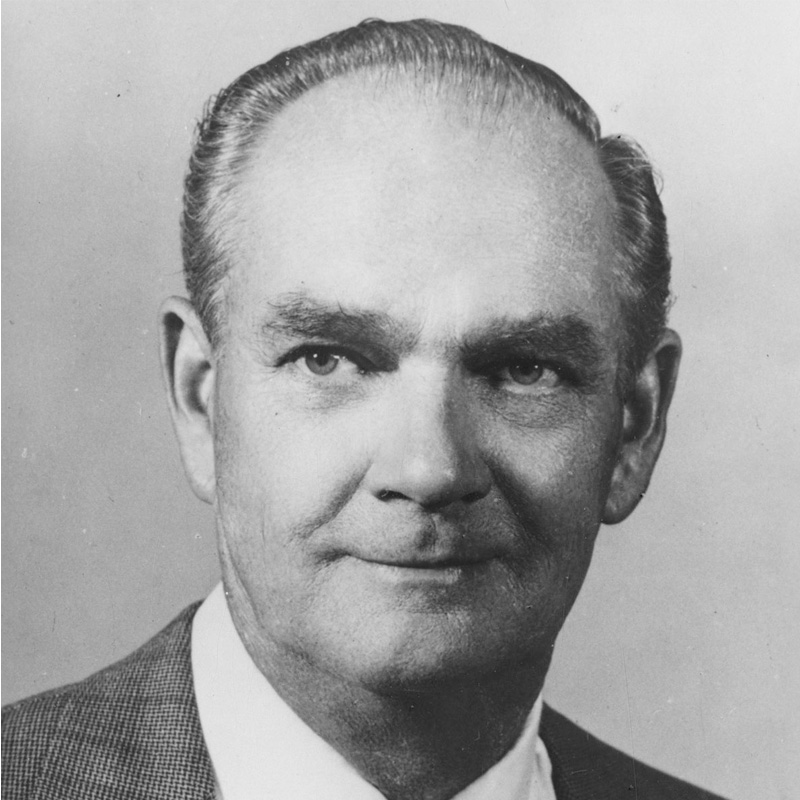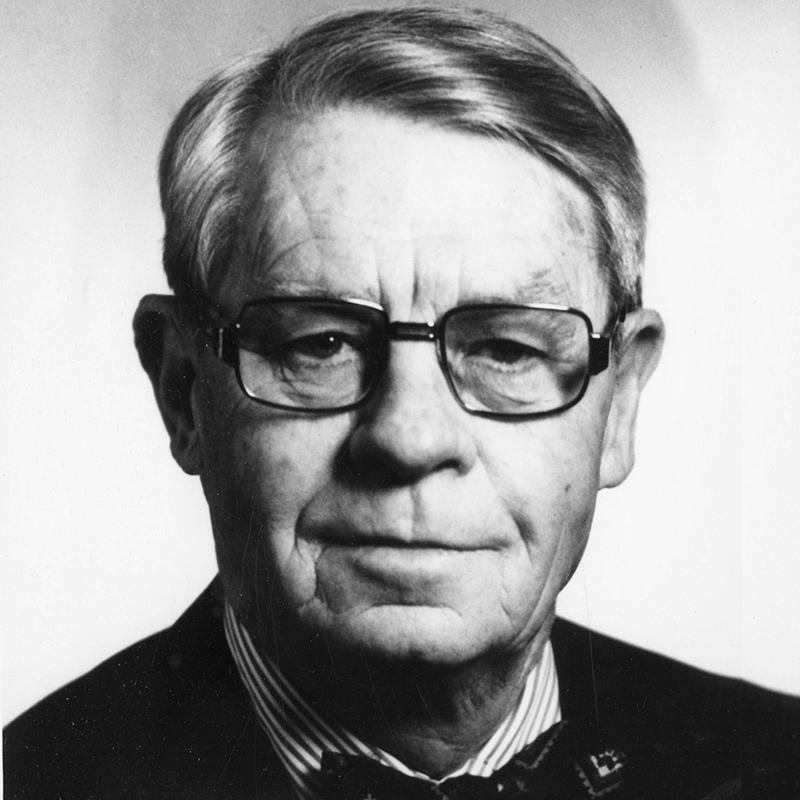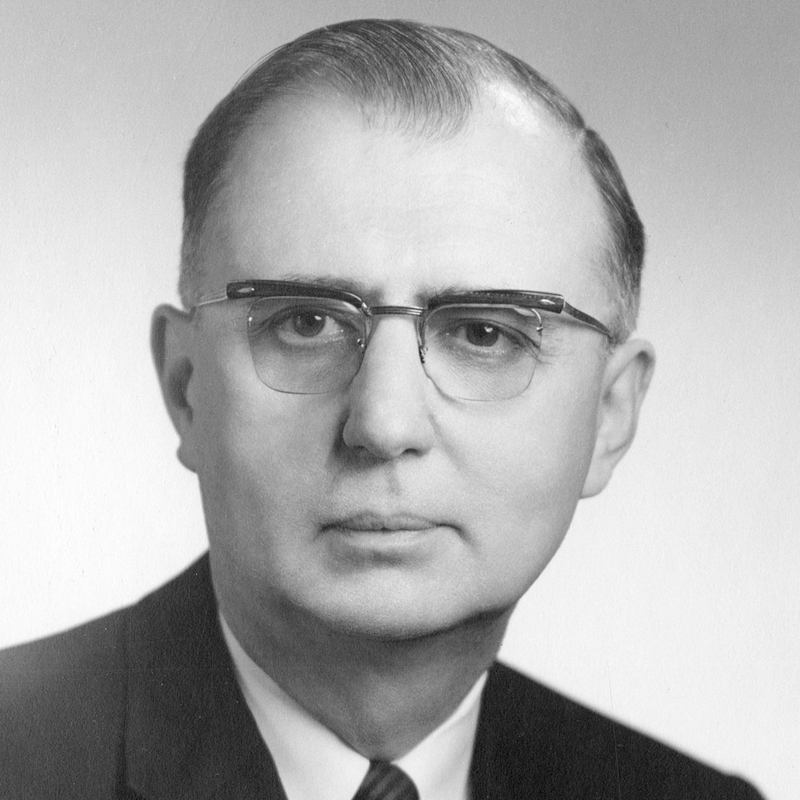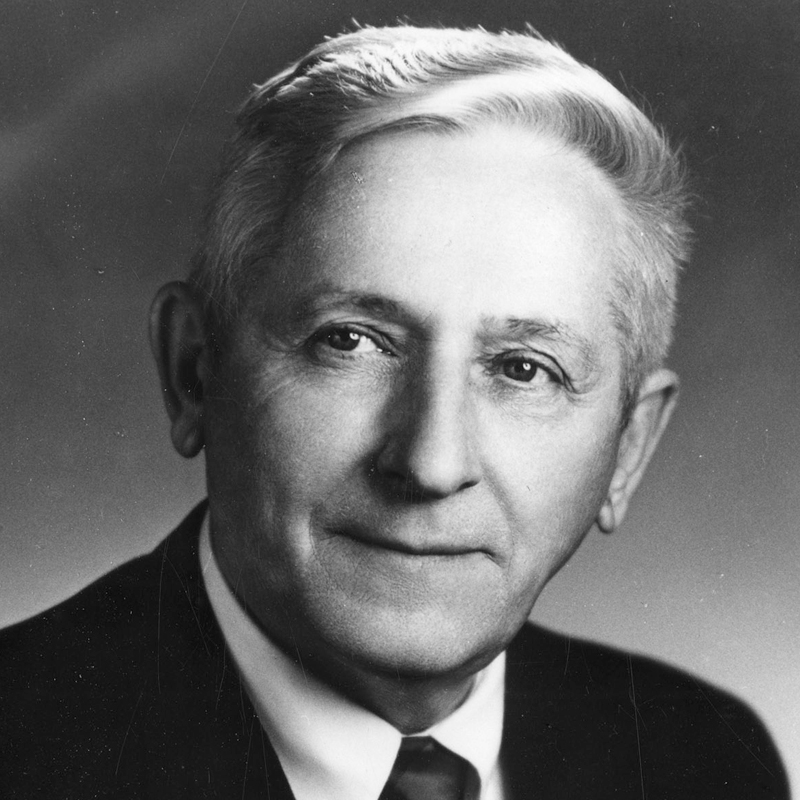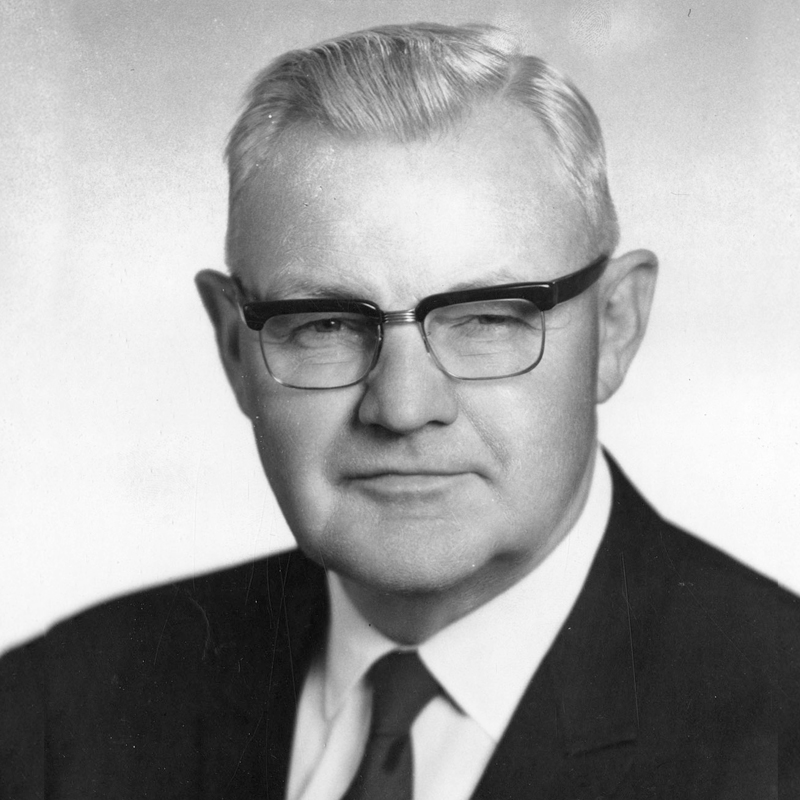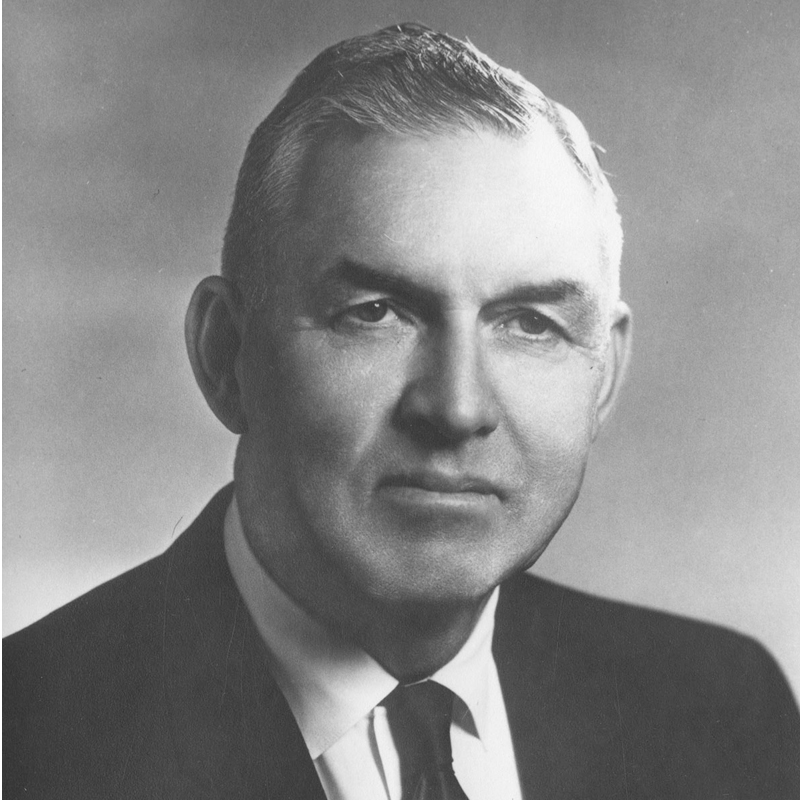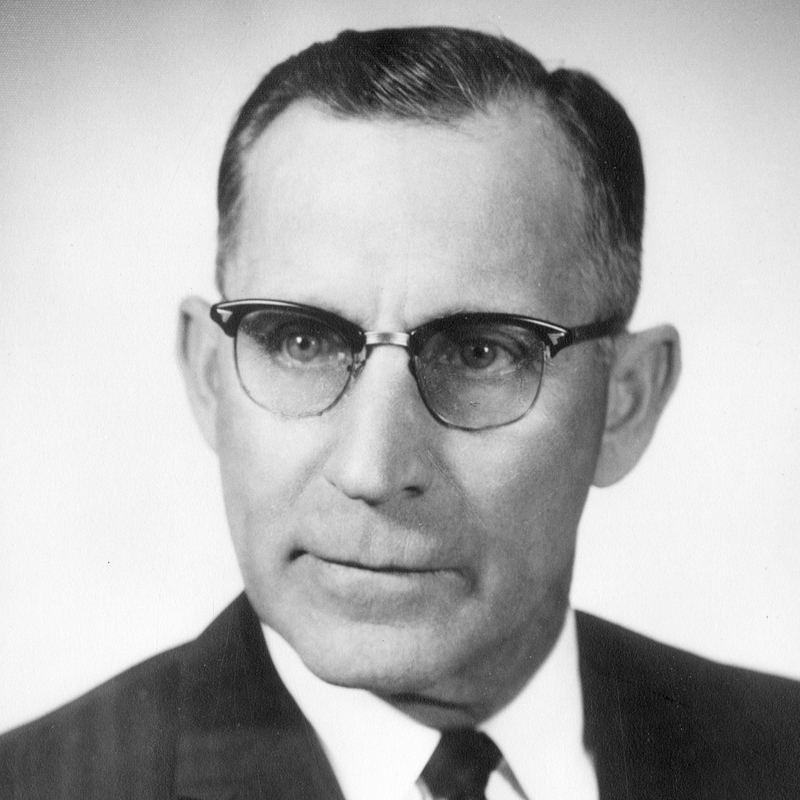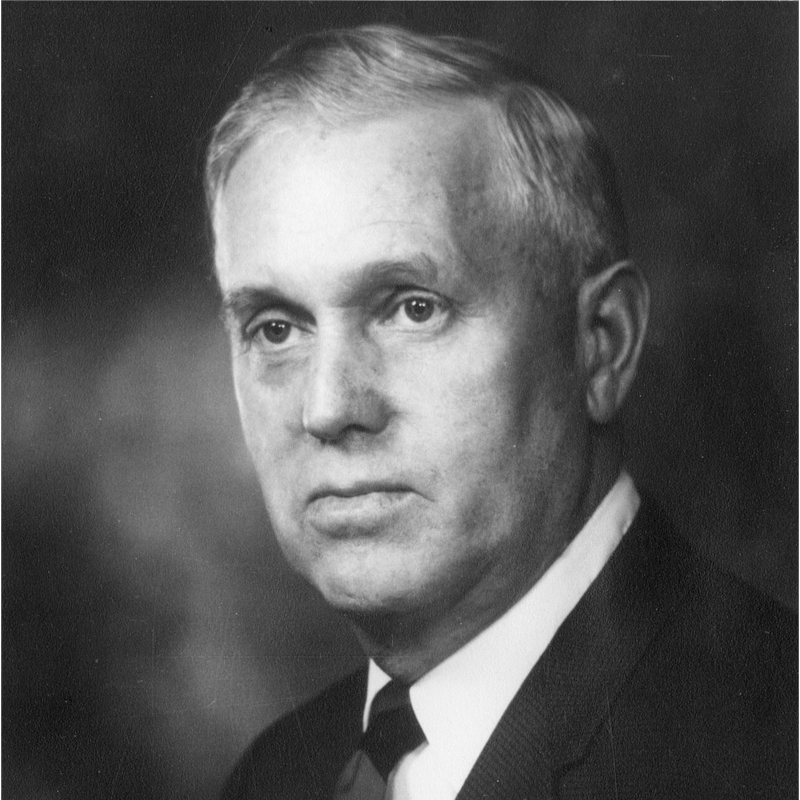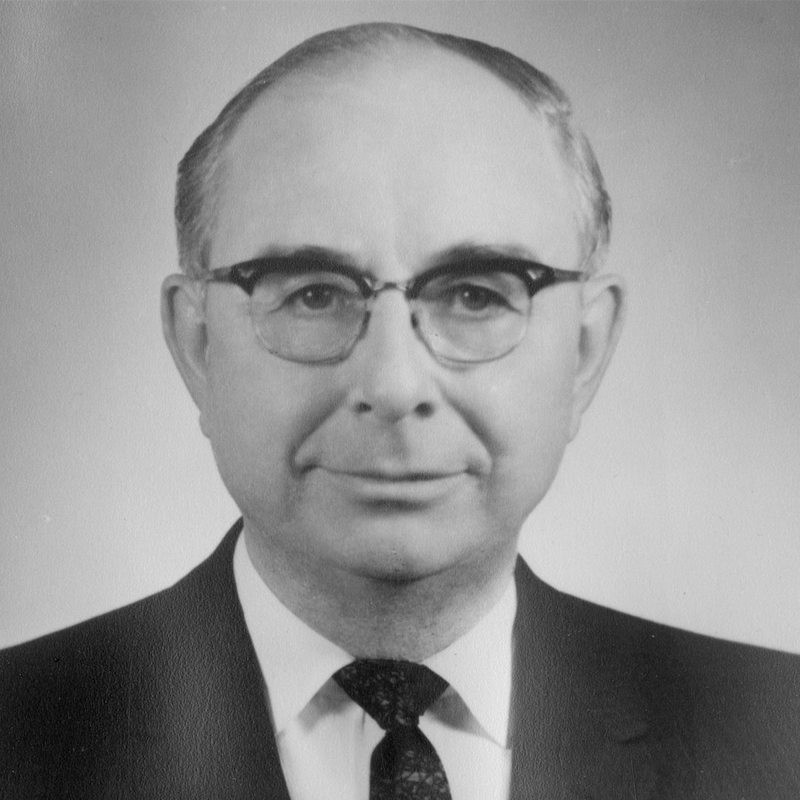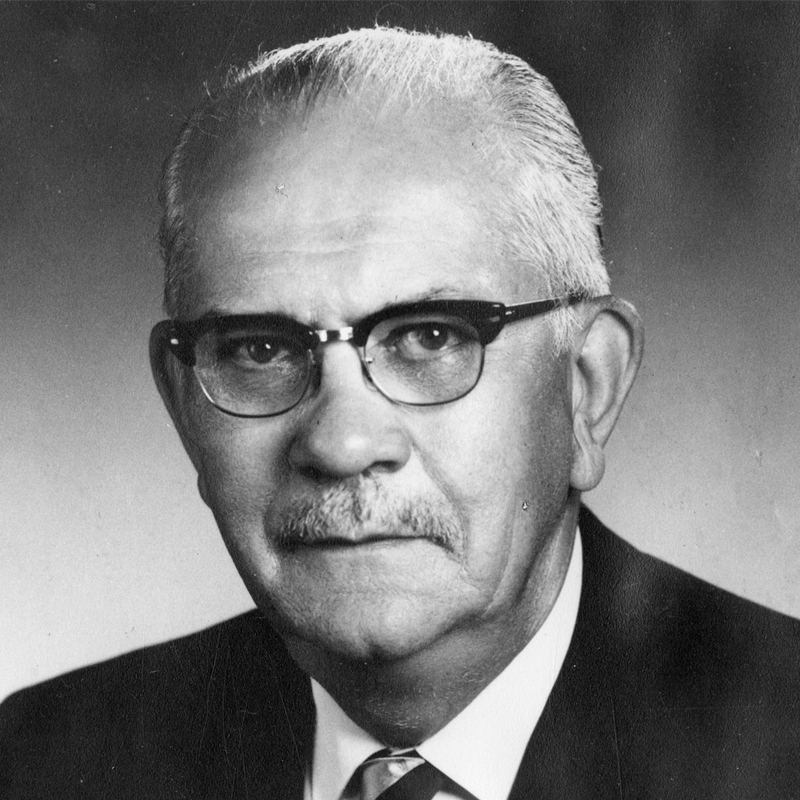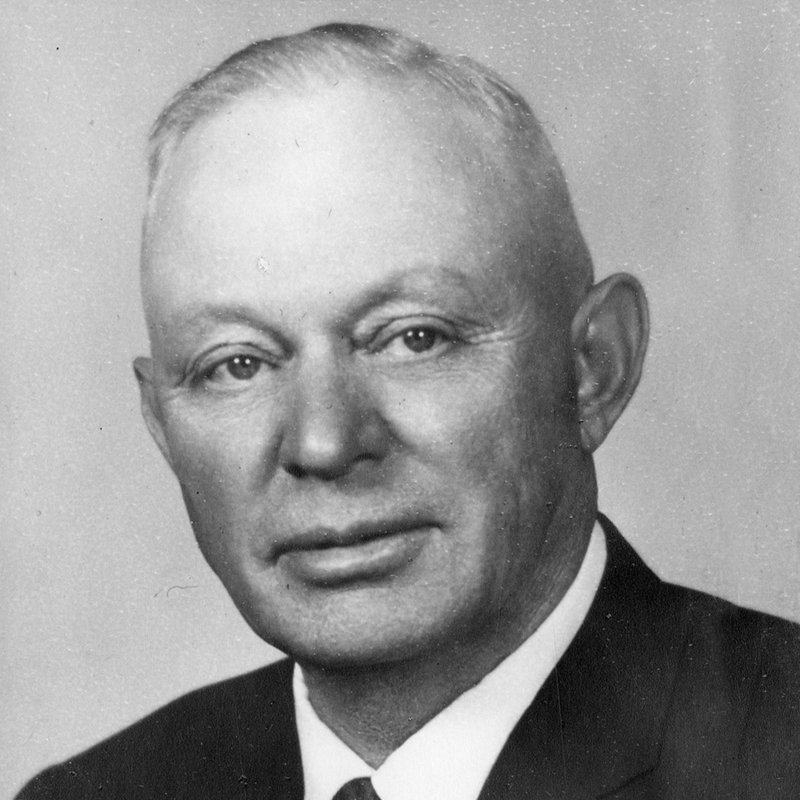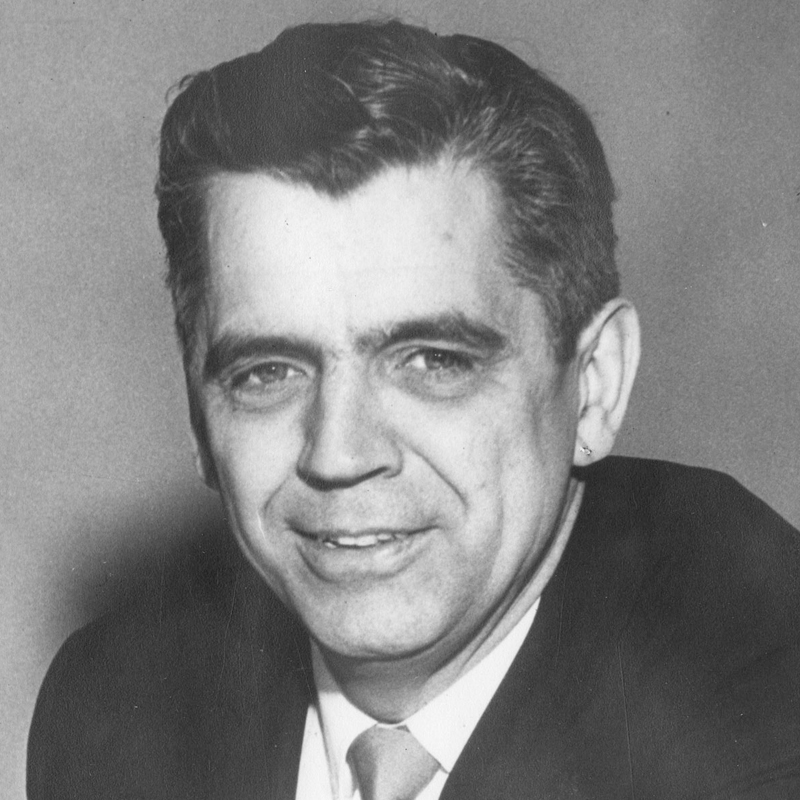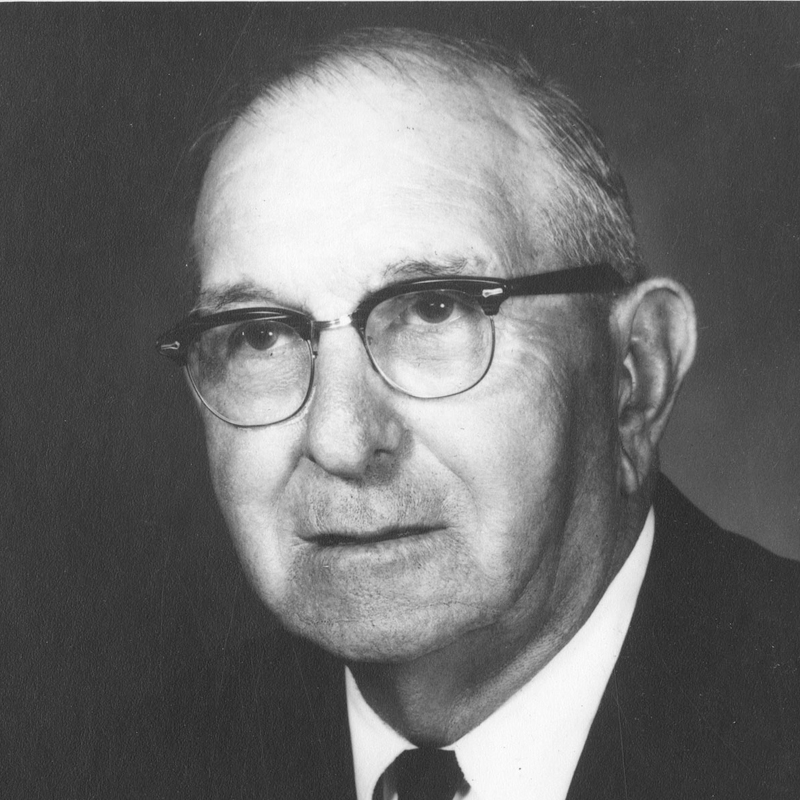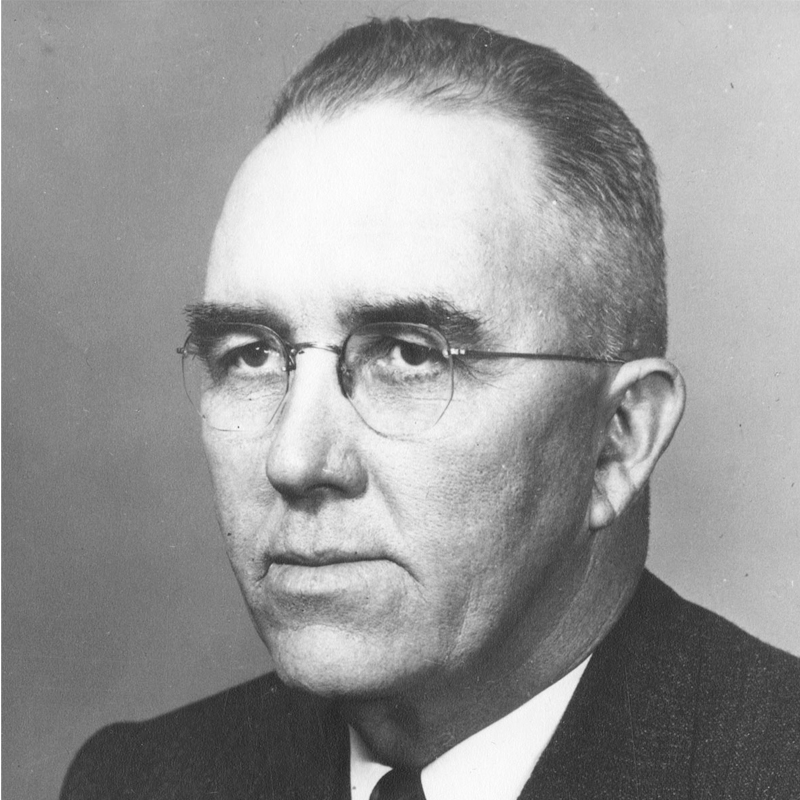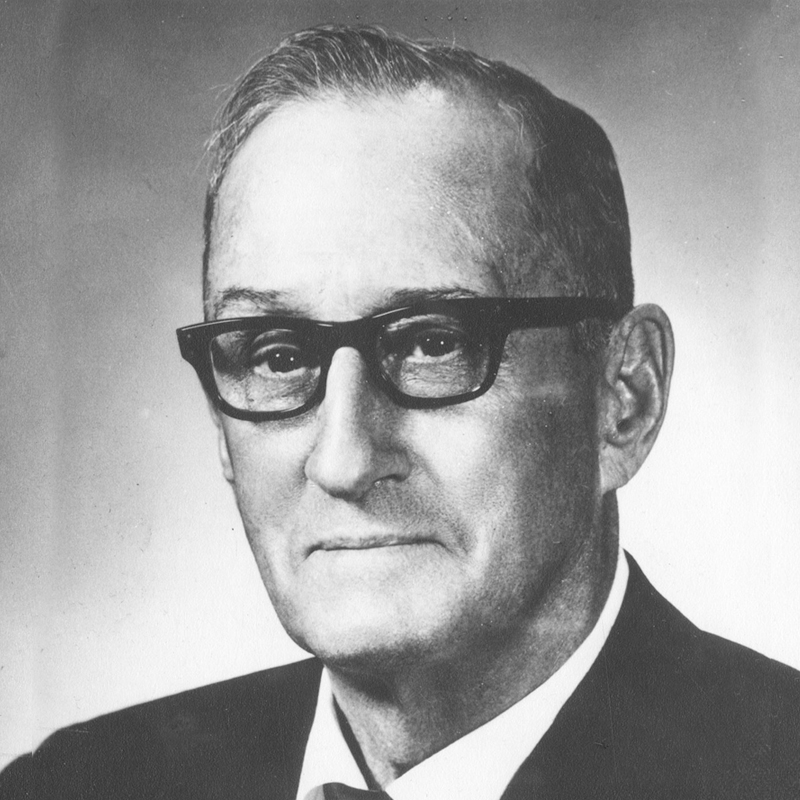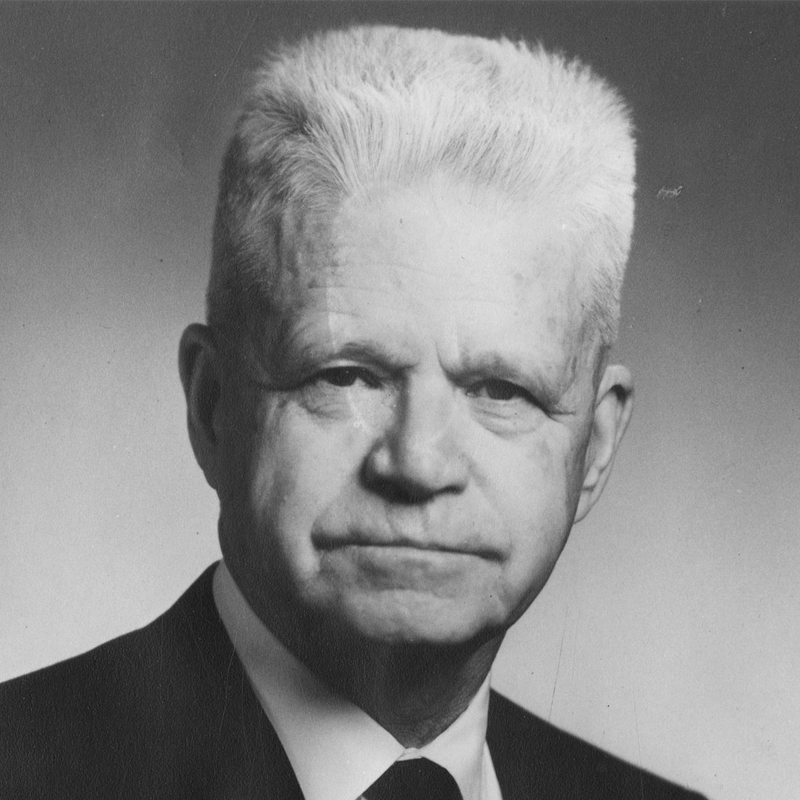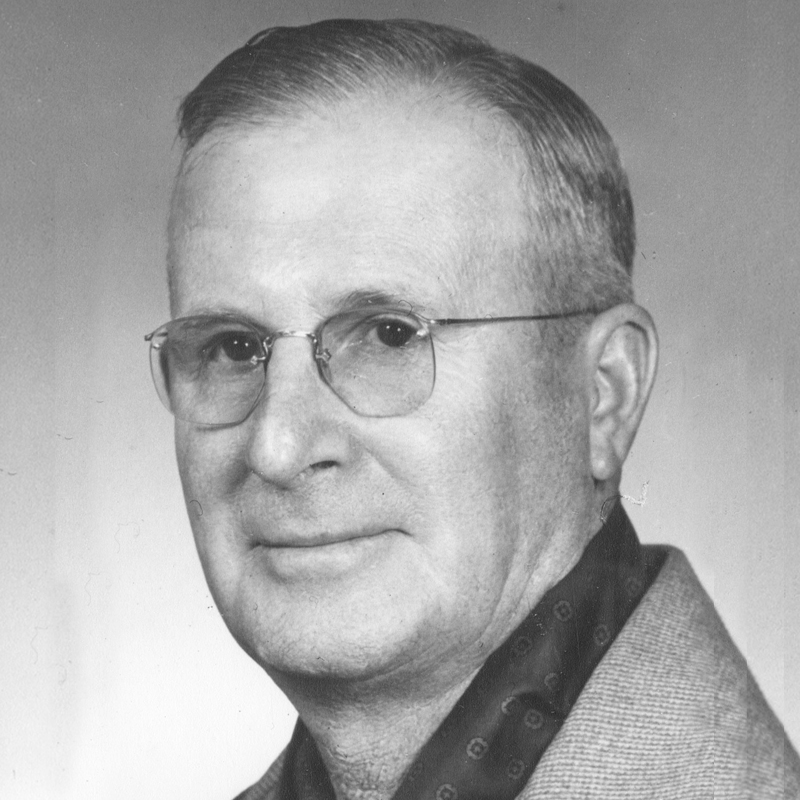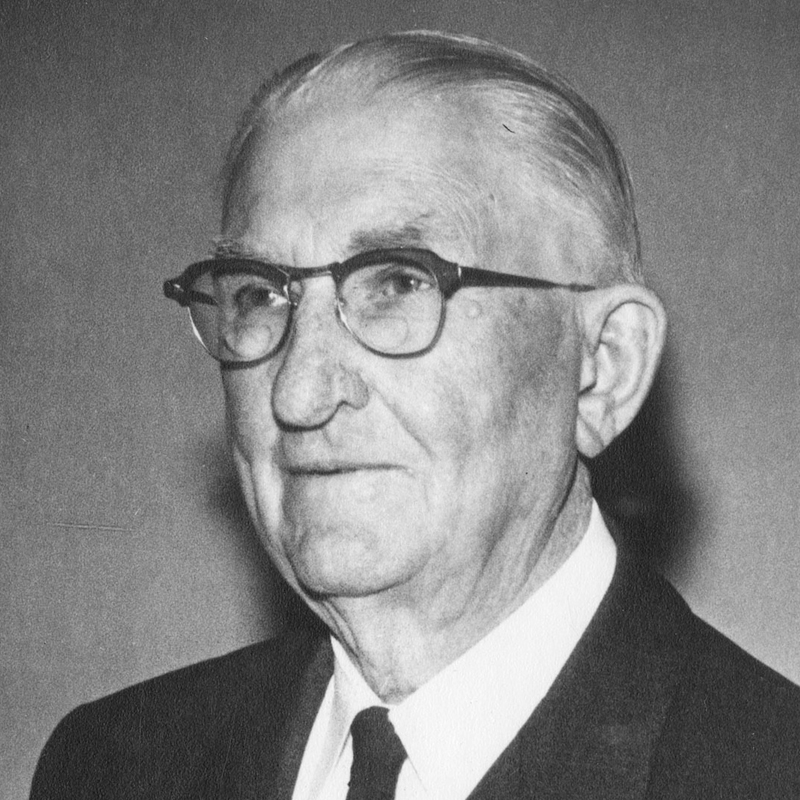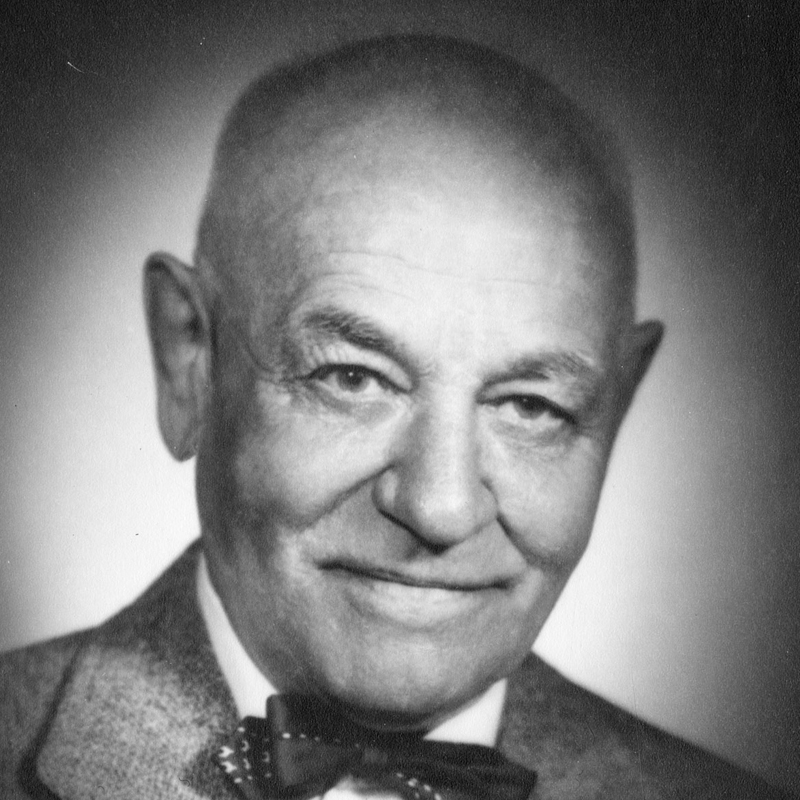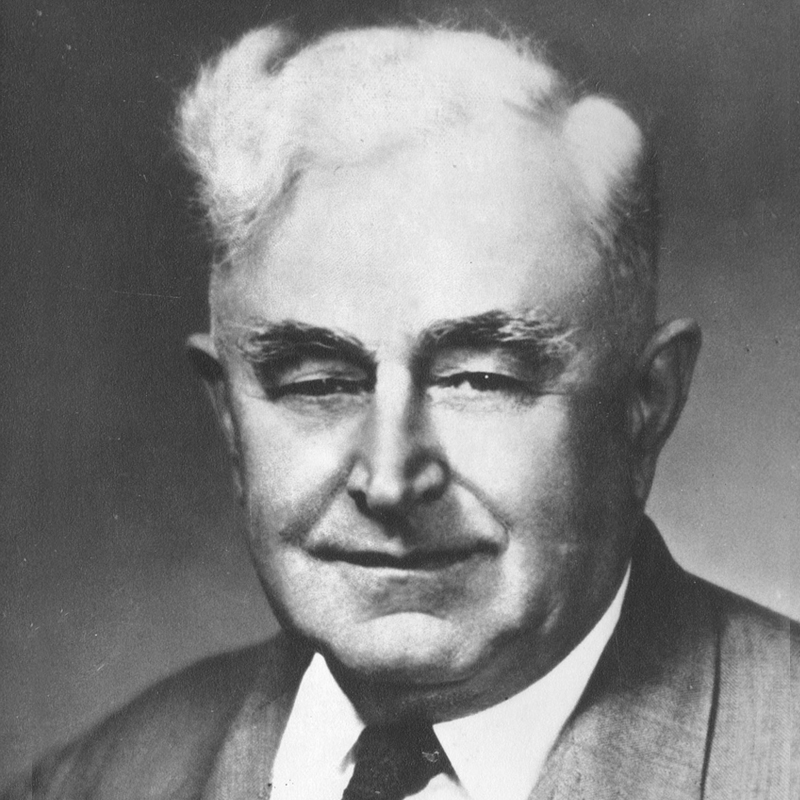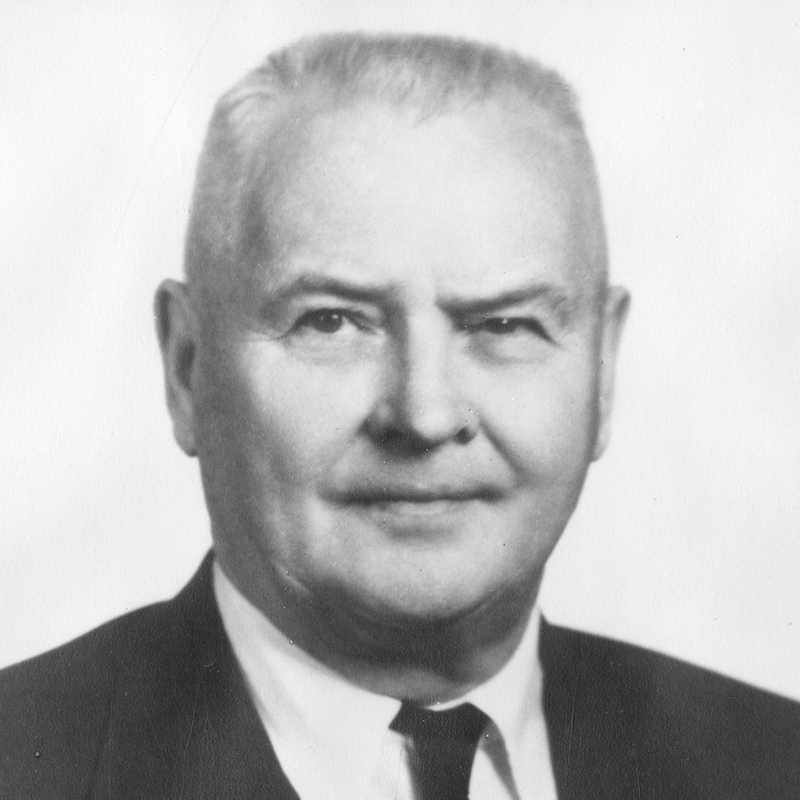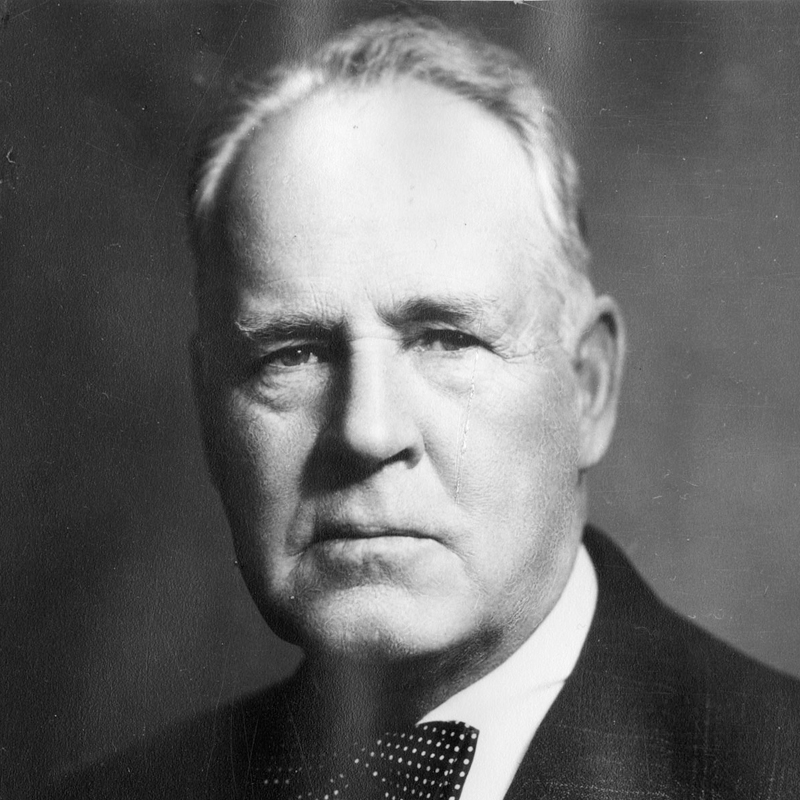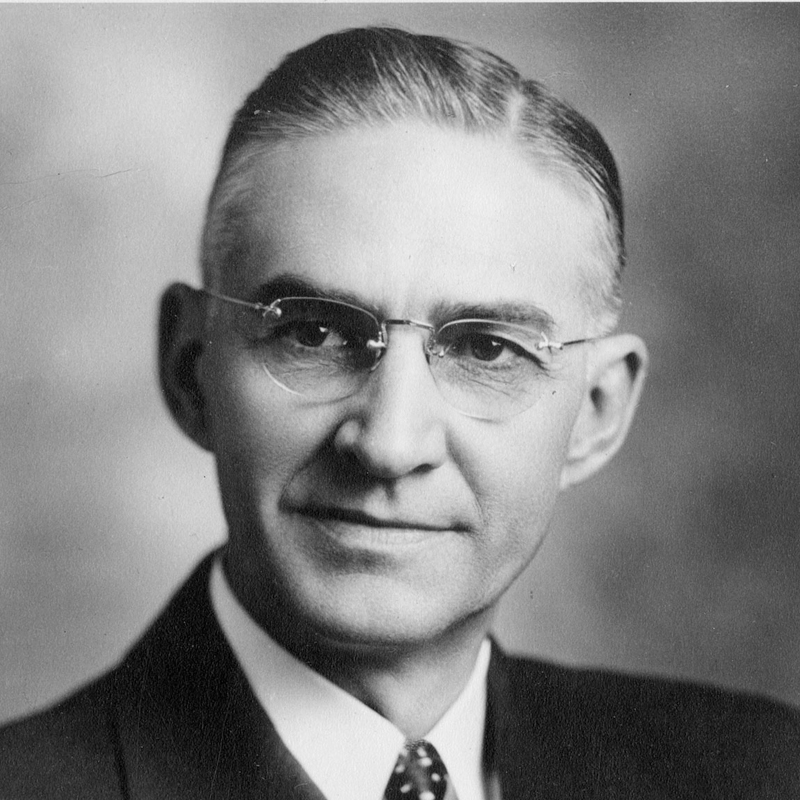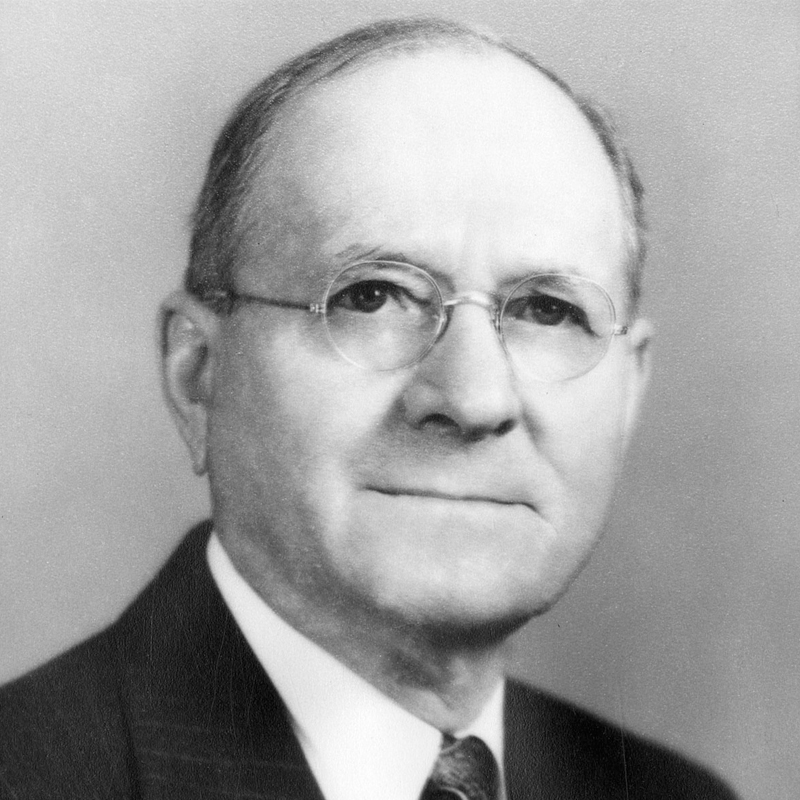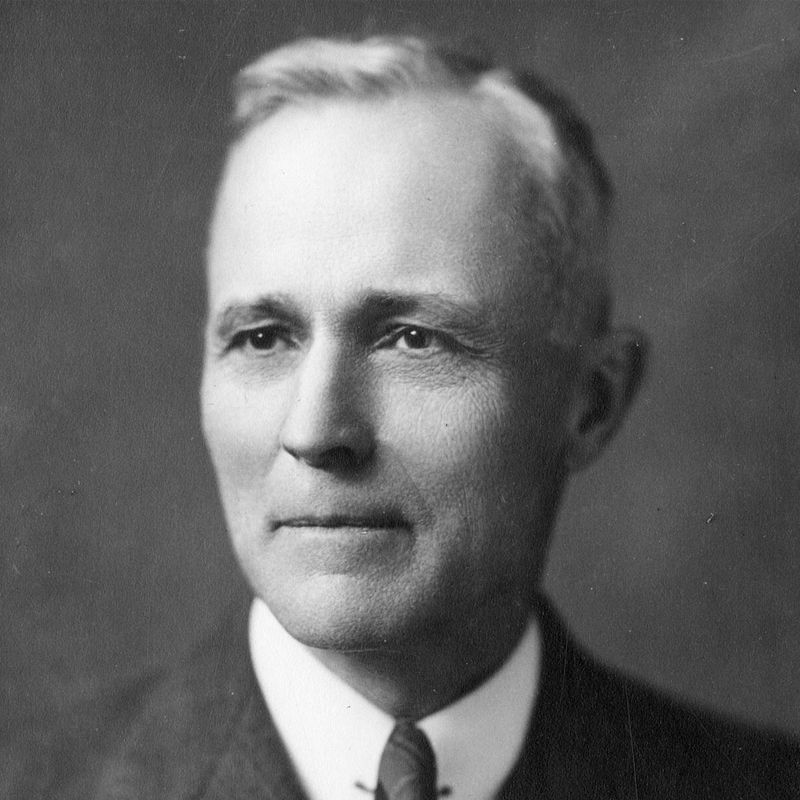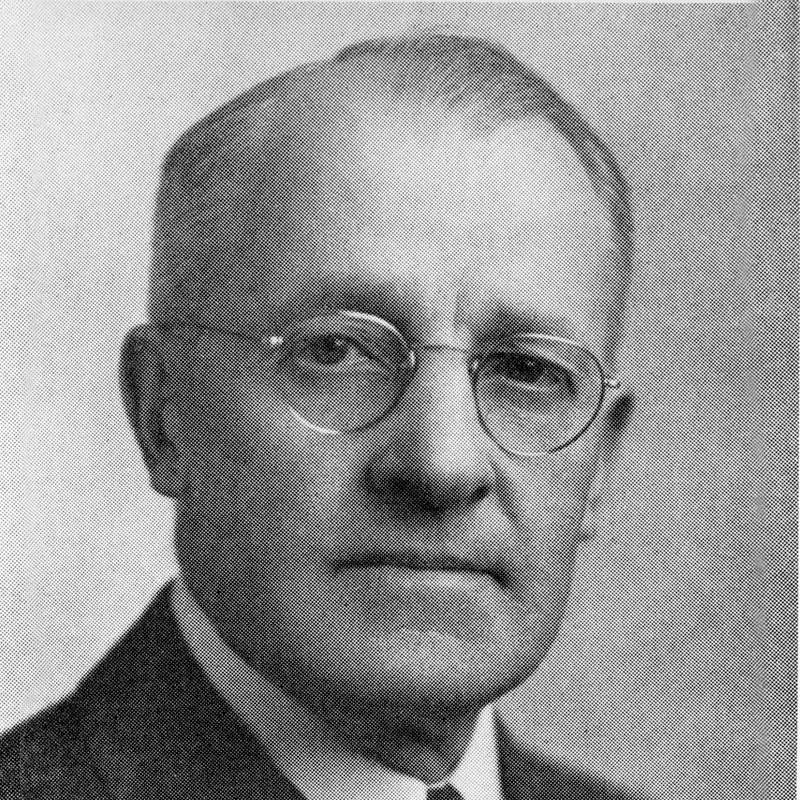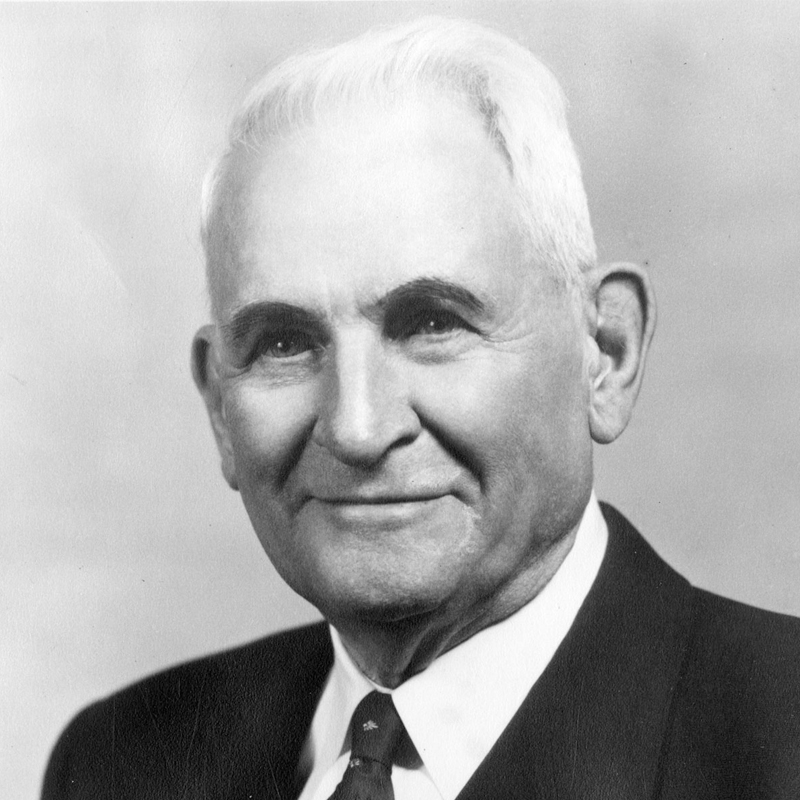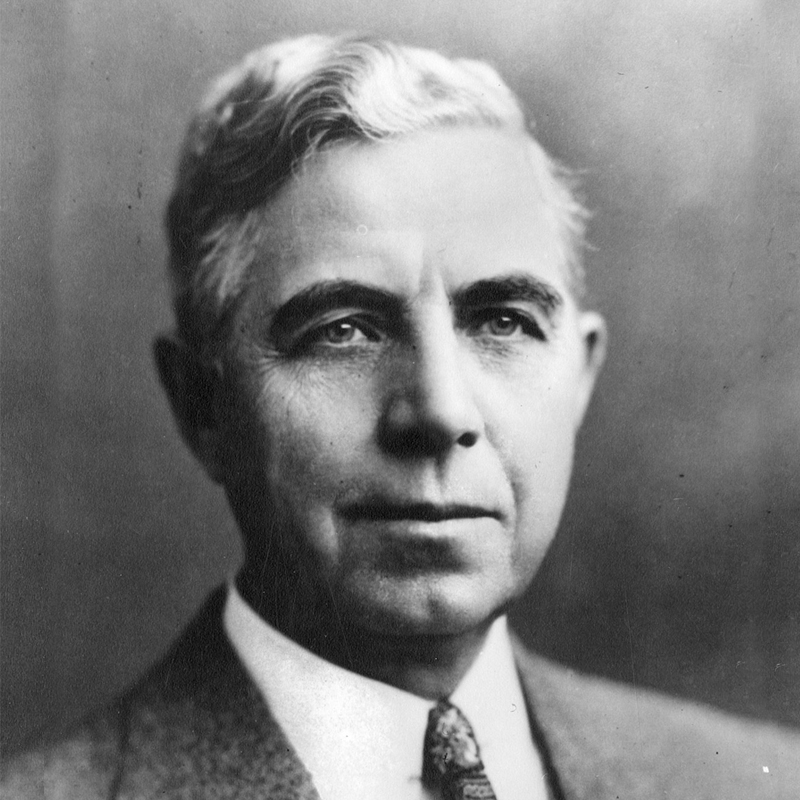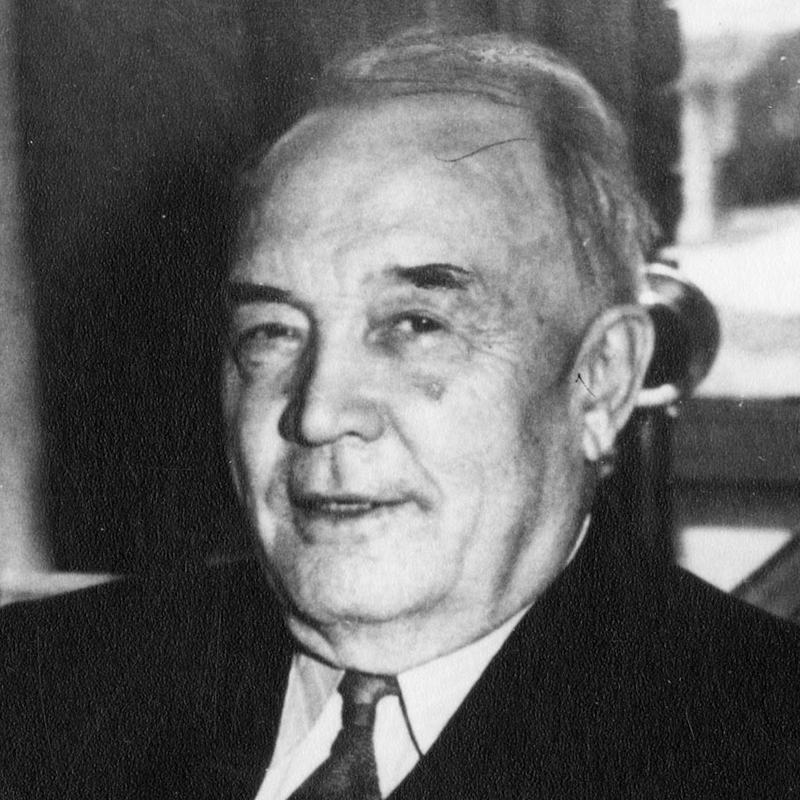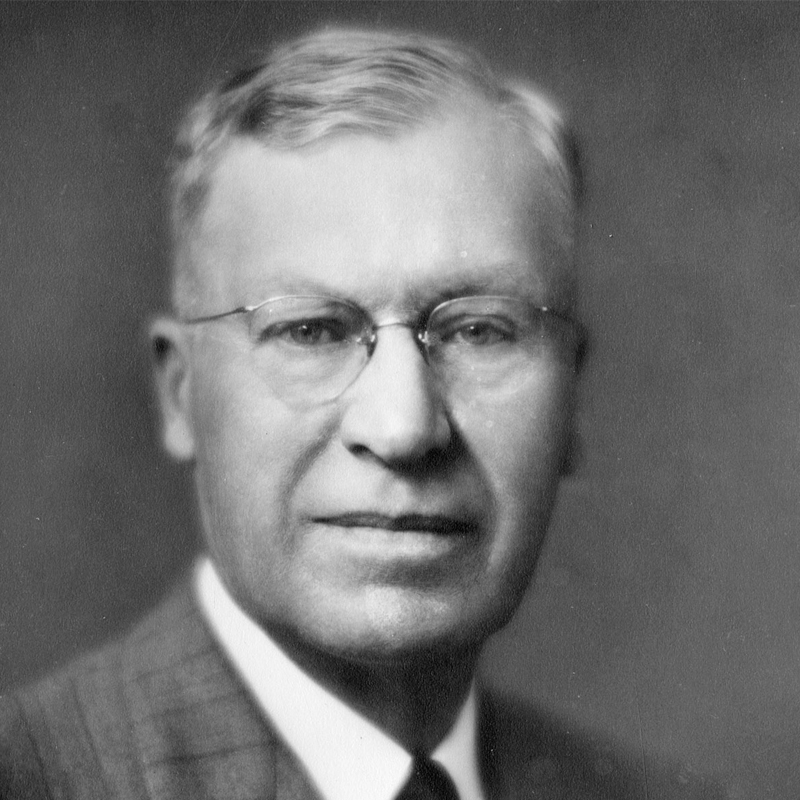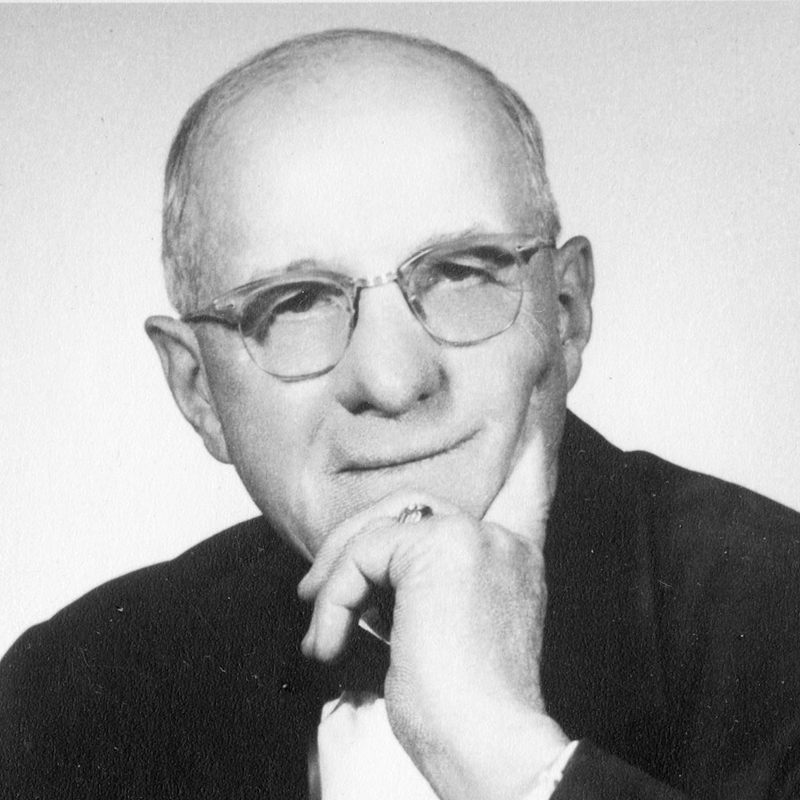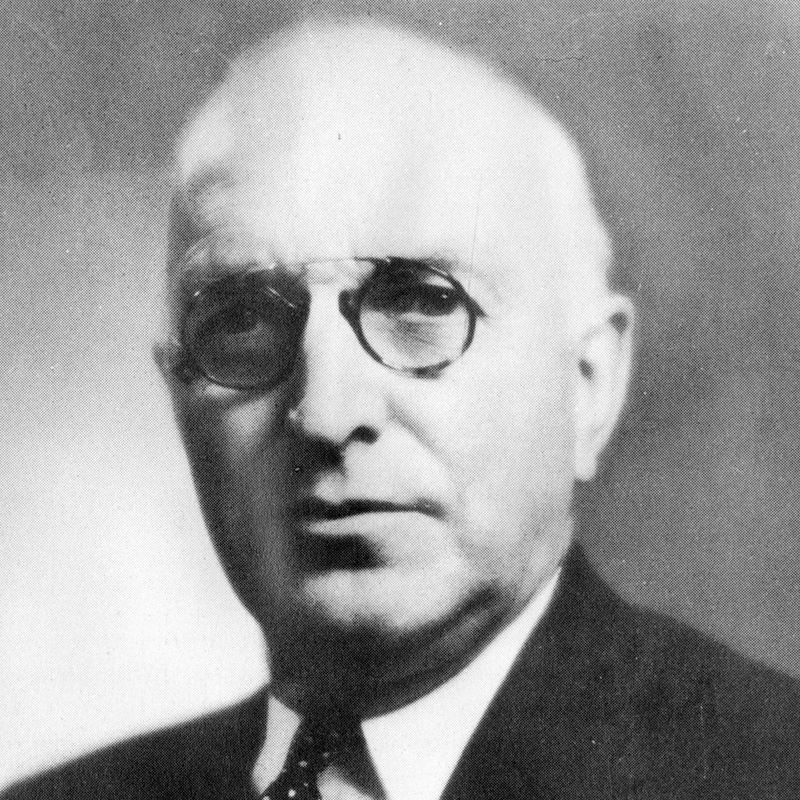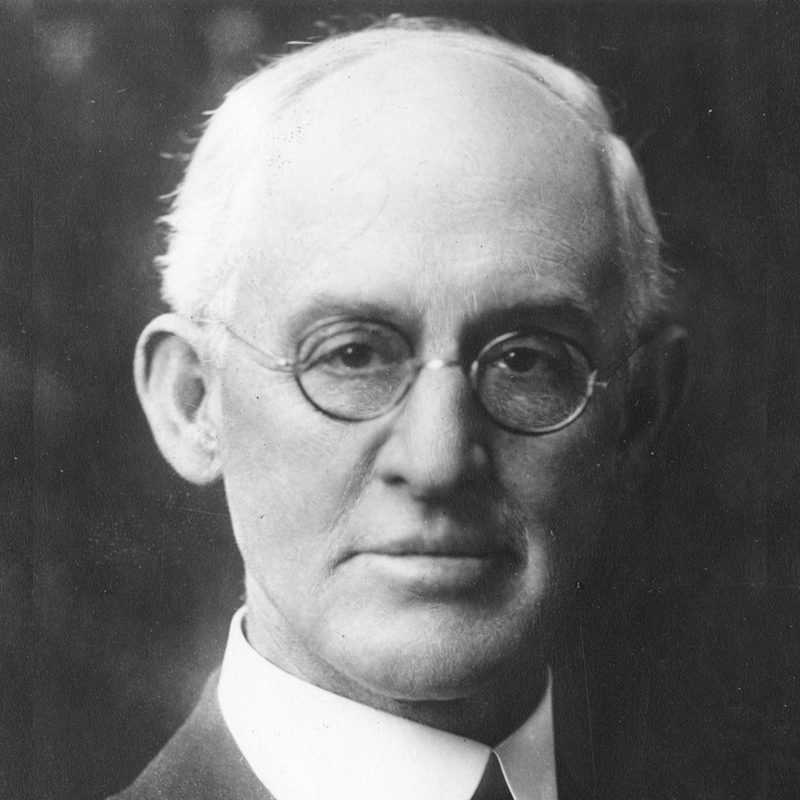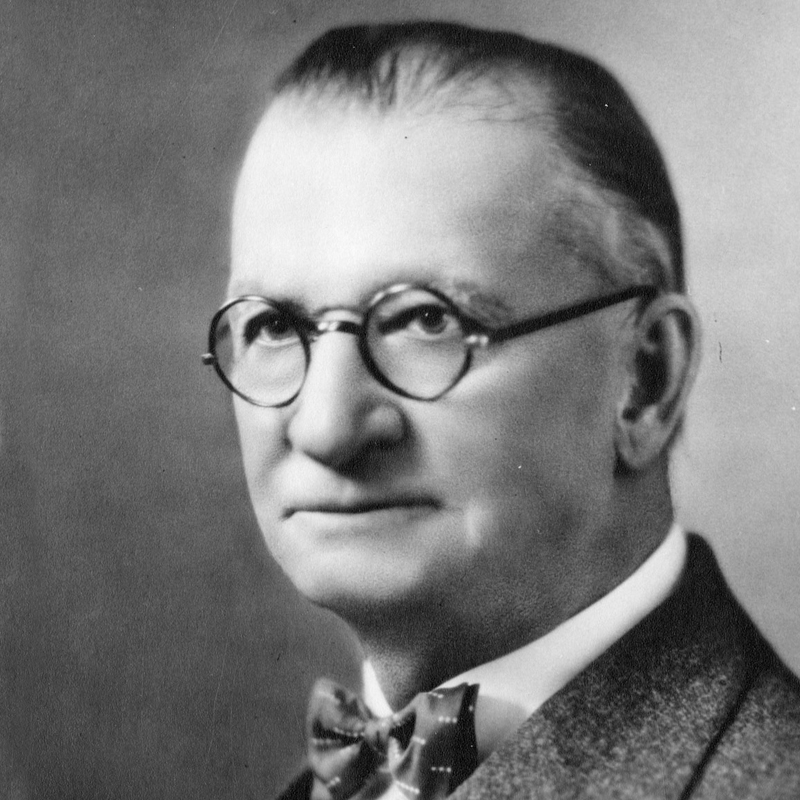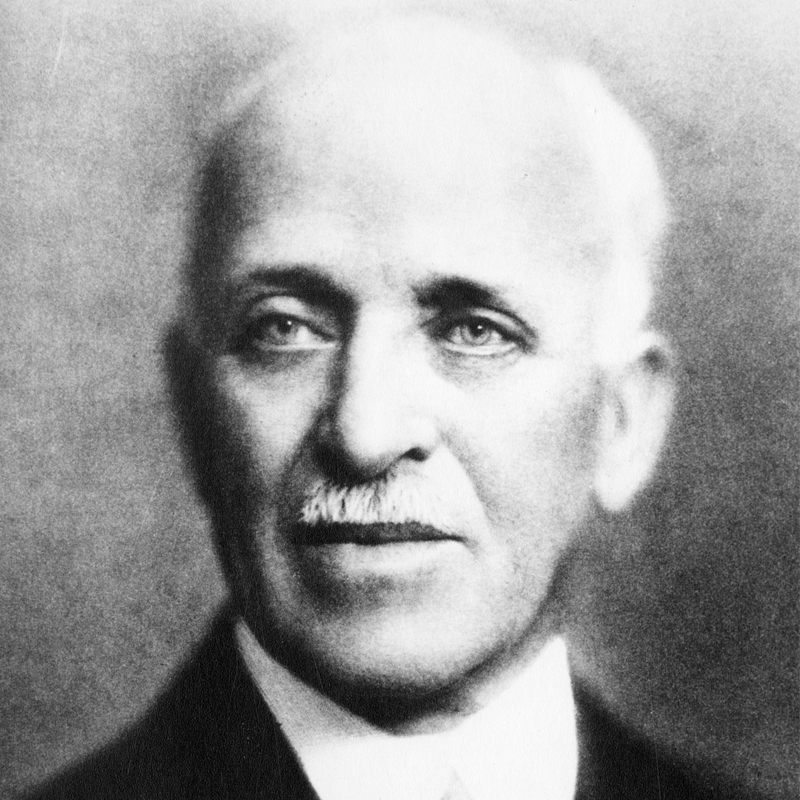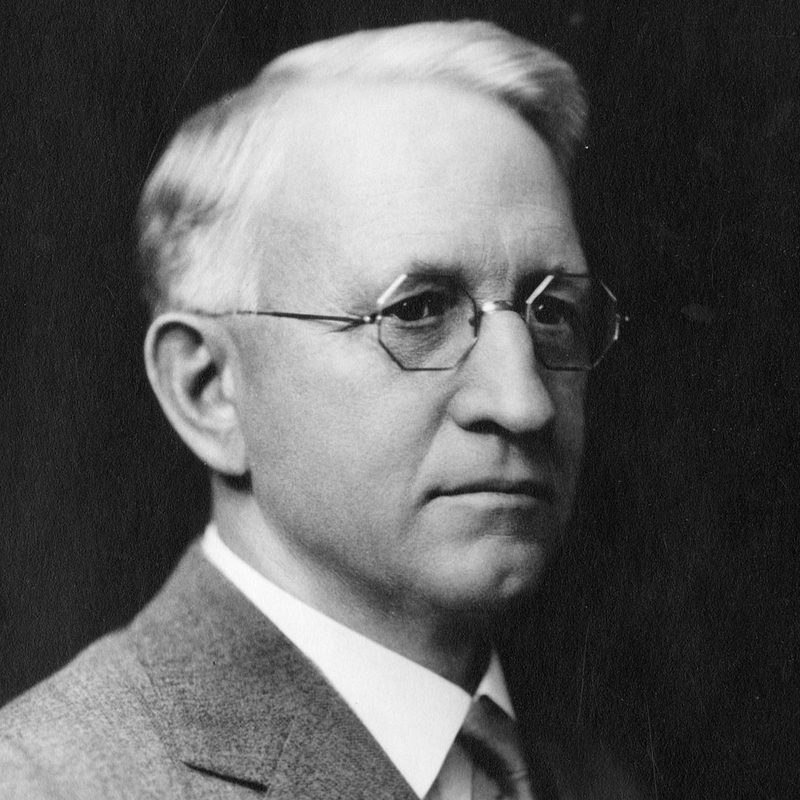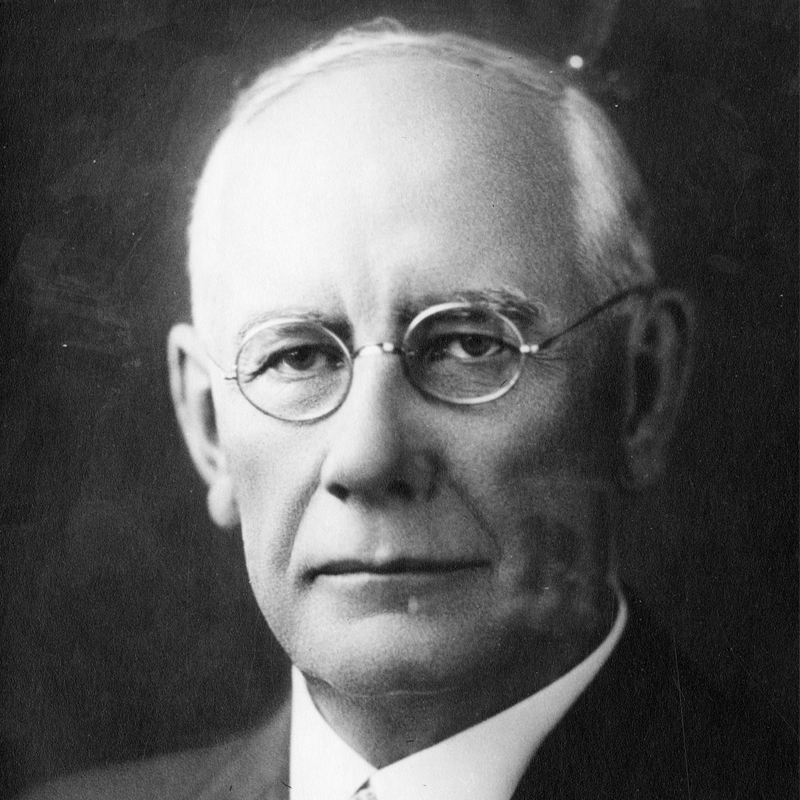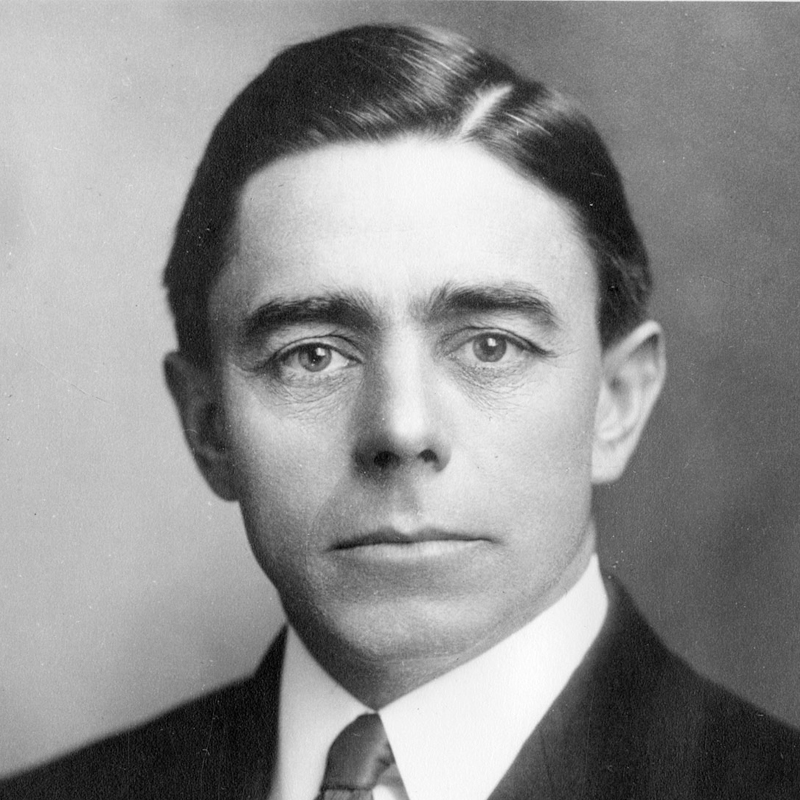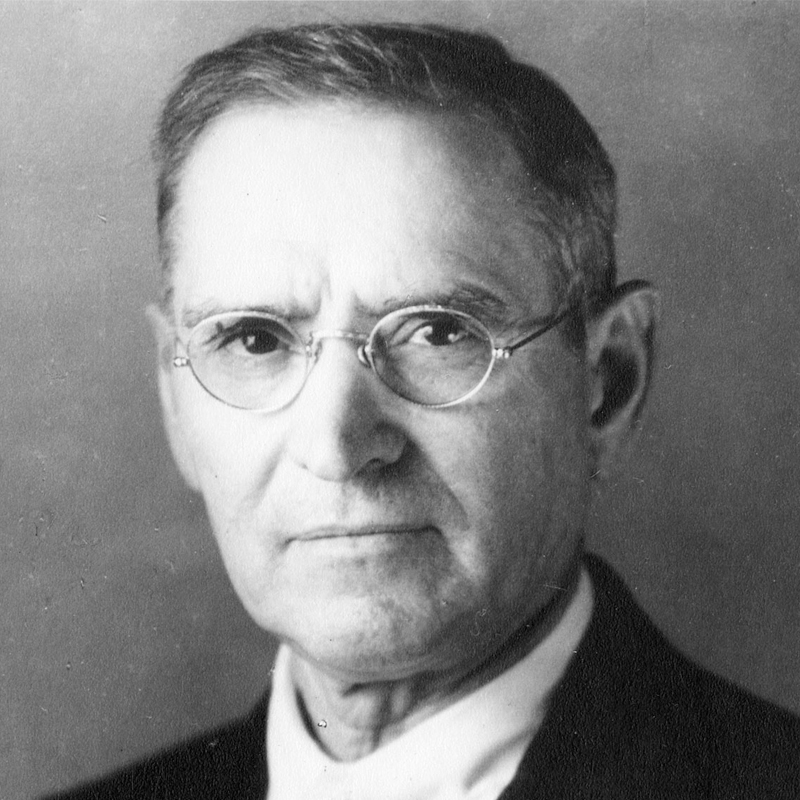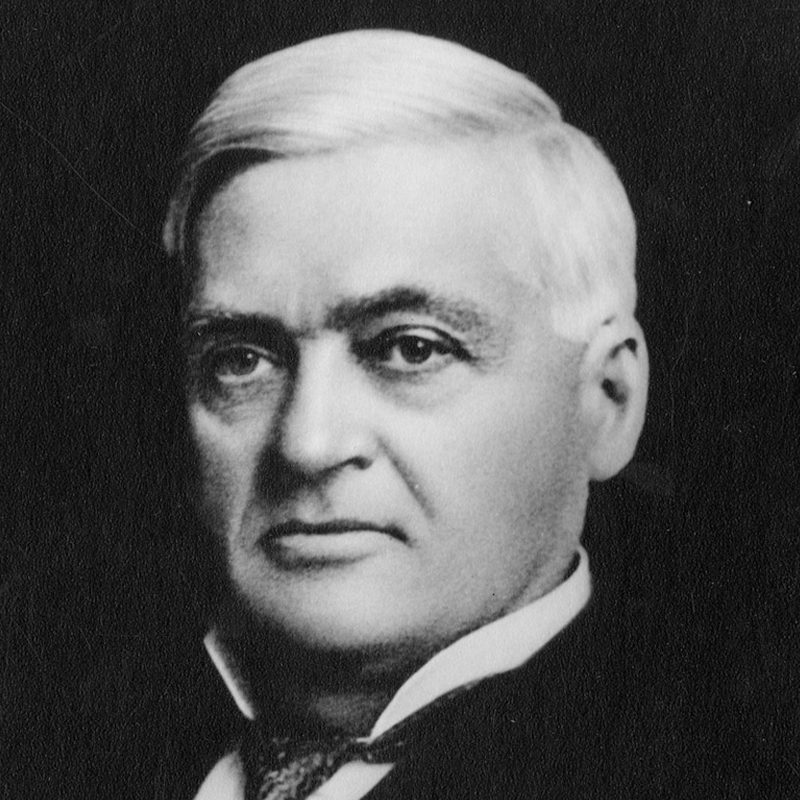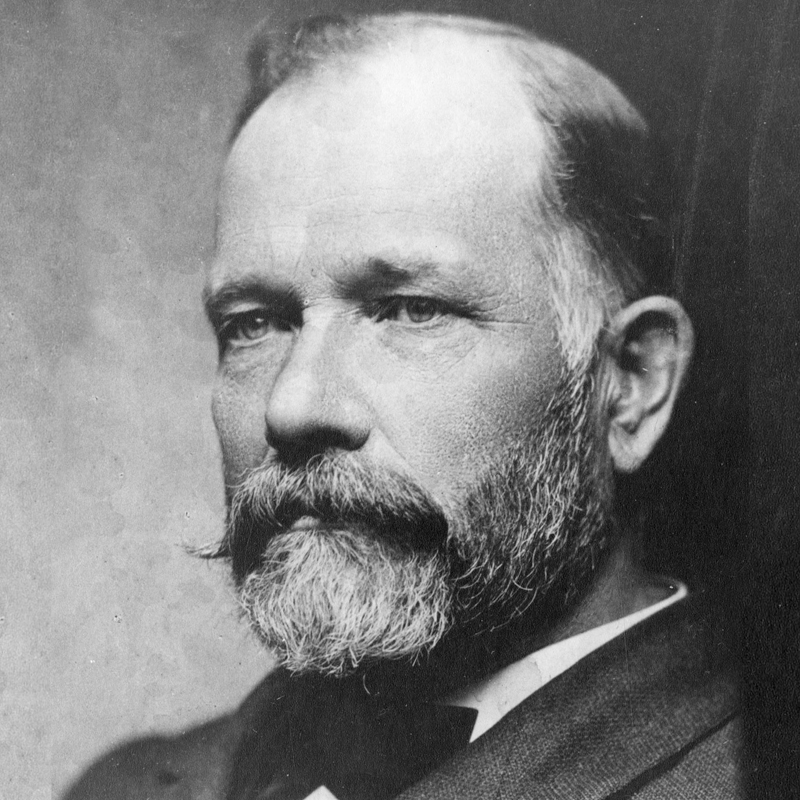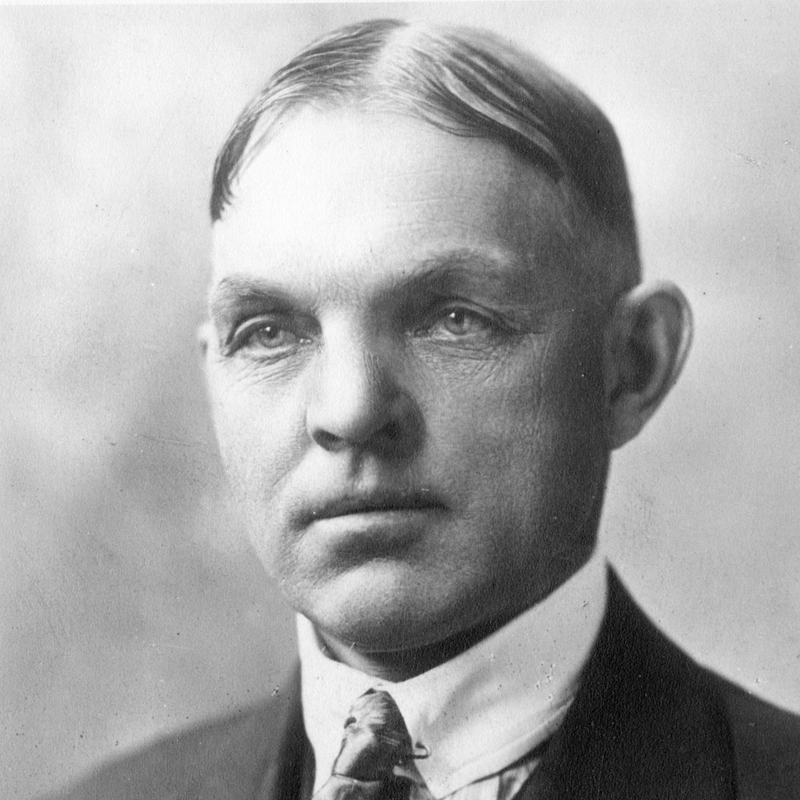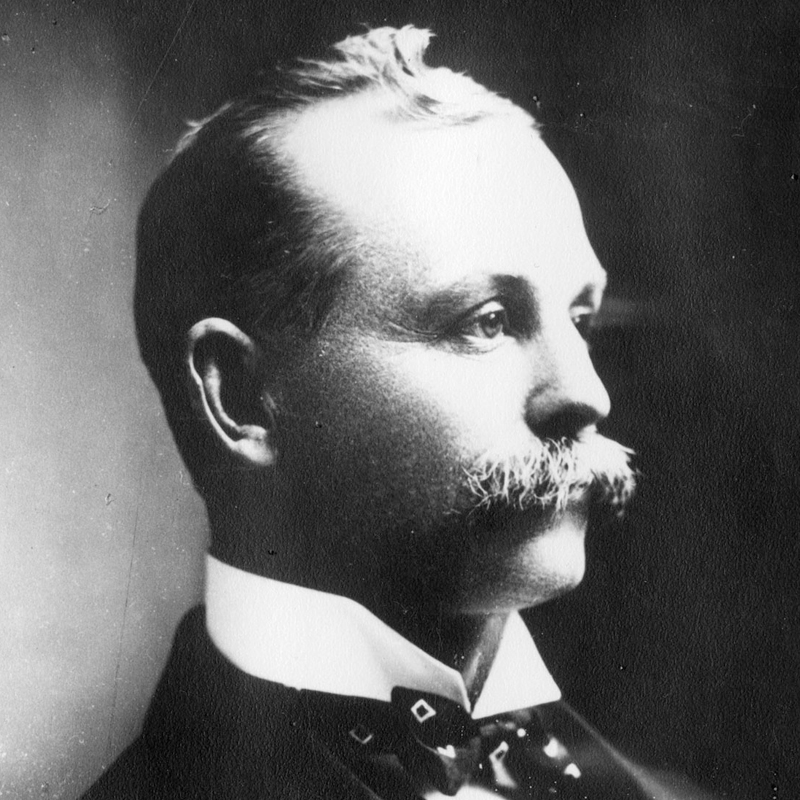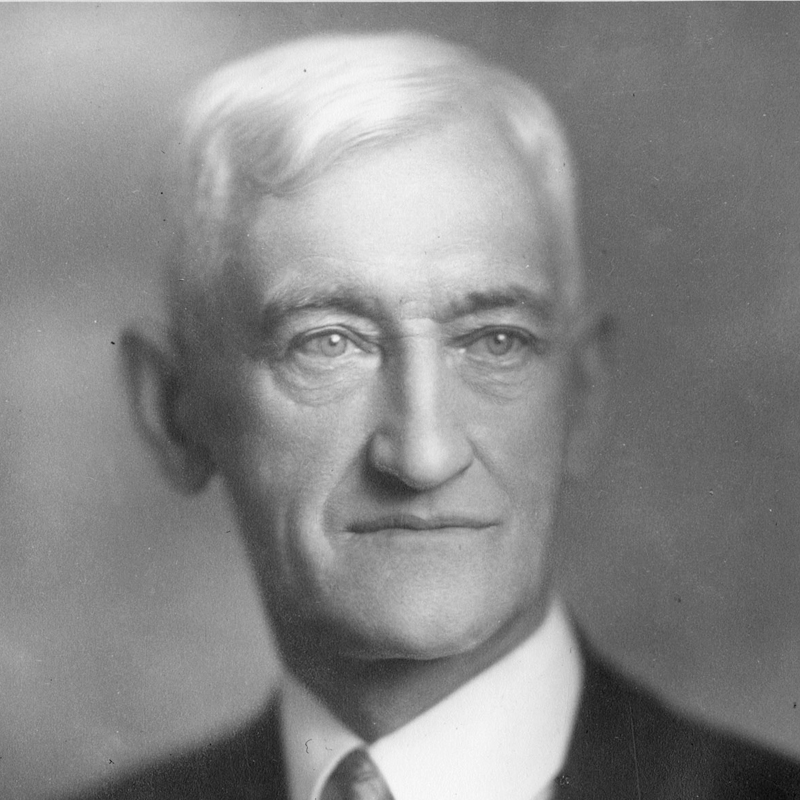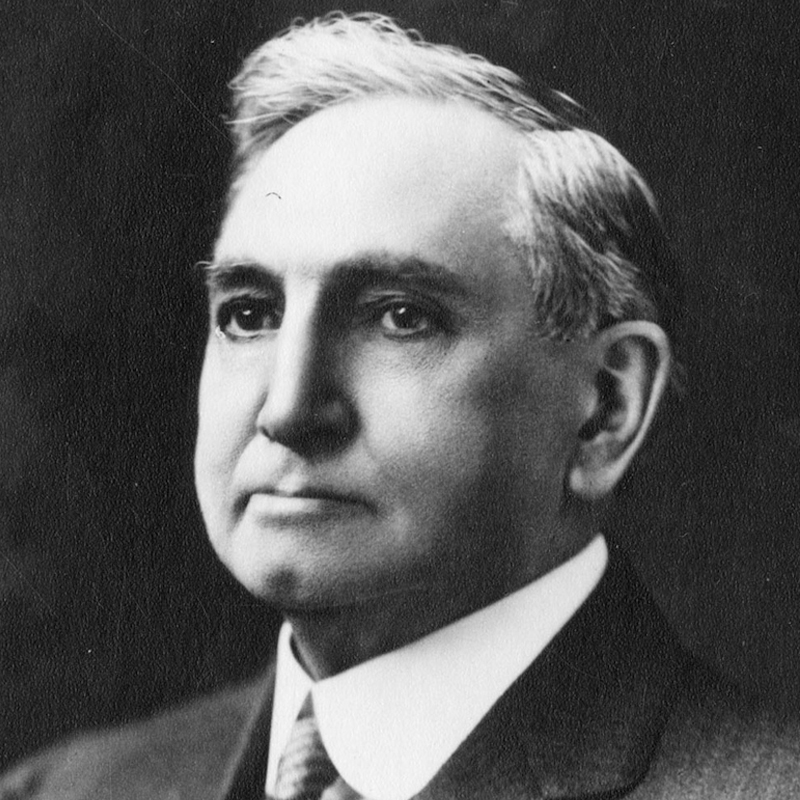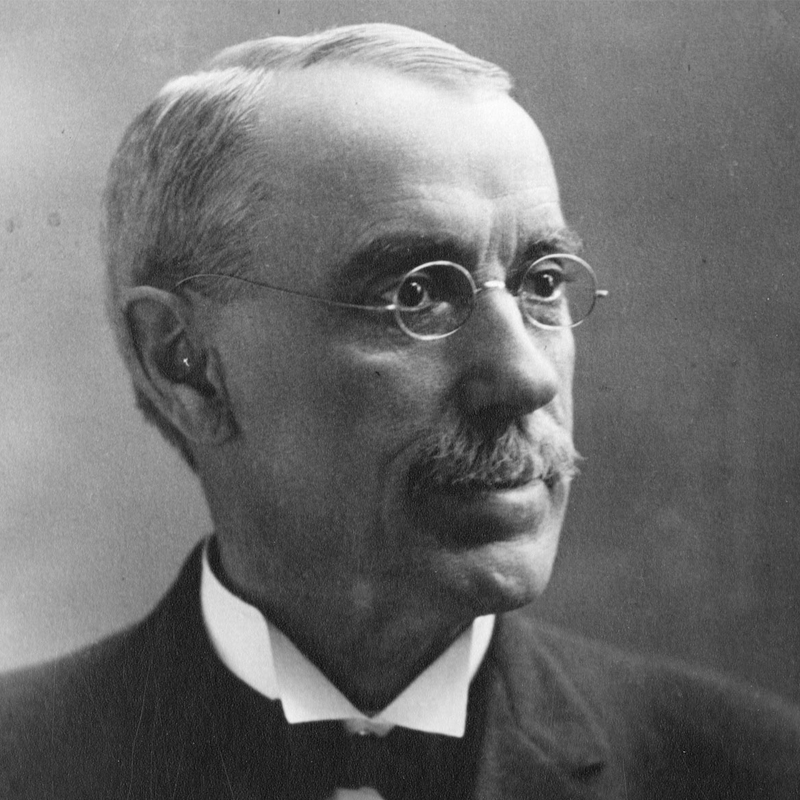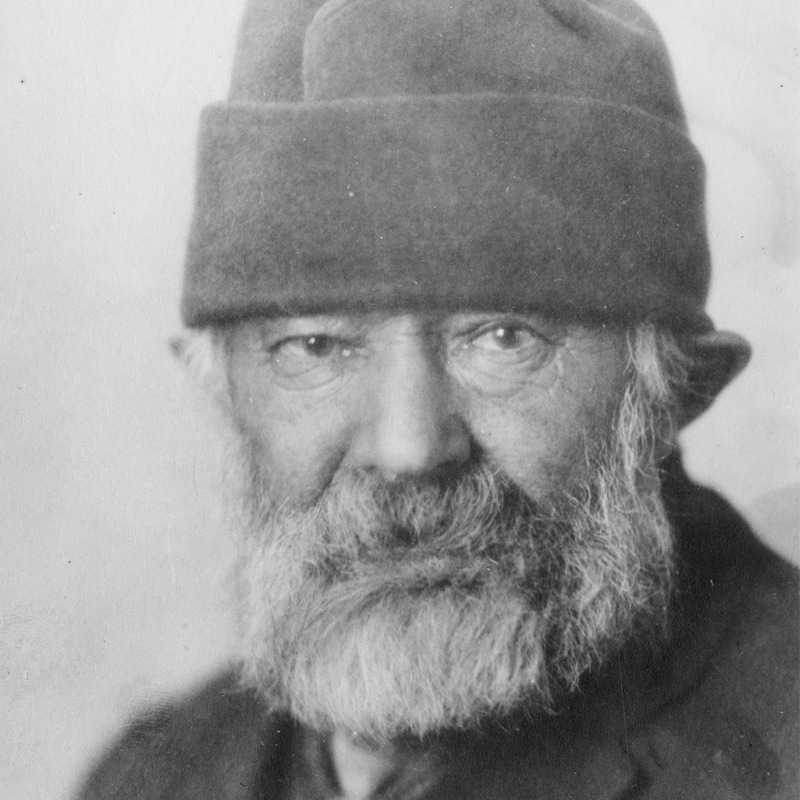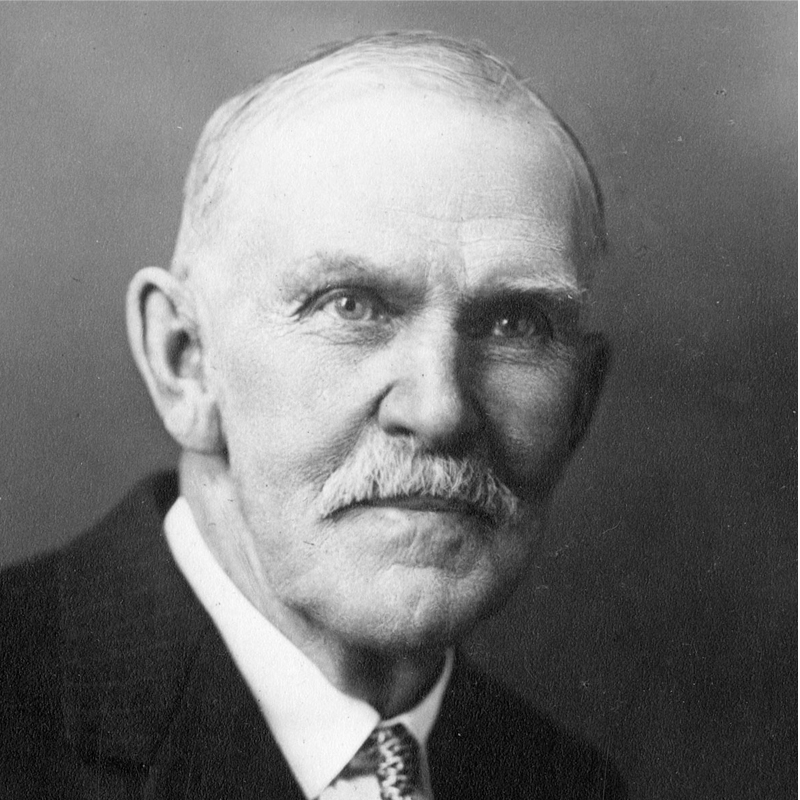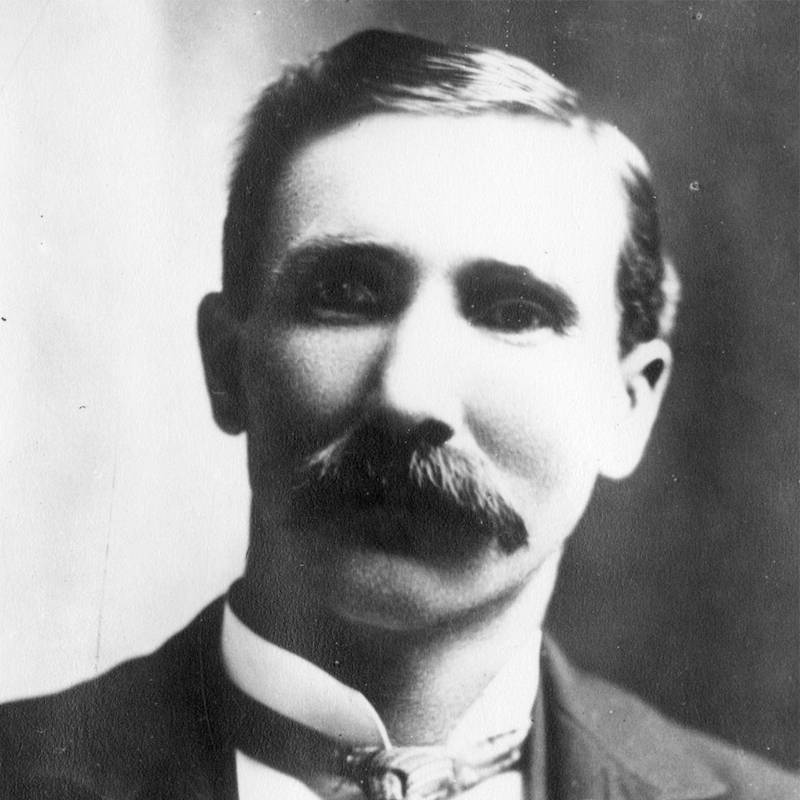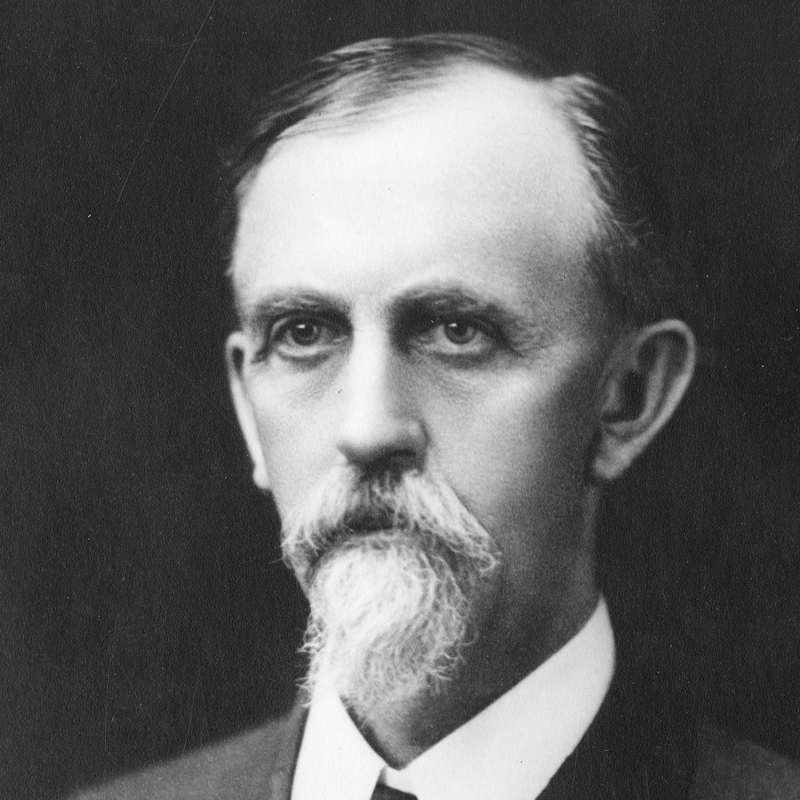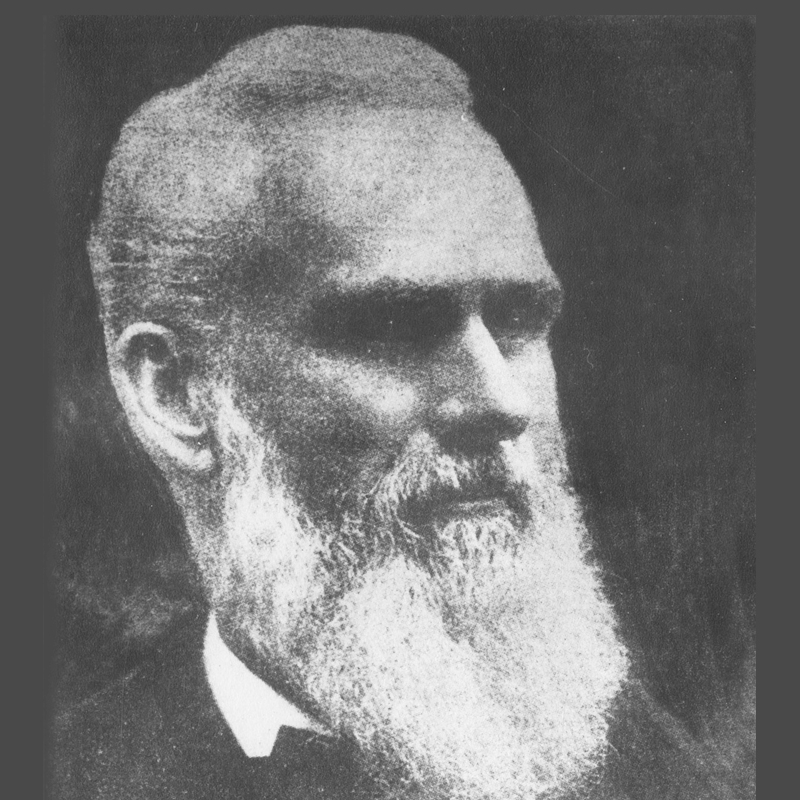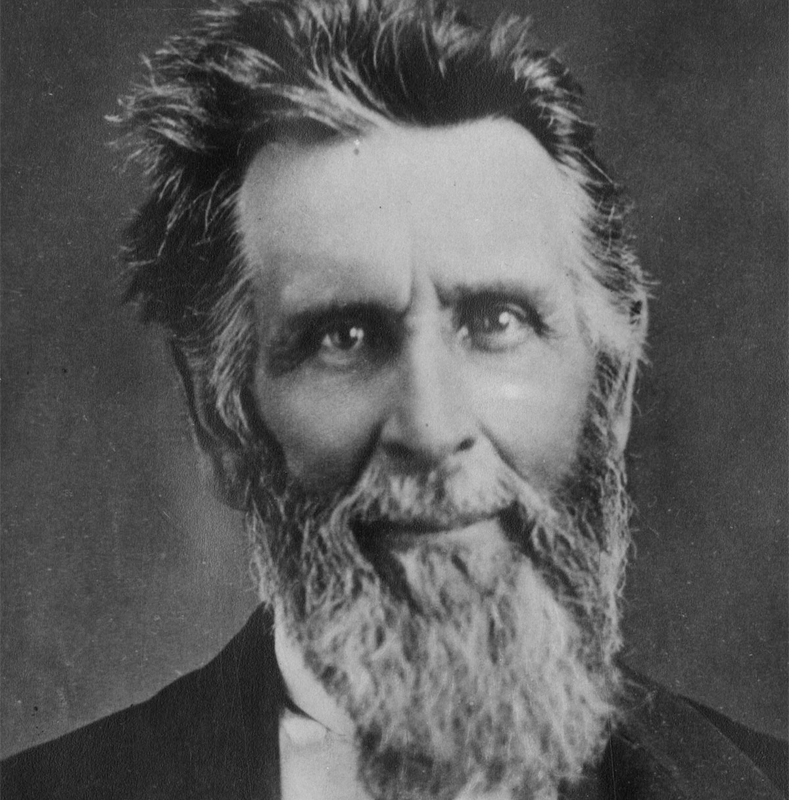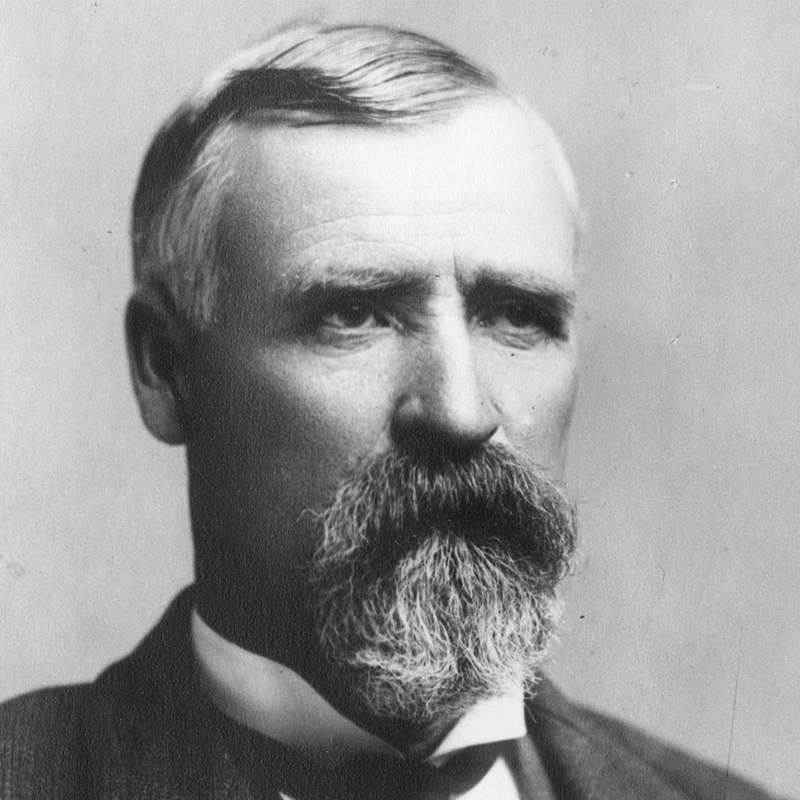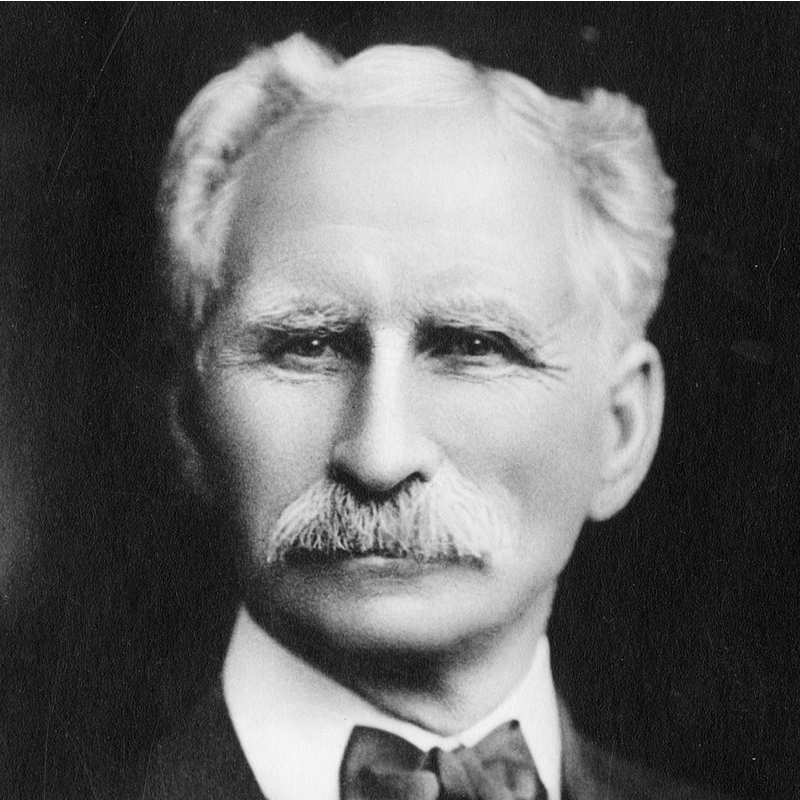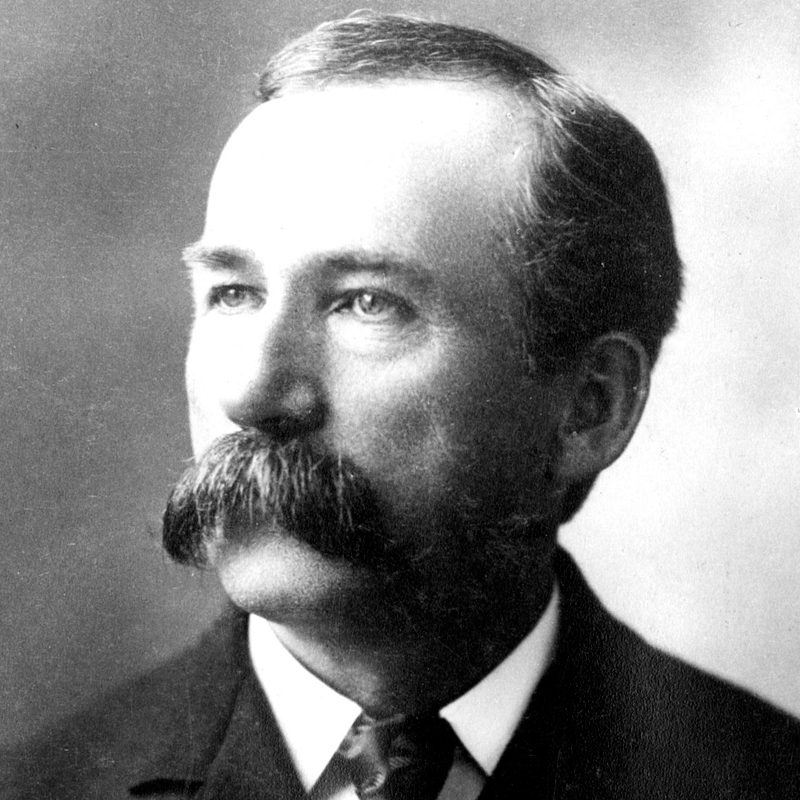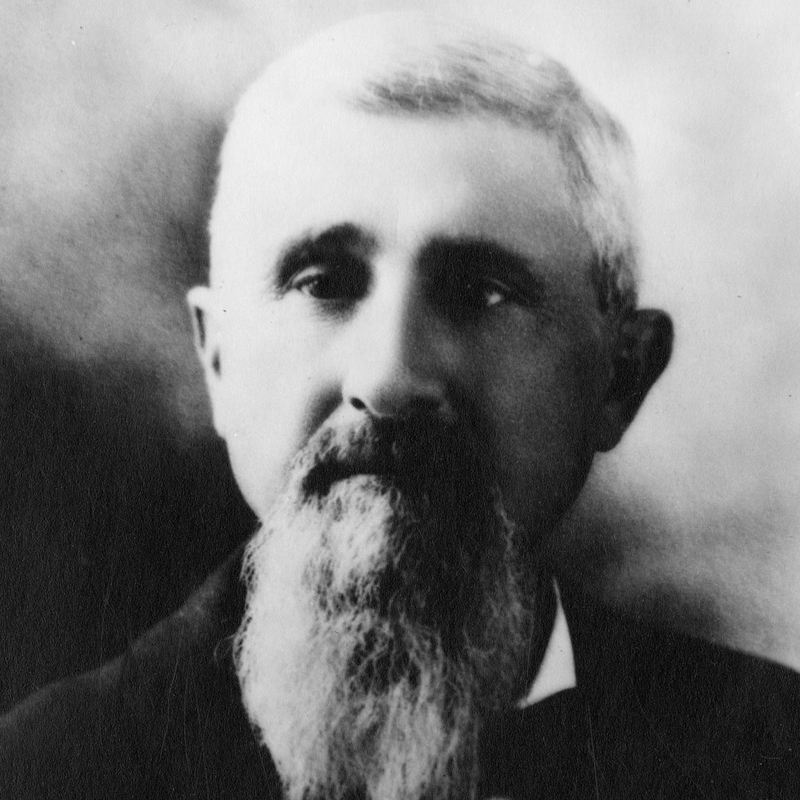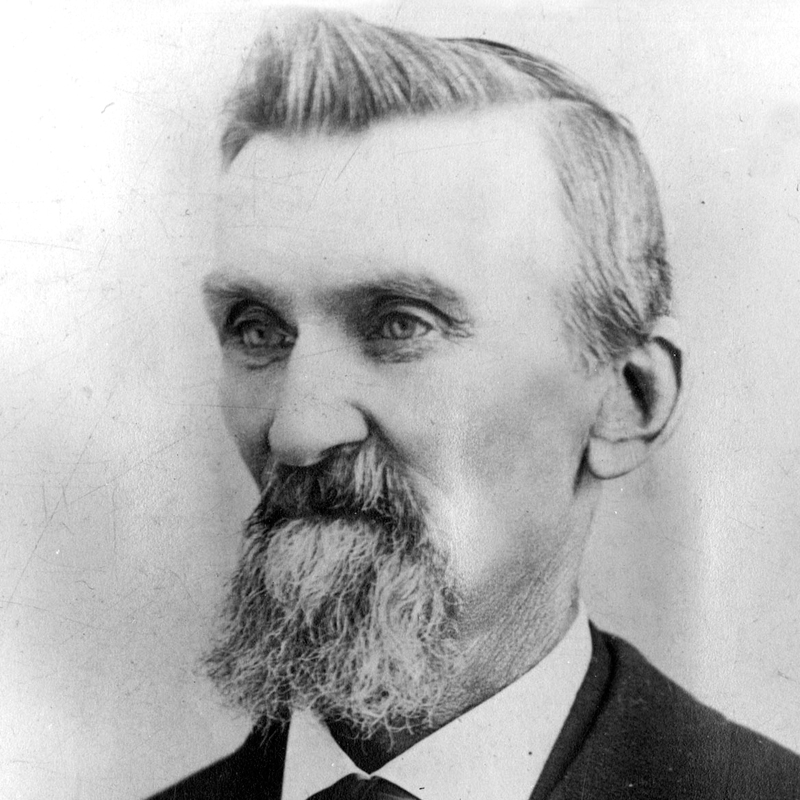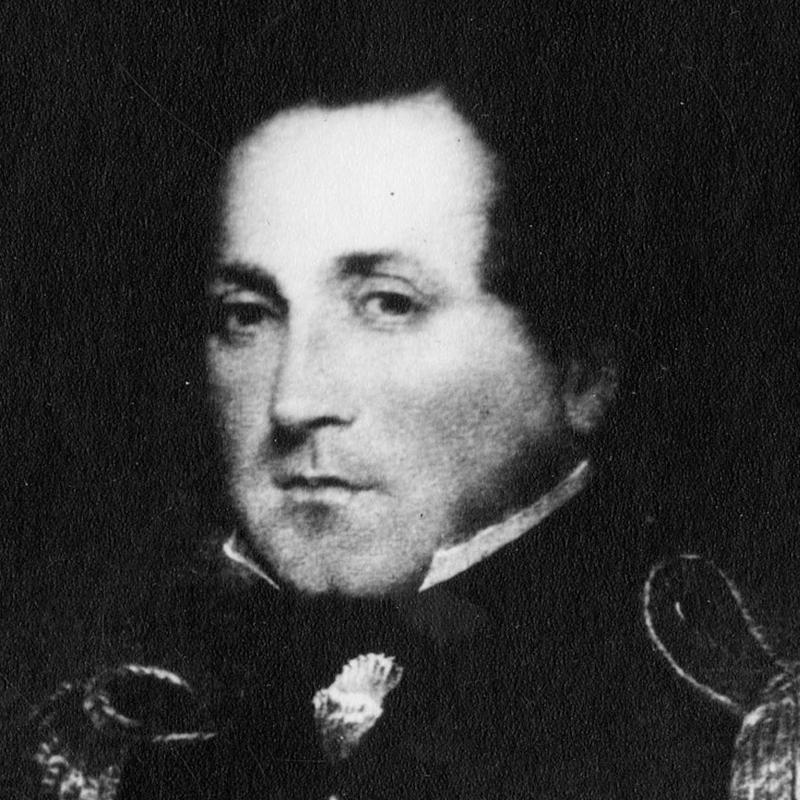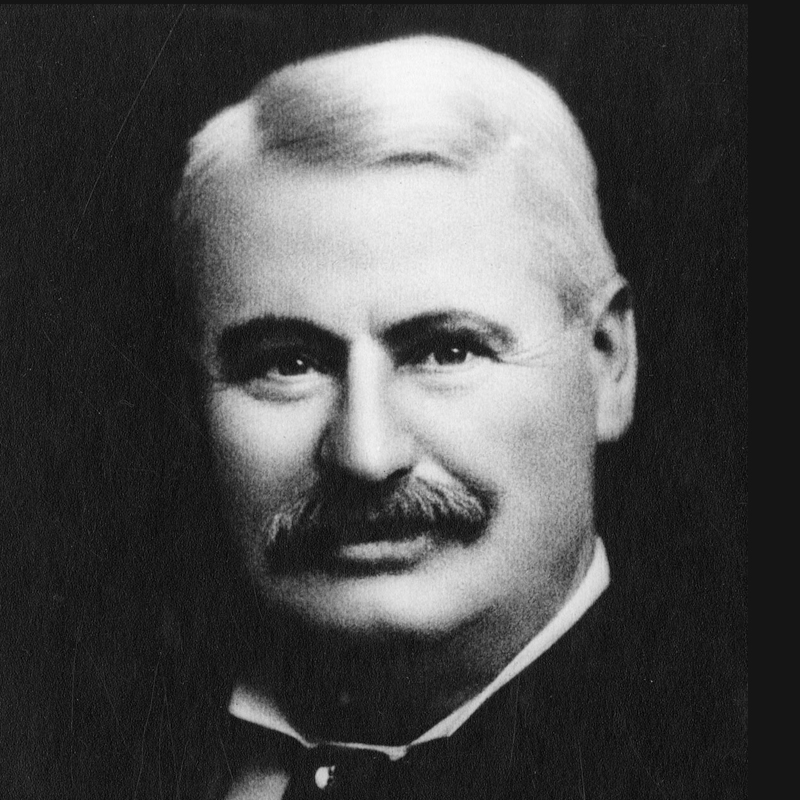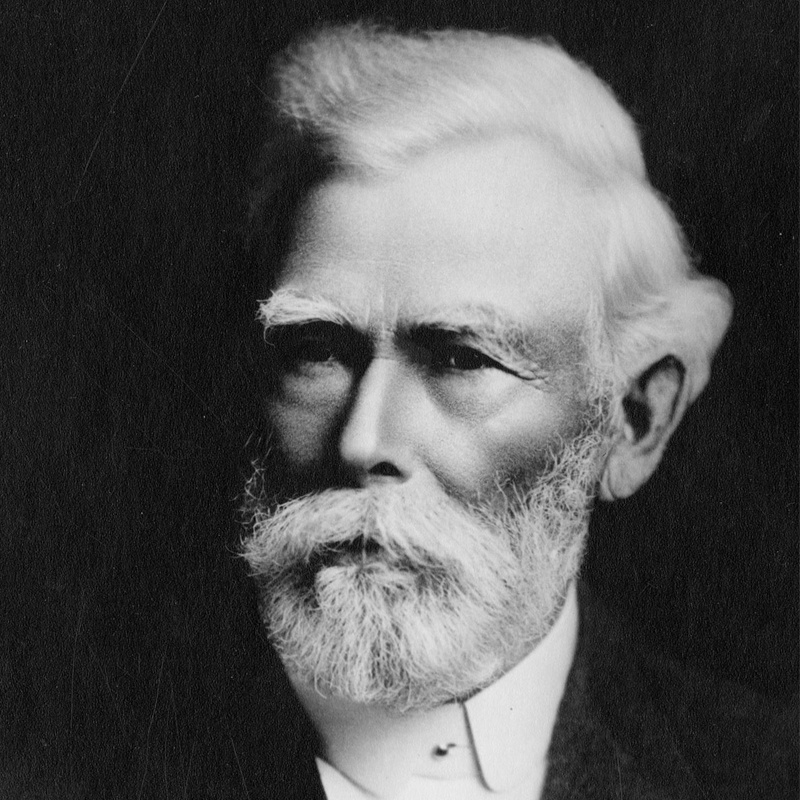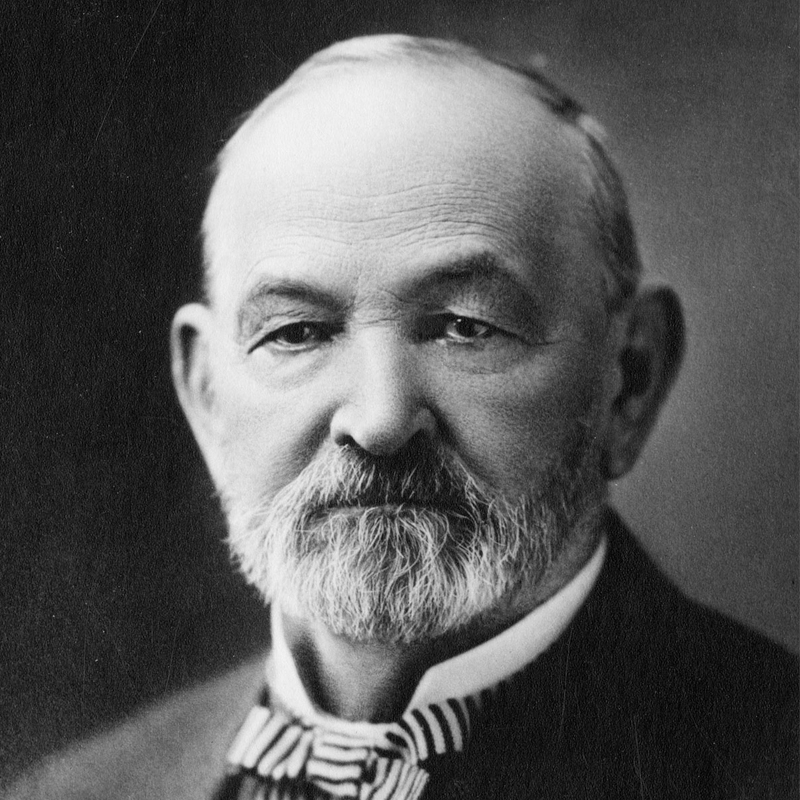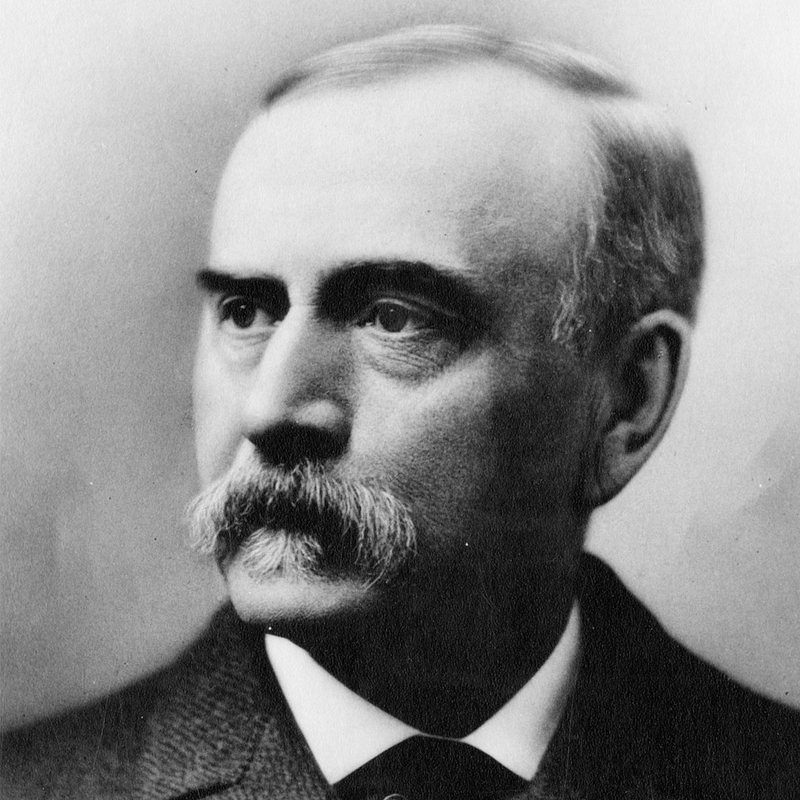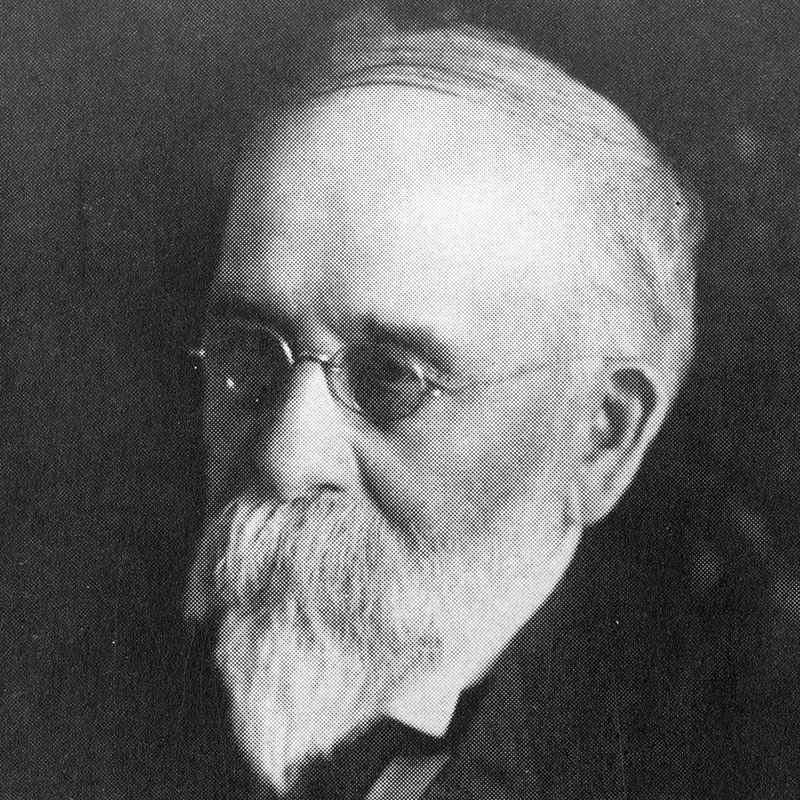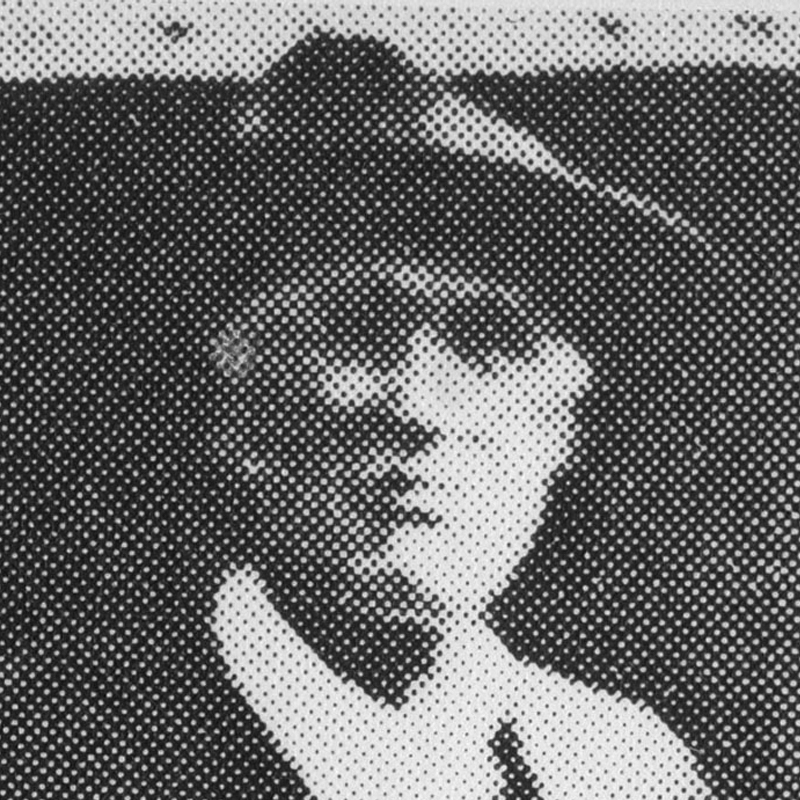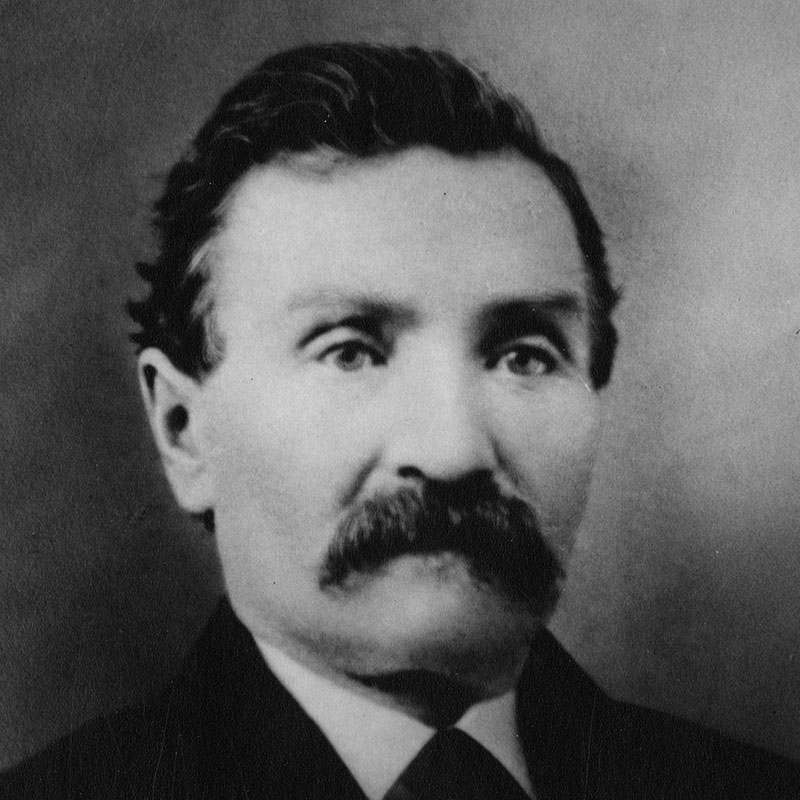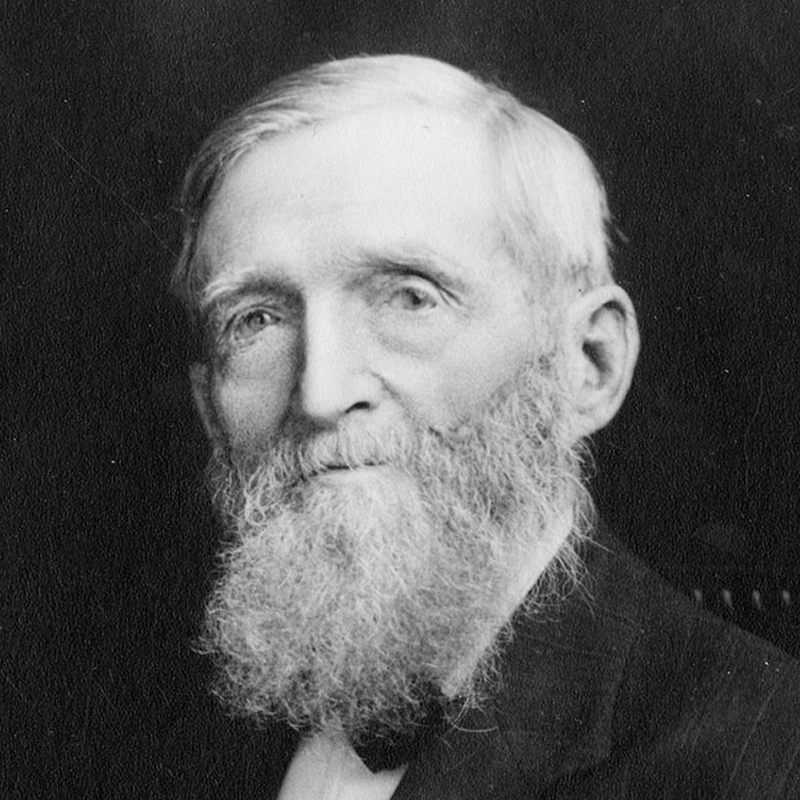2023
Honoree
Dr. Ray Ward’s greatness is not only attributed to his titles, awards, or accomplishments, but because of his integrity, his knowledge, his commitment to agriculture, his commitment to excellence and his curiosity with dirt.
2023
Honoree
Ralph Holzfaster has a lifetime of achievements as a leader who makes our state, nation and country a better place.
2023
Honoree
Bill Dicke’s life and career have had a major impact on the cattle feeding industry, not only in Nebraska but throughout the major beef-producing regions of the United States. Since launching Cattlemen’s Consulting Service in 1981, then Dicke Consulting, LLC, in 2015, his vigorous approach to innovative problem-solving in livestock nutrition has enhanced the management and profitability of feedlots and ranches in many states
2022
Honoree
Boyd and Elaine Stuhr are fourth-generation agricultural producers and live on their farm near Bradshaw. As individuals and as a team, they have been strong advocates for the agricultural industry and education in Nebraska. The Stuhrs have made significant contributions to their community, state and nation through their volunteer efforts and leadership activities.
2022
Honoree
Boyd and Elaine Stuhr are fourth-generation agricultural producers farming near Bradshaw who are strong advocates for Nebraska’s agricultural industry and education. The Stuhrs significantly contributed to their community, state, and nation through volunteer efforts and leadership activities. They received the Nebraska Cooperative Extension Meritorious Public Service Award and were selected as the “Nebraska Honor Farm Family” by The Lincoln Journal Star in 1978. The Stuhrs are members of Farm Bureau and of Zion Hampton Lutheran Church.
2022
Honoree
First while farming and later through other career opportunities, Larry emerged as a passionate advocate for agriculture. Known for sharing his voice, defending perspectives, and asking challenging questions, Larry’s remarkable professional career promoted advanced agricultural products and producers. He served as Director of the Nebraska Department of Agriculture initiating agriculture trade missions to promote selling Nebraska products. As Vice President of International Sales for Sand Livestock, he fostered relationships in international markets.
2022
Honoree
Owen Palm has given much to agricultural communities in western Nebraska, the state, the region, and the country. He has contributed to the University of Nebraska - Lincoln's Insitute of Agriculture and Natural Resources, Western Nebraska Community College, various natural resource groups, and with fellow neighbors when local devastation occurs. Perhaps Owen’s most important contribution is to Nebraska's agriculture has been through his knowledge-sharing opportunities and field day demonstrations with farmers and ranchers.
2019
Honoree
As a third-generation farmer, Bob raised cattle, hogs, soybeans and corn and later invested in various Nebraska agribusinesses. Throughout Bob’s career, he worked to build alliances between U.S. commodities to improve cross-industry partnerships. He participated in worldwide trade missions and hosted international trade groups. Bob believed in the future of agriculture, the family farm, and mentoring and supporting young farmers.
2019
Honoree
Al’s passion for the beef industry began while growing up on the family farm in Diller, Nebraska where he was involved with 4-H cattle and FFA. Al is passionate about the beef industry, education, and his community and was active in the formation of the Nebraska Cattlemen and the Nebraska Cattlemen Foundation.
2018
Honoree
Nebraska agriculture was clearly strengthened by Don Hutchens’ leadership, drive and unapologetic advocacy. Don was strategic in identifying and developing innovative programs to expand demand and escalate Nebraska’s corn industry into a robust industry. He was a treasured leadership partner in dealing with complex management and political issues and was an enthusiastic industry champion who worked tirelessly to build global markets.
2018
Honoree
The Bruntz’ helped shape Nebraska’s beef industry by utilizing a diligent work ethic in their business approaches. Not only leaving a footprint in Nebraska, David and Ann participated in agricultural trade missions throughout Asia and South America. This “power couple” played a pivotal role in promoting Nebraska beef and were the type of confident volunteer leaders every organization wanted on their team.
2018
Honoree
The Bruntz’ helped shape Nebraska’s beef industry by utilizing a diligent work ethic in their business approaches. Not only leaving a footprint in Nebraska, David and Ann participated in agricultural trade missions throughout Asia and South America. This “power couple” played a pivotal role in promoting Nebraska beef and were the type of confident volunteer leaders every organization wanted on their team.
2017
Honoree
Bob’s abilities, integrity and professionalism made him a valued advocate for Nebraska agriculture, earning him state and national recognition for his visionary leadership of farmer and rancher owned cooperatives. He was known for his integrity and honesty in protecting the interests of Nebraska’s farmer owned cooperatives. Bob believed in the mutual benefit of forging strong working relationships between Nebraska’s farmer owned cooperatives and the University.
2017
Honoree
Eugene Glock was part of the Ag40 action group providing key leadership in the development of the University of Nebraska’s IANR. He represented stakeholder interests and provided valuable input in restructuring the University Extension programs to better serve the needs of eastern Nebraska. There is no question that the University of Nebraska has been the benefactor of his sound and visionary input.
2016
Honoree
During his tenure with the Nebraska Farm Bureau, Doug more than doubled its membership, added staff, expanded programs, elevated its public policy advocacy for agriculture and increased agricultural engagement with urban leaders. He was instrumental to NFB’s increased financial support for Ag in the Classroom, 4-H, FFA, LEAD, The Leadership Center and Nebraska Agricultural Youth Institute.
2016
Honoree
Frank said a casual conversation after World War II about how farmers would need to increase production in order to feed the world was instrumental in establishing the first wheat commodity checkoff program in Nebraska. The commodity checkoff program generated funds to promote wheat products by investing in research, international and domestic marketing, policy development, publicity, and education.
2016
Honoree
Ivan and Doris are dedicated, long-time leaders in Nebraska agriculture at local, state, national and international levels being described as “icons” in the Nebraska Panhandle and “trailblazers” for many innovative changes in the ag industry. Ivan helped develop the Integrated Resource Management program and was one of the original organizers of the Range Beef Cow Symposium – both programs improved efficiency and profitability for ranchers.
2016
Honoree
Ivan and Doris are dedicated, long-time leaders in Nebraska agriculture at local, state, national and international levels being described as “icons” in the Nebraska Panhandle and “trailblazers” for many innovative changes in the ag industry. Ivan helped develop the Integrated Resource Management program and was one of the original organizers of the Range Beef Cow Symposium – both programs improved efficiency and profitability for ranchers.
2015
Honoree
Mike Johanns describes himself as “a farmer’s son with an intense passion for agriculture.” During more than 30 years of public service, Johanns worked tirelessly for Nebraska and America agriculture by serving as U.S. Senator, U.S. Secretary of Agriculture, Nebraska Governor, Lincoln Mayor, Lincoln City Council, and Lancaster County Board of Commissioners.
2014
Honoree
Dr. Taylor educated the commodity agriculture industry, the food industry, regulatory bodies, consumer advocate groups, clinicians and individual consumers on food allergens. He combined academic research with private industry to provide the food industry with creditable information, expert opinions, tools and services related to allergenic foods. Dr. Taylor was a steward of the food and agriculture industry, and a champion for those with food allergens.
2014
Honoree
Moeller won the respect and trust of others due to his unwavering integrity, objective analysis and financial responsibility. During his 35-year career, Alan was instrumental in establishing IANR business centers and personnel policies which continue to serve various units with specialized teams. Due to his vast university knowledge, he was the primary contact person for state senators and government officials for agriculture and natural resources.
2013
Honoree
In his career Dr. Doane was instrumental in revising animal science courses and curriculum, and, demonstrated his leadership and innovation as a teacher in developing laboratory manuals. As an extension specialist, Dr. Doane developed new approaches and concepts and helped establish the Nebraska Sheep Council. When asked what he enjoyed most about his career, Ted says, “I enjoyed everything. Everything. I can’t hardly recall a bad day.”
2013
Honoree
Through his leadership, Keith guided the Nebraska Farm Bureau and Nebraska agriculture through multi-year droughts, extremely low livestock prices, a beef scare due to Mad Cow Disease, a major revamp of water policy, and successful trade missions to open markets for Nebraska agricultural producers. He also spearheaded efforts to oppose higher property taxes, excessive regulations on farmers and ranchers and shaped solid federal farm policy.
2012
Honoree
Dr. Roger Mandigo was a dedicated teacher who offered new courses in meat processing, merchandising and managed the federally inspected meat science facility. His creative research led to pioneering work in restructured meat manufacturing demonstrating how whole muscle cuts with significant amounts of connective tissue and meat pieces could be flaked or ground. This technology was adopted and used in the food service industry to produce portion-controlled products.
2012
Honoree
Dr. Allen Blezek provided visionary and significant leadership for numerous organizations and effectively raised funds for various causes, especially The Leadership Center at Aurora and the Nebraska LEAD Program. His extensive travel throughout Nebraska working with public schools, agriculture producers and agribusiness representatives resulted in his raising substantial funding and also in his recruiting individuals to serve in key leadership roles on volunteer boards.
2011
Honoree
Terry’s research with corn byproducts included wet and dry milling processes used in alcohol and sweetener productions. His UNL research revealed the benefits of feeding wet gluten feed, wet distillers grains and steep liquor in cattle diets rather than drying and shipping these products to US and global markets. Using these wet products impacted cattle feeding by lowering feed costs and improving feed efficiencies.
2011
Honoree
Richard was as connected with the land as he was serving agriculture and agribusiness through his company. He applied his talent wisely as he carried on with a statewide tradition with the Nebraska Association of Conservation Districts, was a Governor’s appointee to the Natural Resources Commission, and gained prominence nationally through the National Association of Conservation Districts.
2010
Honoree
Bob demonstrated leadership and vision as he crafted and developed policy concerning property taxes. He spent hours in hearings and visiting with growers and grain dealers about bonding and warehousing. He carried bills and led discussions relating to commodity check-offs. Additionally, Bob ensured incentives were written in order to help younger farmers reach and maintain financial stability.
2010
Honoree
Senator Dierks willingly fought for equity representing Nebraska's rural interests through the legislative process. He believed in protecting farmers and ranchers from the excessive concentration and vertical integration that was occurring in agricultural production. Senator Dierks’ efforts to secure economic equity for Nebraska farmers and ranchers never overshadowed what he considered his personal responsibility in making Nebraska a better place to live and work.
2009
Honoree
Dr. Baenziger’s research in small grains breeding and genetics at the University of Nebraska added new dimensions to genetics efforts that have attracted international acclaim. His understanding of genetics allowed him the opportunity to utilize diverse scientific techniques to solve difficult problems. Steve’s team released wheat varieties with excellent disease resistance, and terrific milling and baking qualities that are well adapted to Nebraska’s diverse environments.
2009
Honoree
Dale demonstrated a life-time passion for teaching scientific concepts and applications to enhance Nebraska’s production agriculture. He was an authority on understanding the diversity and dynamics of corn and soybean production. In the classroom, Dr. Flowerday’s success was his effective communication ability. Regardless of the topic, he shared his well-educated opinions which were consistently grounded in experience and scientific fact.
2008
Honoree
Under Eric Brown’s leadership, the Nebraska Radio Association grew to blanket Nebraska and Kansas with agricultural information. Regardless of the agricultural economy, Eric remained committed to serving agriculture through his farmer-rancher-owned radio group, The Nebraska Rural Radio Network. With a vision based on rural Nebraska community needs, Eric maintained station viability and led his stations back to prosperity when Nebraska’s rural economic climate improved.
2007
Honoree
Ed’s special interest in water and irrigation policy led to the formation of LB962, a visionary idea for water policy in Nebraska. Although many recognized the importance of water to Nebraska agriculture, Ed Schrock was the person who provided urgency and action to resolve the challenges of declining water availability and increasing demand.
2006
Honoree
Keith's entrepreneurial spirit provided him a successful hybrid seed producing career resulting in increased demand for his seed. Soon he built his own seed production plant producing hybrid wheat, sorghum, and soybeans. When large companies began buying into seed corn production, Keith sold his seed production plant and on a part-time basis, began experimenting with popcorn production. After retiring, Keith devoted his time to BKH Popcorn and successfully marketed popcorn world-wide.
2005
Honoree
Bryce was a visible and effective spokesman for agriculture. He never strayed from fundamental principles of democratic capitalism, free competition, and entrepreneurship. He was a true visionary on water issues and was always involved in farm policy. He was the leader in the campaign to get the State constitution amended so agricultural land could be valued on its productivity.
2004
Honoree
Rod has worked extensively in Washington, D.C., representing the National Corn Growers Association in the development of policy and legislation for GATT, NAFTA, and the 1996 Farm Bill. He was instrumental in the development and building of the KAAPA Ethanol Plant at Minden and was a member of the board of managers of KAAPAMEX L.L.C. Rod also served two terms as ABN President.
2004
Honoree
Mark served three terms as ABN President and was known for his willingness to explain the mutually beneficial relationship between agriculture and the University of Nebraska. Additionally, he served as the North Central Regional CARET president supporting agricultural extension, research, and teaching. His carefully thought advice and strong work ethic represented the characteristics of Nebraska agriculture at a regional level.
2003
Honoree
Dr. Splinter’s pioneering basic research resulted in his obtaining six patents they kept him loosely associated with manufacturing and agricultural industries. Bill’s work included areas of plant and animal growth dynamics, water and energy conservation, and irrigation management. His leadership contributed to the development and advancement of Nebraska’s agricultural industry, and to the betterment of the University, Nebraska and the U.S.
2002
Honoree
Dick’s goal was to protect and enhance existing natural resources to ensure a livelihood for future generations. Dick utilized parasitic wasps versus insecticides for fly control in his feedlots; and city sewage sludge and manure from his feedlots as fertilizer to prevent groundwater contaminations. He also recognized the importance of water efficiency ensuring all center pivots in his operations were modified to operate under low pressure.
2002
Honoree
Max distinguished himself through his commitment and service to the pork industry and to agricultural and civic organizations in his community and region, statewide, nationally and internationally. Ax served selflessly demonstrating his desire for fairness and opportunity for young and smaller producer operations. He displayed an intense interest in competitive markets and concern over how producers were treated in price discrimination and market access.
2001
Honoree
In 1949, Hollis Miller’s seed and supply company focused on providing quality seed and improving production through fertilizer and chemicals. Additionally, he developed a seed cleaning facility which contributed to the York County economy. Hollis recognized the benefits of anhydrous ammonia and was the first marketer in 1952. He also encouraged soil testing, liming soils where needed and promoting efficient use of fertilizer and chemicals.
2000
Honoree
Bill was a leading developer of the fertilizer industry in western Nebraska. He recognized zinc deficiencies in Western Nebraska and applied zinc fertilizer to correct the nutrient imbalance. Through farmer meetings, demonstration plots and personal contacts, Bill was instrumental in promoting the prudent use of fertilizers and chemicals and stressed the use of soil tests to predict fertilizer requirements to reduce excessive nutrient applications.
2000
Honoree
Bob hosted scores of visitors throughout Nebraska, the U.S. and foreign nations. Their operation was known for innovations in feed lot design, feedlot run-off control using settling areas and holding ponds, irrigation scheduling, irrigation run-off re-use systems, chemigation, reduced pressure pivot irrigation for energy conservation, and modified reduced tillage farming methods. His operation evolved into a model family farm addressing the need for space, safety, efficiency, and neatness.
1999
Honoree
Roger has a long list of accomplishments in public service and support to agriculture. As chairman of the Government Affairs Committee of the Nebraska Livestock Feeders Association, Roger started a program that brought legislative assistants from urban congressional offices in Washington, D.C. to Nebraska farms and ranches. Roger was an effective public servant for Nebraska farmers and ranchers and a respected spokesperson for Nebraska agriculture.
1998
Honoree
Carlson impacted Nebraska agriculture and held numerous national positions promoting agricultural products in domestic and foreign markets. He increased value-added agricultural opportunities, improved trade relations while dealing with a serious drought in Nebraska. While president of the National Cattlemen’s Association, Merlyn initiated the first “Industry Plan” which eventually lead to the national beef check program changing the course of the beef industry.
1997
Honoree
Leonard Fleisher left a legacy for his son Mathew to expand. Mathew made significant improvements in the design of the till planting equipment and the cultivator. Additionally, he expanded the company product line to feed mixer wagons, roller mills, a large line round bale of handling equipment, and a rear mounted guiding planting and cultivating down the row (the Scout Guidance System).
1997
Honoree
Leonard’s beginning was in manufacturing improved tractor seats to mitigate persistent back problems for farmers. That pioneering spirit led him to develop the concept for the commercial production of a corn planter that did not require plowing. Leonard successfully designed the till plant system which proved the efficacy of leaving residue on the surface and improving infiltration characteristics.
1997
Honoree
During his UNL leadership tenure, Dr. Omtvedt achieved significant milestones, bringing the science and application of collaborative planning to unprecedented levels. Due to the success of Agriculture 2001, he instituted IANR’s Strategic Plan which considered long-term implications of near-term decisions and actions. His disciplined approach to strategic planning, and commitment to achieving targeted results has led the Beadle Center to be viewed as a bridge between campuses, disciplines and interests.
1996
Honoree
By utilizing sound water management and conservation theories, Dr. Sheffield significantly impacted the development of Nebraska’s agricultural economy through irrigation practices. During his Superintendent tenure at the North Platte Experiment Station, he established the Sandhills Agricultural Laboratory at Tryon. After joining IANR, Dr. Les Sheffield conducted irrigation tours that highlighted the importance of center pivot irrigation.
1995
Honoree
Rob Raun dedicated his life to the advancement of Nebraska agriculture and creating a better understanding of rural-urban relations. Rob was a successful leader working hard to achieve goals related to improve agriculture in Nebraska. He served in a variety of state and local positions throughout his career all focused on the future of Nebraska agriculture.
1994
Honoree
Bob Gingery has applied his extraordinary brand of leadership in many groups, organizations and associations associated with agriculture. Beginning his career as a vocational agriculture instructor, his organizational talent, combined with his ability to motivate people, led him to agribusiness. Additionally, Bob volunteered countless hours of organizational leadership to the promotion and understanding of agriculture throughout Nebraska.
1994
Honoree
Spanning public and private sectors, Paul Sindt gained success in agriculture, and returned exemplary service. Following military service, he was involved in the family’s grain and livestock enterprise and committed time to teaching agriculture to returning veterans. Paul left farming in 1970 to pursue various agricultural positions throughout Nebraska government winning the respect and appreciation of legislators for his tenacious support of IANR.
1993
Honoree
Dayle was most valuable to the Governors, to the Legislature, and to the Soil and Water Conservation Commission working with state, regional, and federal agencies. As Executive Secretary of the Nebraska Natural Resources Commission, Dayle was responsible for negotiations involving various proposed amendments to the Natural Resources District Law and considerations related to the implementation of 24 new Natural Resources Districts.
1993
Honoree
Dr. McGill was one of the most noted teachers in the history of the Ag College, now the College of Agricultural Sciences and Natural Resources. He taught the genetics course while handling other assignments until he retired in 1989. During his career, he touched thousands of students, was recognized as an outstanding teacher; was an adviser to individual students and student organizations; and provided counsel to colleagues.
1993
Honoree
Martin Massengale displayed unquestionable integrity to his academic duties, both in classrooms and in administration, making him a unique leader. Despite a limited arts background, Dr. Massengale supported the Lied Center for Performing Arts construction project recognizing the impact the Lied Center would have in serving University students and Nebraska citizens. Proving versatility, Dr. Massengale was also chairman of the President’s Commission of the National Collegiate Athletic Association overseeing intercollegiate athletics in America.
1992
Honoree
Dr. Varner recognized agriculture as the basic industry in Nebraska supported by strong programs at the University College of Agriculture, the Experiment Station, and the Extension Service. One of his initiatives related to Nebraska’s water resource, included research and education. Dr. Varner believed that effective water management offered economic gains and recognized the growing urgency to protect the quality and quantity of surface and ground water.
1991
Honoree
Virgil Johnson joined the University staff spending his career in plant breeding and genetics. To amplify his capabilities as a scientist, he was involved with wheat research at Nebraska, the State-Federal Wheat Research Program of the Hard Red Winter Wheat Region, and the International Wheat Performance Nursery. The 28 improved varieties released by the Johnson-Schmidt team were grown on 90% of Nebraska’s wheat acreage and a major part of the total U.S. wheat acreage.
1991
Honoree
John Schmidt provided leadership to improving field and greenhouse methodology, special nursery plant equipment, and operational techniques resulting in increased gains from more effective handling and evaluation. He was a honored international authority in wheat genetics, breeding and cytogenetics. The 28 improved varieties released by the Johnson-Schmidt team were grown on 90% of Nebraska’s wheat acreage and a major part of the total U.S. wheat acreage.
1991
Honoree
Charlie integrated his plans and work with all campus departments and other stations. He effectively worked with industry in machinery development and weed control. Charlie was respected by peers and associates at local, state, regional, national, and international levels as an authority on wheat production, weed control, conservation production systems, soil erosion control, dry land farming, and tillage equipment.
1990
Honoree
Jack Maddux made southwest Nebraska an active site for innovative range, water, and livestock management. He was an outspoken proponent for the application of sound, disciplined business practices in agricultural operations. With a keen understanding of public policy impacts on agriculture, Jack played a central role in crafting Nebraska’s water policy legislation making Nebraska a model for other states.
1990
Honoree
John Klosterman was recognized as a central figure in creating the National Cattlemen’s Association and the Nebraska Cattlemen, merging fragmented interests into more powerful unions. He was active in banking and producing feedgrains, soybeans and forage crops, and was involved in local soil and water conservation programs. John was also instrumental in the formation of IANR during the College of Agriculture reorganization.
1990
Honoree
Jim Roberts successfully applied his management expertise to a range of agricultural interests in private and public sectors. Jim was at the helm of grain farming, ranching and cattle feeding operations, managed a packing plant, grain company and commodity brokerage, and served as a consultant to lenders and investors in agriculture across. Jim was also known for his political arena work on behalf of UNL and IANR.
1989
Honoree
Before his appointment as the 23rd U.S. Secretary of Agriculture, Clayton Yeutter’s career included production agriculture, private law practice and distinguished public and private-sector service in agricultural policy development, economics, marketing, and trade. He recognized that water legislation, taxes and various other policy issues were of paramount importance to Nebraska’s agricultural community. His advice to farmers, “If you want to make your living by speculating, get out of farming and devote your time and energy to studying the markets.
1988
Honoree
Dr. Donald Hanway served in the University of Nebraska Agronomy Department. He helped build strong agronomy teaching, research and extension programs in Nebraska. Don was a respected adviser to seed and certification industries; a counselor to crop commodity organizations; an active proponent for integrated conservation production systems and interdisciplinary extension-research programs; and an experienced and effective leader of technical aid programs in developing countries.
1987
Honoree
Congresswoman Virginia Smith was the first woman elected to Congress from Nebraska. She served in the U.S. House of Representatives representing the Third District of Nebraska which included 62 of the 93 counties of the state, 79% of its land area. Additionally, Congresswoman Smith was the first woman inducted into the Nebraska Hall of Agricultural Achievement and the first woman recognized as a NHAA Honoree.
1986
Honoree
Jerome Warner served continuously and effectively in the Nebraska Legislature beginning in 1962. Throughout his legislative career, he actively supported agriculture and education at all levels. He and his brother Charles operated a livestock and grain farm with registered Hereford cattle as a major enterprise. Jerome was also director of Lincoln Mutual Life Insurance Company.
1985
Honoree
William Krejci was born on the Krejci homestead near Exeter where he lived his entire life except for 10 years when he lived on a neighboring farm right after marriage. William specialized in livestock production where his work in feedlot waste control earned him the Governor’s appointment to the Nebraska Environmental Control Council.
1985
Honoree
Milton Fricke was a leading force in Sarpy County’s Soil Conservation District in 1945. He served on the Nebraska Soil and Water Conservation Commission and on the National Soil and Water Association Board of Directors. Milt, his wife and sons formed a corporation consisting of 1,400 acres and 125 purebred Holsteins. His land included contour farming, conservation cropping, residue management, and 15 acres of native prairie.
1984
Honoree
From his home base in Dawson County, Harold Stevens literally reached out to the world, leading 4-H Heritage, People-to-People and other agricultural tour groups to destinations across the U.S., Europe, Asia, Africa, and the South Pacific. Harold also spearheaded passage of a 1983 Unicameral bill that recognized ground-water recharge provided by surface-water irrigators as an appropriate element in the allocation of water rights.
1983
Honoree
Norris has been characterized as a “farmer’s senator” as improvement of the farm economy was a major thrust of his political career. He was the driving force behind the creation of the Tennessee Valley Authority (1933) and funding of the Central Nebraska (Tri-County) Public Power and Irrigation District (1935). Additionally, he successfully pressed for establishment of the Unicameral Legislature in Nebraska in 1934.
1982
Honoree
Glenn LeDioyt led efforts to establish a college of veterinary medicine at UNL and consistently provided financial support to agricultural education and the Institute of National Resources. Additionally, LeDioyt provided an agricultural voice to the University Foundation. He had a broad-based interest in soil conservation, agronomy and livestock and authored a plan providing educational opportunities for urban schooled children to experience American agriculture.
1982
Honoree
Frank Zyback conceived and produced the two-way water valves needed to control the alignment of a pivoting pipeline. By 1948, he was testing a small two-tower, water-drive center-pivot system. By 1952, he had created a five-tower system capable of irrigating 40 acres and was awarded a U.S. Patent. Rights for Zybach’s invention were sold to Valley Irrigation Company who was the first commercial producer of the new center-pivot systems.
1981
Honoree
Albert Ebers was a leader in soil conservation activities and his farm was the model in the Seward area. He believed the family farm system was the financial backbone of rural communities and yielded a higher standard of living by nurturing rural social values. Albert was a certified seed producer of grain and brome grass and planted over 1000 evergreens and deciduous trees.
1981
Honoree
Abe Epp was born into a farm family in Gage County and spent most of his life in agricultural pursuits in Nebraska. As a 34-year member of the UNL Agricultural Economics faculty, he was regarded affectionately by former advisees and students in farm and ranch management classes. Dr. Epp was also the Secretary-Treasurer of the Nebraska Hall of Agricultural Achievement for 27 years.
1980
Honoree
A forceful and effective lawmaker and supporter of rural interests, Senator Schmit introduced bills into the Nebraska Legislature which have gone on to become law. He was the original introducer of legislation aimed at encouraging the production and use of gasohol. Loran Schmit was a successful farmer, cattle feeder and businessman whose concern for the State as a whole were well documented throughout his career.
1979
Honoree
Max Brown was the first Executive Secretary of the Nebraska Coop Council. In 1951, he organized and managed KRVN radio station, one of the first farmer owned cooperative radio stations in the nation for 28 years serving Nebraska farmers and ranchers. Additionally, he provided an outlet for dissemination of agricultural research and Extension work from IANR and provided unlimited time for agricultural and home economics programs.
1979
Honoree
Thome Johnson’s principal vocational pursuits were farming and livestock. As a forceful spokesman for agriculture during his Nebraska Legislature service, Mr. Johnson was well known and respected throughout Nebraska. As a product of public schools and a graduate of the University of Nebraska, Thome recognized the vital role of an effective educational system and was a staunch, long-time supporter of varied educational programs.
1978
Honoree
Marvin Twiehaus is credited with the development of the University of Nebraska’s veterinary science facility, the diagnostic laboratories at the North Platte and Scottsbluff experiment, and the Veterinary Science swine and cattle facility at Mead. He is best known for his research work in hog cholera eradication and the development of vaccines to control calf scours. He also directed research resulting in rota and corona viral vaccines to prevent neonatal calf diarrhea.
1977
Honoree
Wes Hansen owned and operated two ranching operations totaling approximately 30,000 acres, “77 Ranch” and “Keystone Ranch.” Wes was extremely involved in his community, state and nation for all matters related to agriculture and the cattle industry. In recognition of his integrity, his keen judgment and his willingness to serve, Mr. Hansen was elected president or director of nearly every organization he was associated with.
1977
Honoree
Elton Berck was a man of many interests, having been employed as a farmer, an insurance representative, a machinist, and a farm leader. His service to agriculture included lobbying before the Nebraska Legislature and testimony before U.S. Senate and House Agricultural Committees. Elton served as State President of the Nebraska Farmers Union and radio and t.v. stations viewed him an expert regarding current agricultural information.
1976
Honoree
Clare Porter’s record was one of service to agriculture and the rural community. He was an agricultural extension agent, superintendent of agricultural experimental fields, and secretary of the Crop Improvement Association in Kansas and Nebraska. Additionally, he organized a progressive, farmer owned and operated seed production and merchandising organization. Porter promoted agriculture and productive public relations and helped establish the Institute of Agriculture and Natural Resources.
1975
Honoree
George Round spent his career building a better public image and gathering better support for the University and the Agricultural College. He was expertly gathered information for Senators, farmers, businessmen and gardeners and served as editor for the Agricultural Extension Service, Director of Public Relations for the University and was Professor of Agricultural Communications. During his 43-year tenure, George worked “behind the scenes” influencing agricultural public relations.
1975
Honoree
Elvin Frolik actively served the University and Nebraska for 38 years as a County Extension Agent, Extension Agronomist, research worker/teacher/ chairman of the Agronomy Department, Director of the Agricultural Experiment Station and finally Dean of the College of Agriculture. In 1973, Elvin joined a task force in Iran to help that nation develop its agriculture. Throughout his career, Elvin contributed to all phases of agriculture and rural living.
1975
Honoree
Edward Janike was raised on the family farm near Rising City, Nebraska and graduated from the College of Agriculture in 1930. Ed then spent 39 years on the staff of the University of Nebraska before retiring in 1973 and was Secretary of the Omaha Livestock Exchange for 4 years. Ed’s 43 years of service contributed significantly to Nebraska’s agriculture and the well-being of its people.
1974
Honoree
Henry Klosterman was a pioneer in the soil conservation business and helped originate the Butler County Soil Conservation District. His entire farm operated on a soil conservation program and parallel terraces were installed to replace the original plowed up terraces. Henry recognized the benefits of agricultural research, continuing education and cultural and civic affairs and consistently supported adequate funding for those interests.
1973
Honoree
Bill Waldo maintained a record of excellence in agricultural leadership. He served as a county Extension agent and later returned to farming where he maintained a record of unequalled performance in the Duroc hog business. He served as a State Senator, on many College of Agriculture committees, was active in every livestock movement in the state and was a member of the State Board of Education.
1972
Honoree
Senator Maurice Kremer served in the Legislature and worked diligently toward adoption of the State Water Plan resolution. He was a successful and progressive crop and livestock producer and recognized the drought hazard in Central Nebraska becoming a pioneer in deep-well irrigation. Senator Kremer also served his community through many organizations, usually as chairman.
1971
Honoree
Ralph Raikes was born on a Saunders County farm. Although starting in the depth of the depression just prior to the drought years of the thirties, Ralph developed a successful farm business. Through livestock and certified seed production, he developed an outstanding diversified Nebraska farm. Throughout his farm credit field experiences, he worked for sound credit policies and for increased service to farmers.
1970
Honoree
Dr. John Eidam served his state and nation and the community in which he lived. John was most interested in the welfare of farmers and by using his keen business sense, helped farmers’ cooperatives strengthen their capital structure and improve their management. John also organized over 20 credit unions and served as president of the Nebraska Credit Union League and the Credit Union National Association.
1969
Honoree
State Senator Stanley Matzke had a well-rounded political career. In 1941, he supported legislation to create the Nebraska Vocational Technical School at Milford. An early-day advocate of soil and water conservation, Stanley participated in conservation legislation and the formation of soil conservation districts. Stanley delivered 1500 speeches from 1930 to 1968 in 64 Nebraska counties and in Iowa, Kansas, Missouri, Colorado, South Dakota, Wyoming, and Tennessee, on water control; farming; agricultural economics; vocational training; and promoting Nebraska’s potential.
1969
Honoree
Honor Ochsner’s interest in education at all levels was intense. He was committed to the philosophy that one’s intellect should be developed to the highest possible potential. Known as the personification of the ‘solid citizen’, Honor was a completely unselfish and tireless worker in Extension education and organization, crop improvement, soil conservation, and agricultural finance. He served youth and was a leader in the early organization of 4-H in Madison county.
1969
Honoree
Hardin was the Dean of Agriculture and later the Chancellor of the University of Nebraska and helped establish the Agricultural Field Laboratory at Mead. Hardin underscored the importance of state government and higher education working together to complement each other’s efforts. As U.S. Secretary of Agriculture, Hardin extended the food stamp program and established the Food and Nutrition Service and the Office of Intergovernmental Affairs.
1968
Honoree
Emmett Lee was a successful Greeley County farmer who had a variety of interests and responsibilities. He was Director of the Soil and Water Conservation District for 30 years; was involved with the State Farmers Home Administration Board for 15 years; and was an instructor for the “On-the-Farm Training” program for 11 years.
1967
Honoree
Charles Marshall was born and educated in eastern Nebraska and spent his farming career in western Nebraska as a wheat and cattle producer. He was a life-long leader in farm organizations and a noted speaker on agriculture and rural-urban relations respected for his integrity and ability to understand agricultural issues. Charles unselfishly served in civic and community affairs and was a Lay leader in his church.
1966
Honoree
Among his neighbors, Glenn Lewis was known as an excellent farmer and livestock feeder, a good neighbor, and one who was interested in all aspects of life in rural America. He served in many civic activities in his home community and was known throughout Nebraska for his leadership and for his promotion of the livestock industry.
1965
Honoree
Dr. Marvel Baker served as Animal Husbandman at the University of Nebraska School of Agriculture at Curtis, the North Platte Experiment Station, and the University of Nebraska College of Agriculture. He also served in several administrative capacities and as consultant in foreign countries. Dr. Baker’s counsel and guidance was sought by farmers and ranchers throughout Nebraska and the nation sought his advice and respected his judgment.
1964
Honoree
Frank Haumont spent his life farming in Custer County where he was born. He was active in numerous organizations and served as an officer in most of them. Frank’s activities included farm organizations, livestock associations, his church, the Agricultural Extension Service, rural electrification and soil conservation. Mr. Haumont contributed immeasurably to agricultural development and building better communities.
1963
Honoree
William Brokaw was a pioneer in adult education and service to Nebraska farmers through the Agricultural Extension Service. He was appointed Director of the Agricultural Extension Service in 1919 serving until retirement in 1948. The steady growth and general acceptance of the Agricultural Extension Service during his tenure was a tribute to his leadership. His integrity, enthusiasm and devotion left an indelible impact on Nebraska Agriculture.
1962
Honoree
Cornelius Haskell had forty years of successful, progressive farming, a modern farm home and four children reared on the farm. He was a strong supporter of the Agricultural Extension Program, the agricultural research program (particularly at the Northeast Experiment Station) and of educational opportunities for Nebraska rural youth. A man of strong character, high ideals, and a rugged pioneer spirit, he set a fine example for the younger generation.
1961
Honoree
Valentine “Val” Kuska won wide acclaim for his efforts in developing irrigation, stabilizing farm production, and promoting educational programs for youth and adults. In 1922, he joined the Chicago, Burlington and Quincy Railroad as a colonization agent and later as an agricultural development agent. Val worked unceasingly toward irrigation and reclamation projects and was instrumental in restoring the balance of livestock population and feed supplies upset by drought.
1961
Honoree
During his engagement in dairy development work, Otto Liebers encouraged his sons to interest themselves in 4-H dairy work. These enterprising young men sold Guernsey milk to neighbors eventually evolving into the Skyline Dairy operation. Otto served dairy organizations and served on important committees where his influence was felt throughout the United States. Otto Liebers was elected as state senator for the 18th legislative district in 1951.
1960
Honoree
Wayland Magee was an experienced farmer, attorney, ranch hand, geologist, farm manager, banker, and world traveler residing on a farm in Douglas County since 1910. An outstanding supporter of progressive farming, he was active in farmers’ organizations and was a leader in getting them started. Wayland’s record represented a lifetime devoted to serving fellow farmers at the local, state and national levels.
1959
Honoree
Albert Magdanz was a graduate of the University of Nebraska. His career included teaching at the College of Agriculture, banking specializing in agricultural credit, and was a farmer and livestock feeder. Albert was active in many farm organizations, his church, his lodge and various community affairs. A modest and soft-spoken gentleman with strong convictions, he contributed immensely to Nebraska agricultural development.
1958
Honoree
Charles Y. Thompson was the son of a pioneer medical doctor and forsook his education in law education for farming. C.Y. Thompson had a large part in shaping the forces which changed the farm. He gave vigorously, independently and unselfishly of his time and effort for the betterment of Nebraska agriculture. C.Y. Thompson was a fine gentleman of good humor, great faith, immense vision, deep humility and unquestionable integrity.
1957
Honoree
For his students, Dr. Horace Clyde Filley aroused an interest in economic and social problems related to agriculture and rural life. His students received invaluable insight regarding business aspects of farming and problems to solve in creating satisfactory agricultural government policies. He authored of three books; published over 100 farm magazine/periodical articles; and co-authored over 20 bulletins. Many later studies in farm management confirmed the soundness of Dr. Filley’s work during the pioneer period in farm management research.
1957
Honoree
Dr. Franklin D. Keim provided outstanding agronomy leadership as a teacher and an administrator with over forty years of service to the University and Nebraska. His primary interest was in genetics inspiring many young men to pursue genetics and related fields as their life’s work. His success is evidenced through the large number of Nebraska trained agronomists who hold positions of responsibility and prominence throughout the U.S. and the world.
1957
Honoree
Charles J. Warner was a farmer; registered Hereford cattle breeder; President of the Lancaster County Bank, Waverly; State Senator; and Lt. Governor of Nebraska. He helped establish Kearney State College, the Nebraska Tractor Testing Laboratory, Public Power and Irrigation and worked to develop and expand the University of Nebraska and the College of Agriculture.
1956
Honoree
Students relied on William Wesley Burr’s friendship and counsel. As Dean of the Agricultural College, students found a man who not only bespoke but exemplified the homely virtues of integrity, thrift, hard work, and imagination. This same giving quality carried over into various civic affairs where state legislators saw in Mr. Burr a man of high principles, sought his advice, and acted upon his wise judgment.
1955
Honoree
Dr. George Condra conceived, organized, and was director of the Conservation and Survey Division of the University which interrelated state geological, soil, water, conservation, resources, and industrial surveys. He realized the tremendous advantages derived from a more complete understanding of the land composition and was a true disciple of applied science. Dr. Condra pushed vigorously to map Nebraska’s soils, resulting in a complete survey and inventory of Nebraska’s soil areas and a plan for its proper use and conservation.
1954
Honoree
Frank Robinson was a pioneer in utilizing water resources in Platte Valley. With the assurance of dependable crop production through supplemental irrigation, Frank established superior breeding of polled Hereford cattle. Frank believed that chemical utilization effectively and permanently solves issues of agricultural surpluses has never wavered. He established the Chemurgy Project of the University of Nebraska and was an Executive Committee member from inception in 1941 until absorption by the College of Agriculture.
1954
Honoree
Frank Robinson was a pioneer in utilizing water resources in Platte Valley. With the assurance of dependable crop production through supplemental irrigation, Frank established superior breeding of polled Hereford cattle. Frank believed that chemical utilization effectively and permanently solves issues of agricultural surpluses has never wavered. He established the Chemurgy Project of the University of Nebraska and was an Executive Committee member from inception in 1941 until absorption by the College of Agriculture.
1952
Honoree
Recognizing the negative financial impact of livestock tuberculosis, Dr. Howard Smith led a collaborative campaign to eradicate tuberculosis in livestock. Through adequate federal and state appropriations, Dr. Smith demonstrated that testing for tuberculosis resulted in less condemned animal carcasses and an overall decrease in tuberculosis among people. His efforts were directed toward popularizing scientific agriculture for practical use to the average farmer on the average farm.
1950
Honoree
Few men have done as much to build the Nebraska State Fair as William Robert Mellor. He helped increase the state’s prosperity by including educational exhibits promoting agricultural production in the fair. In January 1916, Mr. Mellor assisted in organizing the Nebraska Hall of Agricultural Achievement. Until 1928, he was a Board of Manager’s member where he was elected President serving until 1947. Mr. Mellor was a representative man with a practical approach who understood the advantages of industry, thrift, and good habits.
1948
Honoree
Always a promoter of progress, George W. Jackson founded large and small projects still successfully operating on the Fair Grounds saving Nebraska thousands of dollars. Also, large buildings on the grounds were built through his efforts while in the Legislature or during his administration as secretary. During the 1913 legislative session, Mr. Jackson presented a bill of $108,000 to build Agricultural Hall, which passed, and his name was placed on the southwest corner of the building.
1947
Honoree
Addison Sheldon was a pivotal, historical figure in the Nebraska State Historical Society. He helped open a publicly oriented Society museum, raise funds for the Society to build its own facility, and edited the Nebraska History magazine for over 25 years. Sheldon’s greatest legacy was his success in broadening the Society’s reach and promoting the importance of history to the public.
1943
Honoree
As University of Nebraska Chancellor, Edgar Burnett successfully built up the agricultural programs, increased enrollment, and buildings at the farm. He spent his Chancellor years during the Great Depression lobbying the legislature for very limited funds and was viewed by faculty as practical but uninspiring. Burnett’s most lasting contribution to the university was founding the University of Nebraska Foundation in 1937 with a bequest from a former faculty member.
1942
Honoree
Samuel Avery was a professor of agricultural chemistry when asked to serve as Interim Chancellor, Chancellor, and then led the University of Nebraska. Avery was not considered an intellectual and relied on talent within the university to sustain Nebraska’s reputation. Difficult post World War I economic conditions impacted the agricultural economy with falling commodity prices. As a result, budgets tightened and in 1923 students were asked to support the university through tuition contributions.
1940
Honoree
As Chief of the Dairy and Pure Food and Drugs division in the Department of Agriculture in Nebraska, Archibald L. Haecker displayed sincere interest in Nebraska’s dairy development. A tireless and thorough worker, he was involved in the betterment of conditions surrounding the industry, striving for the production of a better article and the advancement of the dairy industry.
1939
Honoree
Erwin Hopt joined the College of Agriculture faculty in 1909 serving as professor of agronomy from 1909 to 1918. After leaving the University of Nebraska, Mr. Hopt joined the appraisal staff of the Lincoln Joint Stock Land Bank. Mr. Hopt’s carefully applied methods established himself as a thorough land appraiser. After World War I, when land and commodities were booming in price, Mr. Hopt pleaded for conservatism as he knew land prices were too high. Unfortunately, later events proved he was remarkably correct.
1938
Honoree
Lawrence Bruner, state entomologist concerned with the grasshopper scourge in Nebraska, created an invention to deal with the insects and the devastation they caused - the “hopper dozer.” This trap could be made for less than $10.00 and could clear 40 acres in one day. A North Dakota grasshopper excursion netted 2,400 bushels of hoppers caught/killed and between 200,000 –300,000 bushels of wheat saved.
1937
Honoree
Peter Jansen purchased land in Jefferson County where the town of Jansen now stands. He was a sheep rancher feeding from 8,000 to 10,000 sheep per season marketing as much as 200,000 pounds of wool. A staunch Republican and supporter of the gold standard, he was involved in politics serving in the Nebraska House of Representatives, Commissioner of the Paris Exposition and the Louisiana Purchase Exposition.
1937
Honoree
Harry Detlef Lute was known through his regular “The Nebraska Farmer” column contributions. With a broad understanding of agriculture and a deep and sincere liking for his work, he provided famers and ranchers a “local” western Nebraska perspective. Mr. Lute was a lecturer for the Farmers Institute from 1905 to 1907 serving Nebraska’s agricultural interests. During his tenure as Executive Secretary for the Nebraska Farm Bureau federation, membership grew to over 20,000 between 1920-1923.
1936
Honoree
Frequently called to positions of service and responsibility, Joseph Roberts was held in high esteem as a citizen and businessman. Mr. Roberts was a leader in the Dodge county movement to develop proper drainage throughout the county. As director of the Board of Drainage Commissioners of Dodge county, $200,000 were expended and 40,000 acres of land were reclaimed leading to highly profitable agricultural production.
1936
Honoree
Albert Riser Modisett was known throughout the United States as a successful rancher with nationally known methods and ideas. Modisett’s interests included aviation and through his efforts, the U.S. government officially recognized the Rushville Municipal Airport, Modisett Field.
1933
Honoree
William Whitmore and his brother raised hay commercially and bred and trained horses for sale. In 1880, he purchased the Valley Stockyard Company and served in the Nebraska Legislature in 1885 and 1887. In 1904, he was elected to the University of Nebraska Board of Regents where he promoted agricultural development.
1932
Honoree
Charles Morrill was a prominent farmer, businessman, and banker for whom Morrill County was named. He was also the University of Nebraska benefactor for whom UNL’s Morrill Hall is named. Morrill published an autobiography in 1918 detailing his experiences and conditions in Nebraska, The Morrills and Reminiscences.
1931
Honoree
Jules A. Sandoz successfully developed fruit trees that thrived in the Sandhills. Unlike most orchards, Sandoz allowed branches to bend close to the ground which provided protection from wind and hot sun. Sandoz also discovered that the trees grew better if not planted so low that the roots drown in the undercurrent of water, and not so high that they would lack moisture.
1930
Honoree
Fred Chase devoted his career to developing a special strain of seed corn, promoting dairy, and building good roads. Known for his commitment to improving Nebraska agriculture, he taught at various Farmers Institutes held throughout the state.
1928
Honoree
James Ammiel “Ammie” Ollis was a cattle breeder, thoroughbred horse breeder, and farmer in Mira Valley eight miles south of Ord. He was active in Democratic politics, was a member of the Nebraska Senate and the founder of the Valley County Fair and the Nebraska State Fair. After his farming career, toward the end of his life, Ollis worked for the Federal Land Bank in Omaha.
1927
Honoree
Samuel Clay Bassett took up a soldier’s homestead claim near Gibbon after the Civil War and developed “Echo Farm” in Platte Valley. Bassett taught school and was involved in the Buffalo County Agricultural Society, the Nebraska Dairyman’s Association, and the Nebraska State Board of Agriculture. He served as a member of the state legislature and vice president of the Nebraska State Historical Society.
1926
Honoree
Samuel R. Thompson was the first professor of agriculture and the first dean of the College of Agriculture at the University of Nebraska.
1926
Honoree
Moses Stocking was one of the first to introduce purebred cattle into Saunders County. He was involved in the State Board of Agriculture, State Horticultural Society, Wood and Sheep Growers Association, Fine Stock Breeders Association, and a charter member of the State Historical Society. During the 1876 Centennial Exposition in Philadelphia, Moses received recognition and an award for his exposition on wool raised from his farm.
1925
Honoree
William Roland Akers resided in Millersburg, IA enlisted in the Army as a Sergeant on June 24, 1861 and left as a Captain August 7, 1864. Following his military career, W.R. was president of the Farmer Canal Company of Cheyenne County; a State Engineer; Secretary, State Board of Irrigation; a member of the State Republican Central Committee; Alliance Land Office Receiver; and associated with the Weltmer Institute Board of Directors.
1925
Honoree
James Ream was the first Master of both Custer Center and Nebraska State Granges. He was one of Nebraska’s leading agricultural pioneers settling in Custer County in 1880 where he developed his homestead into the Cedar Lawn Farm.
1924
Honoree
Son of William Hawthorn and Mary McNary Hervey. George served in the Civil War representing the state of Ohio. His enlistment date was August 22nd, 1862. He married Laura Jane Campbell in Indiana in 1878. Their children were Earl Campbell, Clara, William, George, Ola, and David. During his first years as a married man George was a farmer in Ohio and Indiana. By 1889 George was an editorial writer in Omaha. He was the owner and business manager of the "Western Stockman and Cultivator" periodical. He later became the editor of the "20th Century Farmer".
1924
Honoree
Elijah Filley came to Nebraska in 1867 and engaged in farming and stock-raising in Gage County. Around 1870, when the railroad was completed and his cattle were developed, Elijah shipped his first carload. In 1872, an extensive shipping business was established shipping six carloads from Gage County. By 1881, Elijah had increased shipping operations to over 500 carloads of cattle and hogs. He was one of the Directors of the First National Bank of Beatrice and spent most of his attention buying and raising cattle, hogs, and sheep.
1923
Honoree
Joseph Barkhurst was a prominent Otoe county farmer who studied dry-farming. As a new farming method, dry-farming meant to break the soil, then cultivate it, and after that, dragging and harrowing versus repeated breaking. This is the system of cultivation – one part of the land is left without cultivation or breaking for one year and another part is cultivated, and the land is rotated in that way. Mr. Barkhurst purchased 320 acres near Alliance and utilizing dry-farming methods developed a remarkably productive farm.
1923
Honoree
The farming at Fort Atkinson was the first agricultural experiment station in the Louisiana Purchase. New varieties of grain and vegetables were tested, and a seed garden was established in 1822 for the purpose of growing and testing seeds for future years. General Henry Atkinson was the first Nebraska member of an Agricultural Society in the Missouri Valley to promote scientific agriculture.
1922
Honoree
Peter Youngers started the Exeter nursery in 1878 which he later moved to Geneva. He achieved success with subsoil plowing to help sustain plants through periods of drought. Peter was an elected member of the State Board of Managers from 1899-1915 and was the treasurer of the Nebraska Horticultural Society. He also served on the executive committee of the Fillmore County Council of Defense during WWI.
1919
Honoree
In 1871, Reverend Charles Simmons Harrison, working with Burlington Railroad to colonize a portion of York County, convinced more than six hundred people to locate in Nebraska. In 1879, Reverend Harrison moved to Franklin, and founded the Christian-based Franklin Academy. Additionally, he operated an Experiment Station learning which trees and shrubs would tolerate heat and drought. The knowledge acquired by his experiments assisted every part of Nebraska.
1918
Honoree
Robert W. Furnas came to Nebraska in 1856 settling in Brownville. He published the Nebraska Advertiser sharing agricultural opportunities in the state and the Nebraska Farmer, the first agricultural publication of Nebraska. Furnas served as Indian Agent for Omaha, Winnebago, and Ponca tribes and was a University of Nebraska Regent. He was the first president of the Nebraska Teachers Association and of the State Board of Agriculture. After securing the Republican nomination, Furnas served as Nebraska Governor from 1873-1875.
1918
Honoree
J. Sterling Morton moved to the Nebraska Territory in 1854 where he became editor of the Nebraska City News. He was an active politician as a territorial legislative member, secretary of the territory, acting governor and ultimately U.S. Secretary of Agriculture. Morton returned to Nebraska City in 1897 as editor of his newspaper, The Conservative, and compiling Nebraska history. Morton is best known as the father of Arbor Day.
1918
Honoree
Charles Bessey was a nationally acclaimed University of Nebraska botany and horticulture professor and served as Chancellor. Charles established an agricultural experiment station to take university research to Nebraska’s citizens. He wrote congressional legislation requiring land-grant universities to distribute new knowledges/research for public education purposes. Charles believed the university should provide both classical and practical education through a single, unified state university to benefit Nebraska citizens.
1917
Honoree
Thomas Andrews, an English immigrant, purchased 80 acres of land near Missouri Valley successfully growing abundant crops and harvesting prairie hay. In 1870, Mr. Andrews began importing livestock from eastern Canada and in 1873, began exploring the Republican River. Moving his family west to the Lexington area were disastrous from 1876-1880. In 1880, Burlington railroad established lines through the valley allowing Mr. Andrews to important Clydesdale horses and short horn cattle from Scotland and England thru Canadian importers.
1917
Honoree
Richard Daniels believed in soil fertility and the preservation of it and lived to see the work of his practice fully verified. Born in England, Daniels immigrated to the U.S. in 1852 and landed in Sarpy county in March 1867. He centered his efforts to good farming and to improved stock bringing to Nebraska a herd of pure-bred, pedigreed and registered cattle. His judgment in selecting feeders made him a hard contestant to beat in finished cattle.
1917
Honoree
Raised in Vermont, Isaac Pollard worked to identify pines and spruces that would survive the prairie climate. Additionally, he planted apple, pear, peach, and cherry orchards which provided a broad knowledge base regarding what fruit tress to plant in Nebraska. When his apple orchards began fruiting, Pollard asked the University to analyze and compare his apples to eastern raised apples. Every apple grower owes a debt to Mr. Pollard for helping put Nebraska apples on par with the New York apple.
